Gadgets are handy electronic devices designed to solve everyday problems. However, this definition undersells the massive impact gadgets have had in reshaping human society. The 50 best gadgets of all time have transcended their utilitarian functions to become cultural touchstones shaping the way we communicate, work, and entertain ourselves.

The first instance of the word “gadget” dates back to an 18th-century glassmaking tool called a spring pontil. However, modern parlance places gadgets primarily within the category of consumer electronics. The history of gadgets is marked by a constant state of evolution, bringing both iterative improvements and quantum leaps in technological advancement. Making use of a particular gadget requires a nuanced understanding of how it works as well as what problems it was (and wasn’t) designed to solve.
Below, we review the fifty most impactful electronic gadgets of all time, covering their innovations and advantages.
- Tablets: Tablets are portable computing devices with touchscreens, larger than smartphones, ideal for web browsing, media consumption, and light productivity. They bridge the gap between smartphones and laptops, offering a blend of mobility and functionality.
- Laptop Computers: Laptops are portable personal computers with integrated keyboards and screens, suitable for a wide range of tasks from productivity to entertainment. They provide the power of a desktop computer with the convenience of portability.
- Smartphones: Smartphones are handheld devices that combine telephony with advanced computing abilities, including internet connectivity, app support, and camera functionality. They have become essential tools for communication, entertainment, and daily digital interactions.
- Bluetooth Headphones: Bluetooth headphones offer wireless audio experiences by connecting to devices via Bluetooth technology, eliminating the need for physical cables. They range from compact earbuds to over-ear designs, catering to various audio preferences and activities.
- VR Headsets: Virtual Reality (VR) headsets immerse users in a computer-generated environment, providing interactive 3D experiences for gaming, education, and simulation. They track head movements and display content accordingly, creating a sense of presence in a virtual world.
- Digital Cameras: Digital cameras capture and store photographs in digital format, offering features like zoom, autofocus, and various shooting modes. They range from simple point-and-shoot models to advanced DSLRs and mirrorless cameras for professional photography.
- Smart Speakers: Smart speakers are wireless speakers integrated with virtual assistants, allowing voice-controlled interaction for playing music, controlling smart home devices, and providing information. They connect to the internet and can perform tasks like setting alarms, answering queries, and more.
- Smartwatches: Smartwatches are wearable devices that go beyond timekeeping, offering features like fitness tracking, notifications, and even calling capabilities. They sync with smartphones and provide convenient access to various apps and health metrics on the wrist.
- Robot Vacuums: Robot vacuums are automated cleaning devices that navigate and clean floors autonomously, using sensors to avoid obstacles and efficiently cover areas. They can be scheduled and controlled remotely, making home cleaning more convenient.
- Video Game Consoles: Video game consoles are dedicated electronic devices designed for playing video games on a television or other display screens. They come with controllers for gameplay and offer a wide range of games for entertainment and interactive experiences.
- Mini Projectors: Mini projectors are compact, portable devices capable of projecting video and images onto a surface, useful for presentations, home cinemas, and mobile entertainment. They are small enough to be easily transported and set up in various locations.
- High-End Bluetooth Speakers: High-end Bluetooth speakers deliver superior audio quality wirelessly, suitable for audiophiles and music enthusiasts. They often feature advanced sound technology, durable design, and compatibility with various audio sources.
- Surf Watch: A surf watch is specifically designed for surfers, featuring water resistance and functionalities like tide tracking, wave data, and weather forecasts. They are durable, often digital, and provide essential information for surf conditions.
- Essential Oil Diffusers: Essential oil diffusers disperse natural oils into the air, adding fragrance and promoting aromatherapy benefits. They come in various designs, often featuring lights and timers, and are used for creating a soothing atmosphere.
- Electric Razors: Electric razors are electronic devices for cutting hair, providing a convenient and quick shaving experience. They come in various styles, including foil and rotary, and can be used for dry or wet shaving.
- VHS to DVD Converters: These devices convert analog video tapes from VHS format to digital DVD format, preserving old footage in a more durable and modern format. They are essential for digitizing and archiving classic video content.
- Bread Machines: Bread machines are kitchen appliances designed for baking bread automatically, simplifying the process with programmable settings for different bread types. They mix, knead, rise, and bake bread in a single device.
- MP3 Players: MP3 players are portable devices designed for playing digital audio files, particularly in MP3 format. They store music and offer simple interfaces for listening on the go, predating the widespread use of smartphones for music playback.
- Noise Cancelling Headphones: These headphones use active noise control technology to reduce unwanted ambient sounds, enhancing the listening experience in noisy environments. They are ideal for travel, work, and focused listening.
- Baby Monitors: Baby monitors are electronic systems that transmit audio and/or video from a baby’s room to caregivers, providing peace of mind by monitoring the baby remotely. They often feature two-way communication, night vision, and sensors for sound and movement.
- Mechanical Keyboards: Mechanical keyboards feature individual mechanical switches under each key, providing tactile feedback and durability. They are popular among gamers and typists for their precision and customizable key feel.
- Waterproof Cameras: Waterproof camerasare designed for rugged use in environments where a regular camera might be damaged, featuring elements like waterproofing, shock resistance, and enhanced durability for outdoor and underwater photography.
- Soundbars: Soundbars are sleek, compact audio devices designed to enhance TV sound quality, offering an immersive audio experience without the complexity of a full home theater system. They are easy to install and often come with features like Bluetooth connectivity and virtual surround sound.
- Ice Cream Makers: Ice cream makers are appliances that enable you to make ice cream, gelato, sorbet, and other frozen desserts at home, offering customization of flavors and ingredients. They range from simple manual models to more sophisticated electric machines with various settings.
- Humidifiers: Humidifiers are devices that emit water vapor to increase the moisture level in the air, beneficial for alleviating dry skin, respiratory symptoms, and improving overall air quality in indoor environments. They come in various types, including ultrasonic and evaporative models.
- Handheld GPS: Handheld GPS devices provide outdoor navigation and location tracking, utilizing satellites to offer accurate geographic information, ideal for hiking, geocaching, and outdoor exploration. They often include features like maps, compasses, and rugged designs.
- Dishwashers: Dishwashers are kitchen appliances that clean dishes and utensils automatically, using water jets, detergent, and varying cycles for different types of dishware. They save time, reduce manual labor, and are more water-efficient compared to hand washing.
- Pressure Cookers: Pressure cookers are kitchen devices that cook food quickly under high steam pressure, locking in flavors and nutrients and reducing cooking time significantly. They come in stovetop and electric models, with various safety features and settings.
- Drones: Drones, or unmanned aerial vehicles, are remote-controlled or autonomous flying devices used for various purposes, including photography, surveillance, and recreation. They range from consumer to professional-grade models, equipped with cameras, GPS, and other technologies.
- Action Cameras: Action cameras are small, rugged, wearable, or mountable cameras designed to capture high-quality video and photos in extreme conditions and activities. They are popular for sports and adventure enthusiasts for their durability and versatility.
- Security Cameras: Security cameras are surveillance devices used to monitor and record activities in homes, businesses, and public areas for safety and security purposes. They range from simple models to advanced systems with features like motion detection, night vision, and remote access.
- eBikes: Electric bicycles, or eBikes, are bicycles with an integrated electric motor used for propulsion, offering assistance to the rider and making cycling less strenuous, especially on hills and long distances. They come in various styles, including commuter, mountain, and folding models.
- Dash Cams: Dash cams are small cameras mounted inside vehicles to record the driver’s view, providing evidence in accidents and capturing road incidents. They often include features like loop recording, G-sensors, and GPS logging.
- Solar Generators: Solar generators are portable power stations that use solar panels to generate electricity, providing a renewable and eco-friendly energy source for outdoor activities, emergencies, and off-grid living. They store energy in batteries for later use.
- Smart Locks: Smart locks are electronic and keyless door locks that can be operated remotely, often via a smartphone app, providing enhanced security, convenience, and control over access to your home. They may include features like Bluetooth, Wi-Fi connectivity, and voice control.
- Wireless Gaming Mouse: Wireless gaming mice are cordless mice specifically designed for video gaming, offering features like high precision, low latency, customizable buttons, and ergonomic designs to enhance the gaming experience.
- Radar Detectors: Radar detectors are electronic devices used in vehicles to detect speed detection equipment, such as radar guns, helping drivers to avoid speeding tickets by being alerted to their presence.
- Mirrorless Cameras: Mirrorless cameras are digital cameras that lack a reflex mirror mechanism, allowing for a more compact and lightweight design compared to traditional DSLRs, while still offering high-quality images and interchangeable lenses.
- Smart Scooter: A smart scooter is an electric scooter enhanced with smart features like GPS tracking, mobile app integration, and performance monitoring, providing a modern and eco-friendly mode of transportation for urban commuting.
- Wireless Power Banks: Wireless power banks are portable battery chargers that can wirelessly charge compatible devices, offering a convenient and cable-free way to replenish battery life on the go.
- Electric Vehicles: Electric vehicles (EVs) are automobiles powered entirely or partially by electricity, offering an eco-friendly alternative to traditional gasoline-powered cars, with benefits like lower emissions and reduced operating costs.
- Gaming Monitors: Gaming monitors are specialized computer monitors designed for gaming, featuring high refresh rates, low response times, and vibrant color accuracy to enhance the visual gaming experience.
- Smart Light Bulbs: Smart light bulbs offer remote control and customization of lighting via a smartphone app or voice control, featuring capabilities like color changing, scheduling, and integration with smart home systems.
- Wireless Earbuds: Wireless earbuds are compact, cord-free earphones offering convenience and mobility, often with features like touch controls, voice assistants, and charging cases for extended battery life.
- Fitness Trackers: Fitness trackers are wearable devices that monitor physical activity and health metrics like steps, heart rate, sleep quality, and calories burned, often syncing with smartphones for data analysis.
- Portable Projectors: Portable projectors are compact and lightweight, designed for easy transportation and setup, ideal for projecting video and images in various settings, from home theaters to business presentations.
- Portable Printers: Portable printers are small, mobile printing devices, allowing on-the-go printing from smartphones or laptops, ideal for professionals and travelers needing quick document or photo printing.
- Smart Thermostats: Smart thermostats allow remote control of home heating and cooling systems via a smartphone app, offering features like learning routines, energy-saving modes, and integration with other smart home devices.
- Car GPS Navigation Systems: Car GPS systems provide drivers with real-time directions, route planning, and traffic updates, often featuring touchscreens, voice control, and integration with car audio systems.
- E-book Readers: E-book readers are portable electronic devices specifically designed for reading digital books, offering features like e-ink displays for comfortable reading, long battery life, and storage for a large library of books.
1. Tablets
A tablet is a mobile computer that consists of a touchscreen display, processor, and rechargeable battery in a single, flat casing. A tablet’s casing and display are larger than a smartphone’s but smaller than a laptop’s.
View in gallery
A tablet’s operating system lets it store, process, and retrieve data the way all computers and smartphones do. However, tablets normally run on mobile operating systems, so they function more like smartphones than laptops. The primary purpose of tablets are to blend the utility of a laptop with the portability of a smartphone.
Like cell phones, tablets have no physical keyboard or mouse. However, they can usually connect to these devices to give you a touchscreen alternative. But despite these similarities, not all tablets can run on a cellular network, and you must connect most models to WiFi if you want to access the internet.
While all tablets largely share the features above, you’ll find that models differ in their processing power, size, and ability to connect with external devices. These variables affect how you use the tablet and which applications you’ll find them suitable for.
For example, you can use a basic tablet with low processing power and no keyboard or mouse integration for surfing the net or watching movies. In this use case, it works much like a smartphone with a large screen.
In contrast, a tablet with a powerful CPU and keyboard integration may be a viable alternative to your laptop at work, especially if you are usually on the go, such as at a construction site.
Apple’s iPad is one of the most notable tablets on the market. The iPad has a high CPU power, diverse capabilities, and a user-friendly interface – all of these features make it an excellent choice, whether you need a portable computer for business or recreational tasks.
2. Laptop computers
A laptop computer is a type of personal computer that’s portable and compact. It’s made up of two plates — one contains the screen and the other the keyboard, mousepad, battery, and processor. There’s a hinge system connecting the two plates.
View in gallery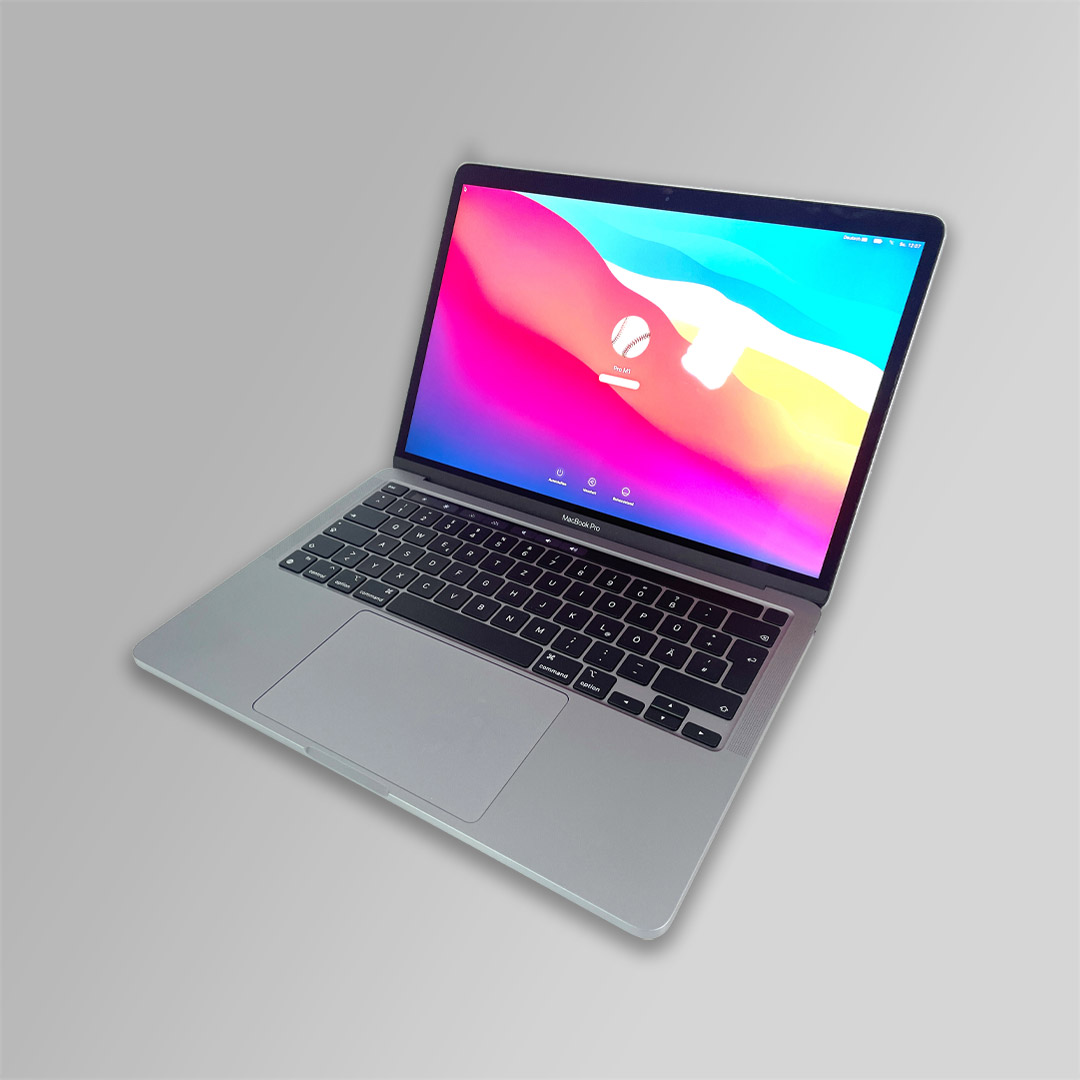
Laptops work much like desktop computers. They come with a Central Processing Unit (CPU) that stores, retrieves, and parses data. The operating system (OS) on the laptop manages the CPU and integrates the data parsing, storage, and retrieval functions with software and external devices.
With the CPU and the OS working together, the laptop’s user can access an array of functions including word processing, communications, gaming, accessing the internet.
Laptops vary widely in performance, which is usually measured by their processing power, random access memory (RAM), and storage. Those with lower performance are used for low-bandwidth recreational use, such as messaging and social media. In contrast, high-performance laptops are more suitable for different professional applications or uses that need high processing power, like gaming.
Microsoft Windows and Apple’s MacBook are examples of high-performance laptops. However, each is slightly better suited to different applications. Laptops running the Windows OS are designed for business use and programming, while Macs are better for creative processes, such as image, video, and audio editing.
3. Smartphones
Smartphones are handheld cell phones with the capabilities of a computer. These devices let you make phone calls and send text messages via your cellular network, connect to the internet, and access your personal and work-related apps.
View in gallery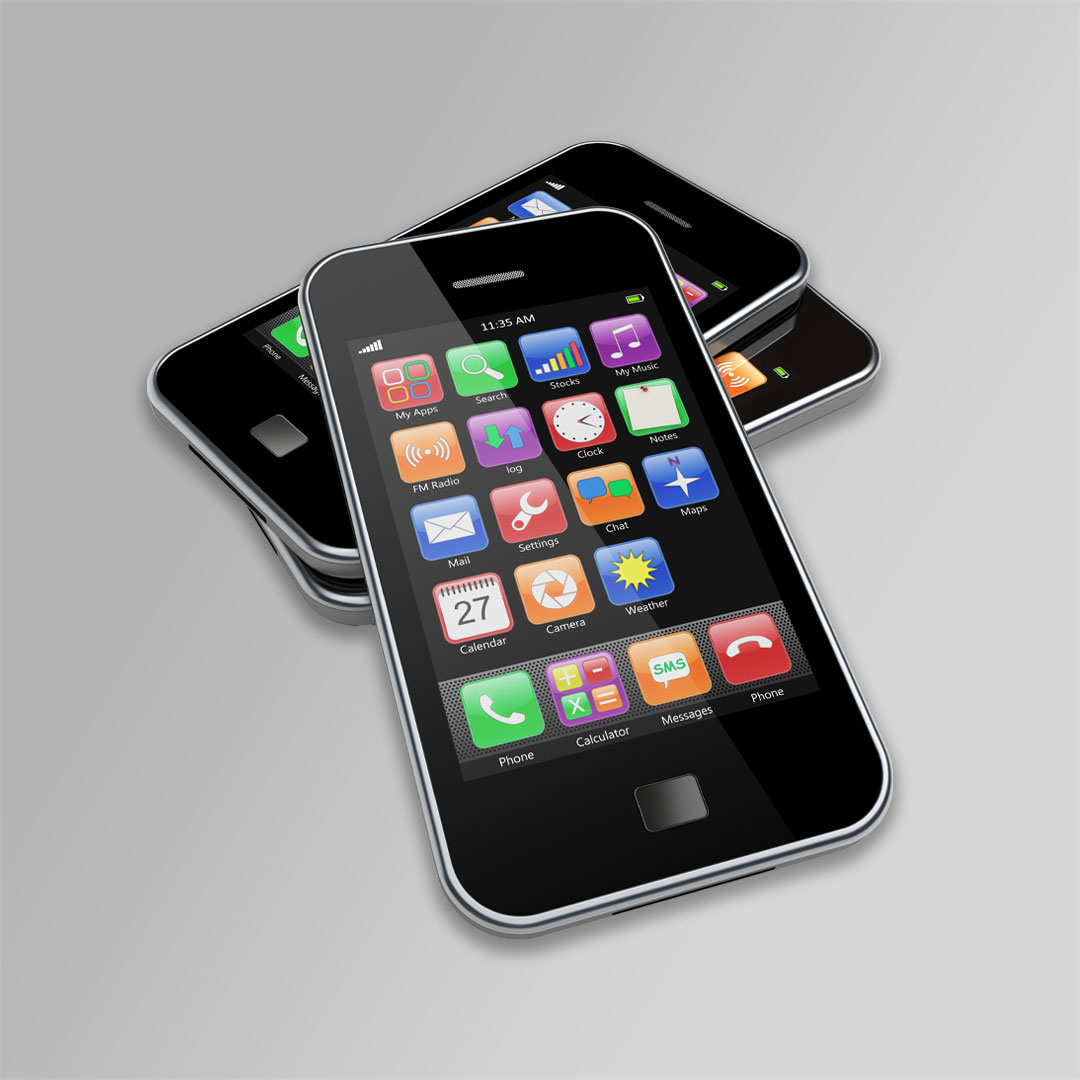
Smartphones normally consist of a single tablet with these key components:
- Touchscreen: The touchscreen has sensors that interpret finger motions on the screen. This lets you use your apps and type on the digital keyboard.
- Rechargeable battery: The rechargeable battery stores electricity that powers all of the smartphone’s parts.
- CPU: The Central Processing Unit stores, parses, and retrieves data, and basically serves as the “brain” for all your apps.
- Modem: The modem helps the smartphone receive and transmit wireless signal, so you can send and receive calls and messages over the cell and WiFi networks.
- Digital camera: Modern smartphones have digital cameras that let you capture photos and video in high resolution.
- Gyroscope and accelerometer: These mechanisms help the CPU understand and respond to your motions with the smartphone. For instance, they sense when you turn your phone horizontally and the CPU automatically rotates your screen orientation in response.
- Global Positioning System (GPS): Most modern smartphones have a GPS that helps pinpoint your exact geographic coordinates via satellite signal.
The complexity, quality, and performance of these vary quite a bit between smartphones. As a rule, models that are more complex and give you access to more features cost on the higher end of the price range.
Apple’s iPhone and Google’s Pixel are some of the most sophisticated – and priciest – of all smartphones, with superb processing power, large storage capacities, high-resolution cameras, and quality, long-lasting parts. Unsurprisingly, iPhones and Pixels are by far in the highest end of the smartphone pricing range. That said, all smartphone models tend to depreciate as new, more complex ones replace them.
4. Bluetooth headphones
Bluetooth headphones are wireless stereo headphones that connect to your audio output device via radio waves. The output device may be a smartphone, computer, or stereo system that comes with Bluetooth technology.
View in gallery
Bluetooth is a wireless process that uses ultra-high frequency (UFH) radio waves sent using low power to transmit data. Both your output device and Bluetooth headphones are equipped with transmitters and receivers that facilitate the transfer of radio waves when you listen to audio. Upon receipt of the waves, the headphones convert their electromagnetic energy into sound by creating vibrations in the air.
Since their transmission power doesn’t exceed 2.5 milliwatts, Bluetooth waves only travel short distances of roughly 30 feet. This distance limitation means that your output device and the Bluetooth headphones must be in close proximity to work without interruption.
Most people use Bluetooth headphones to listen to audio privately. The audio may include music, podcasts, or other parties speaking during a call. These wireless headphones have gained popularity because they don’t constrain your movement by a wire. Today, they have largely replaced their wired counterparts in home and professional settings.
JBL Tune series features some of the most popular Bluetooth headphones on the market. These headphones’ convenient features, such as foldability, active noise-canceling, and long battery life, drive their popularity and justify the hefty price tag.
5. VR headsets
A VR headset (short for “Virtual Reality headset”) is a head-worn, head-up display that gives you a 3D, first-person view of interactive, simulated surroundings. The headset may generate experiences that include video, audio, and an imitated environment you can interact with.
View in gallery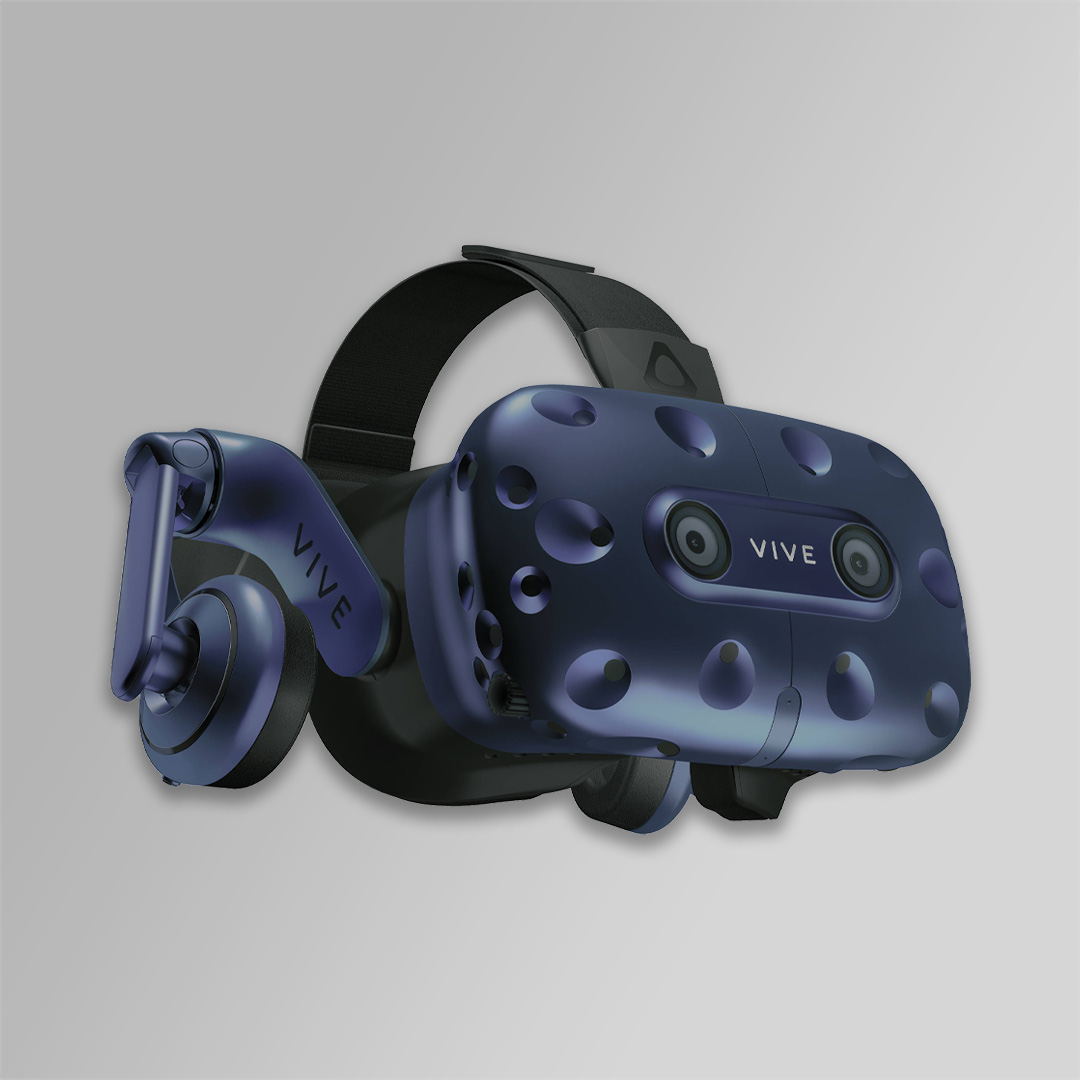
VR headsets work by producing audio-visual content using a CPU, then displaying it in a way that immerses you in a 3D, interactive environment. Here are the six key components that make VR headsets work:
- Screens: The screens project video content for you.
- Stereoscopic lenses: These lenses show the image displayed on the screen separately to your two eyes. This distorts the image, so you see it in 3D.
- Stereo audio headphones: This system consists of two speakers that play separate audio channels, giving the sound you hear a dimensional quality.
- Sensors: Head tracking technology, gyroscopes, accelerometers, and eye sensors capture your movements and adjust the video and audio outputs accordingly. This makes you feel like you actually occupy the virtual environment.
- Controls: Controls allow you to manipulate and navigate the simulated surroundings.
- CPU: The CPU processes, stores, and retrieves data as it integrates the functions of the video and audio output, sensors, and controls. Some VR headsets do not have an integral CPU, and instead connect to a computer or smartphone wirelessly.
VR headsets see both personal and professional use. Gamers use these headsets for a more realistic and engaging experience, as do people watching movies and shows. In the workplace, VR headsets mainly serve as simulators for trainees.
Meta Quest is a prime example of a VR headset. The model is particularly well-liked for its user-friendly setup and extensive game library. That said, its performance on the market has been underwhelming and Meta is discontinuing some of the models in this series.
6. Digital cameras
Digital cameras are devices that take photos in a digital format. Unlike film cameras, they use electronic sensors to record images, which you can store, view, and edit on a computer.
View in gallery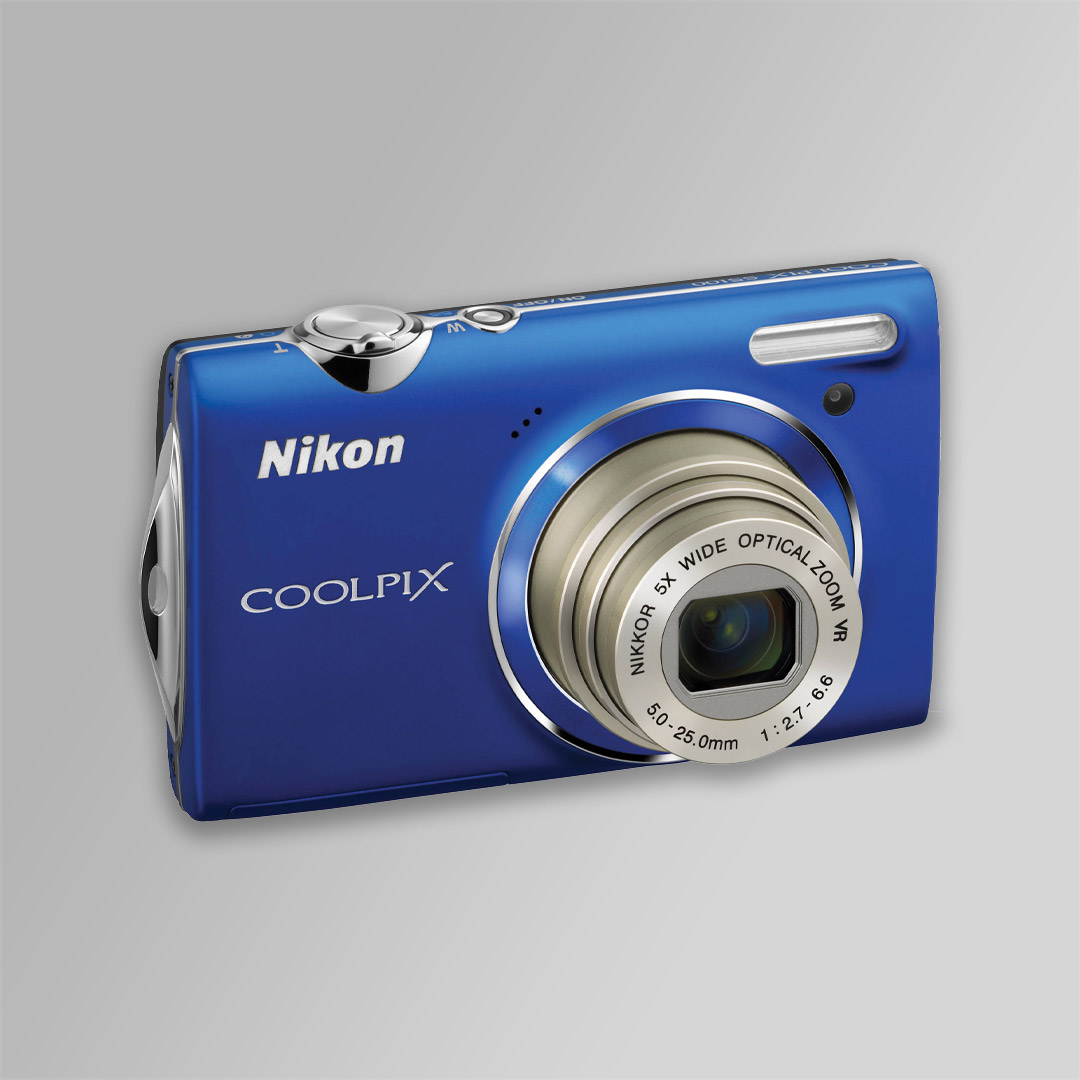
When you take a photo, your digital camera captures light through a lens and sensor, then converts it into a digital photo with a processor. The exact image-recording process varies depending on the camera type you’ve got, since point-and-shoot, DSLR, and mirrorless cameras have slightly different parts.
Apart from type, digital cameras vary in sensor size, resolution, zoom, and ability to handle different lighting conditions. These factors directly impact image quality. Generally, cameras with large sensors, high megapixel counts, and those that adapt to poor lighting produce the best-quality photos.
Most modern digital cameras allow you to use optical zoom, stabilize the image, shoot with different modes, and record video. The higher-end models come with handy touchscreen displays and let you connect the camera to a computer via WiFi.
Canon EOS series digital cameras are some of the most popular on the market. They produce high-resolution images and have a range of setting options and controls that are handy whether you’re an amateur or professional photographer.
7. Smart speakers
Smart speakers are voice-activated gadgets that play audio and give you control over your smart home setup. They’re usually compact devices that consist of a speaker, a microphone, and a wireless connectivity interface.
View in gallery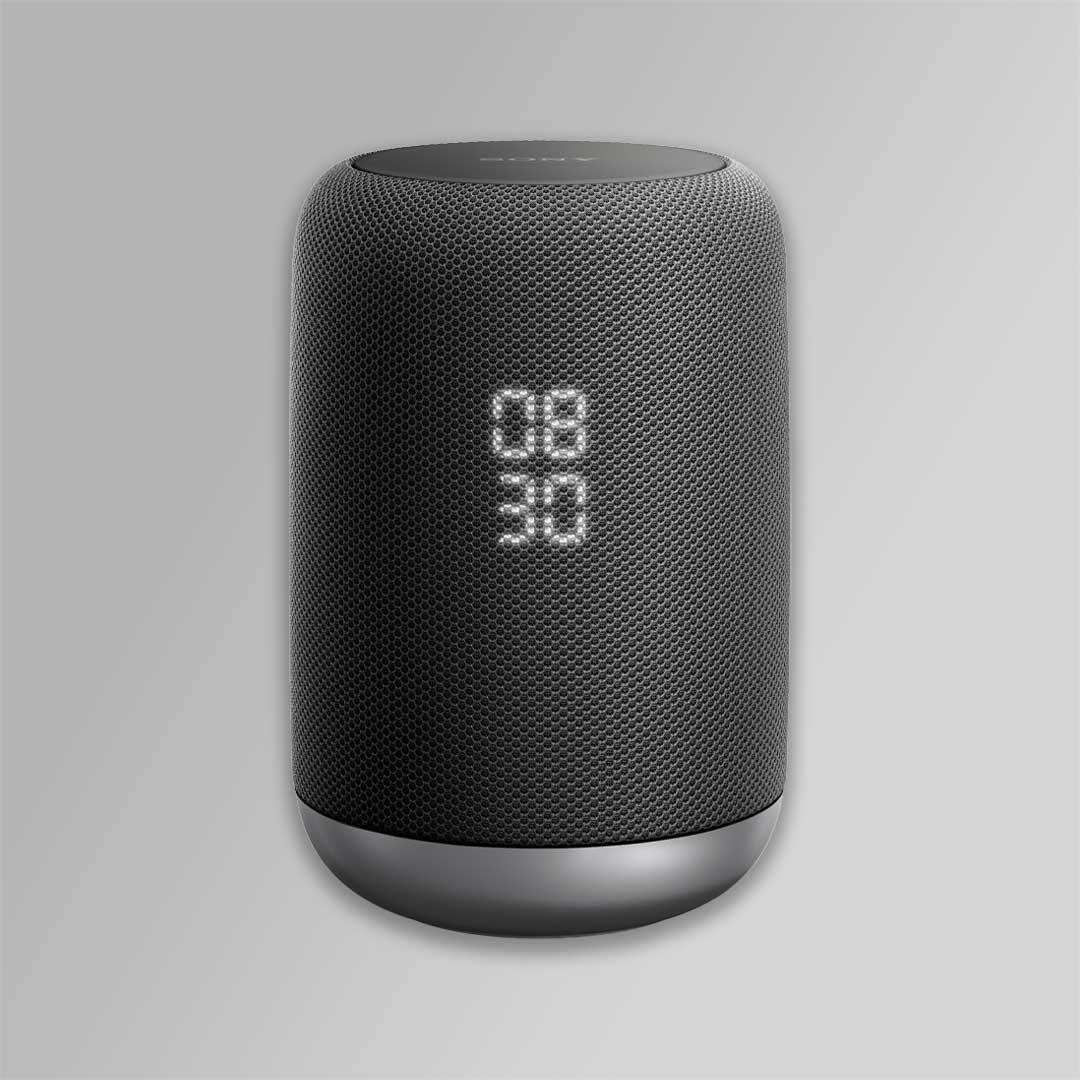
Smart speakers work by letting you communicate with a digital assistant, such as Amazon’s Alexa or Google’s Siri. These assistants listen to your verbal commands, and then relay them to the appropriate connected devices for execution. This way, smart speakers let you play music, control lighting and heating, and give access to real-time information (like news and weather) – without you having to touch the controls. The more advanced models even let you ask difficult questions or set reminders, the way AI assistants do.
These devices differ in their audio quality, how well they recognize your voice, and how many smart home devices they work with. Top-tier models – Like Amazon’s Echo or Google’s Nest Audio – will discern your and your family’s voices with ease and give you hands-free control over the home’s lighting, heating, stereo, and security systems. Of course, such high performance means that these speakers have a hefty price tag.
8. Smartwatches
A smartwatch is a wrist-worn mini-computer that lets you track health data, access apps, send messages, and surf the web. A typical smartwatch has a touchscreen that shows you the time, date, messages, and the browser window, along with physical buttons for app-switching or scrolling.
View in gallery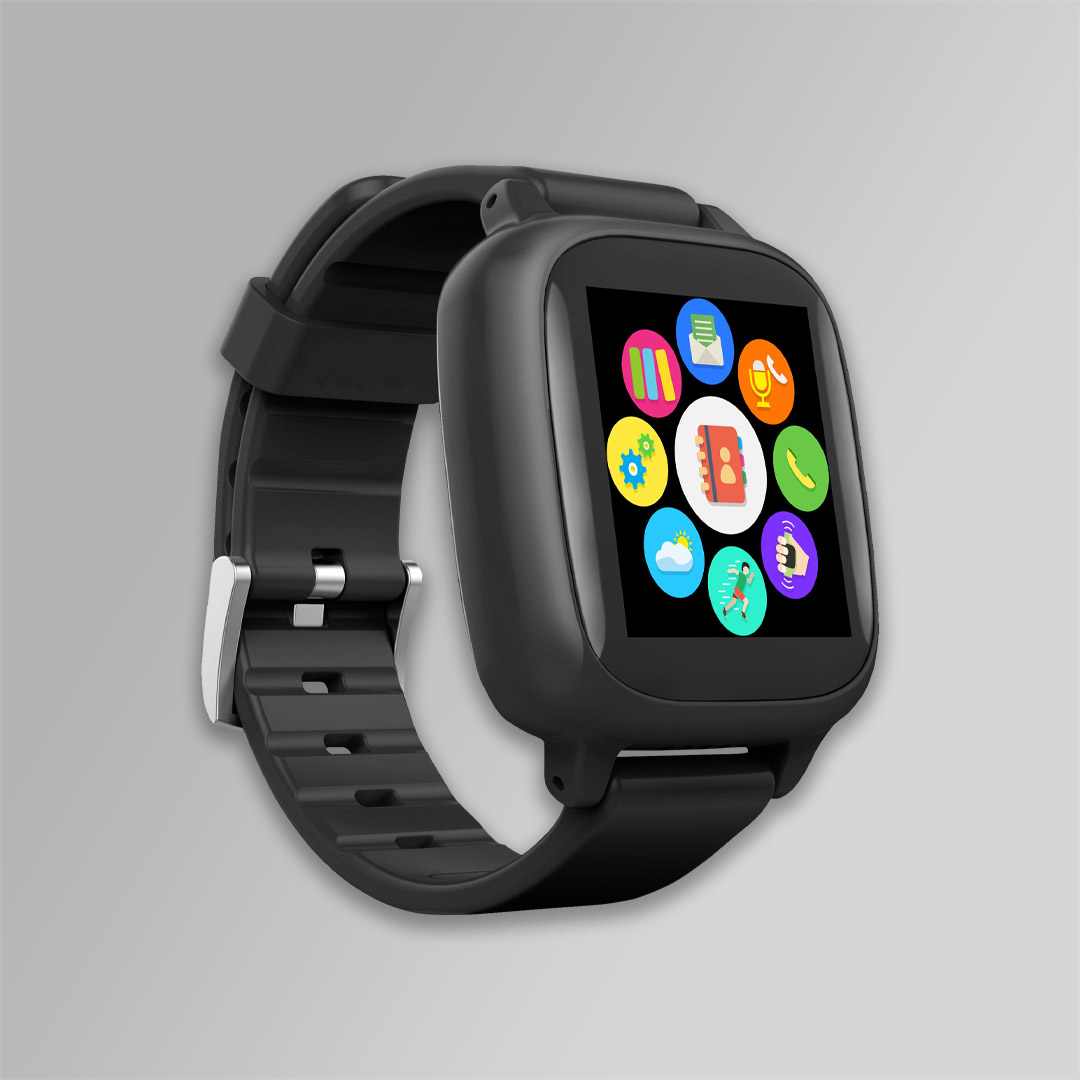
Like a smartphone, a smartwatch has a CPU and memory storage which let you run apps and store data. However, you have to connect the watch to a smartphone or computer if you need to receive messages and control music playback.
Unlike smartphones, smartwatches are optimized for health and fitness tracking instead of communications. Their location on your wrist helps them measure your heart rate and body temperature and count your steps.
Smartwatches of different brands and models vary quite a bit in what they can do. For instance, basic models offer simple messaging and basic health tracking. Meanwhile, the more advanced and pricier versions may let you make mobile payments, monitor complex wellness data, and connect to cellular networks so you don’t need to pair them with a phone or laptop. The industry-leading Apple Watch even takes electrocardiograms and tracks your menstrual cycle. These advanced features drive up the watch’s price, with newer models costing around $1,000.
9. Robot vacuums
Robot vacuums are devices that clean your floors with no input from you whatsoever.
View in gallery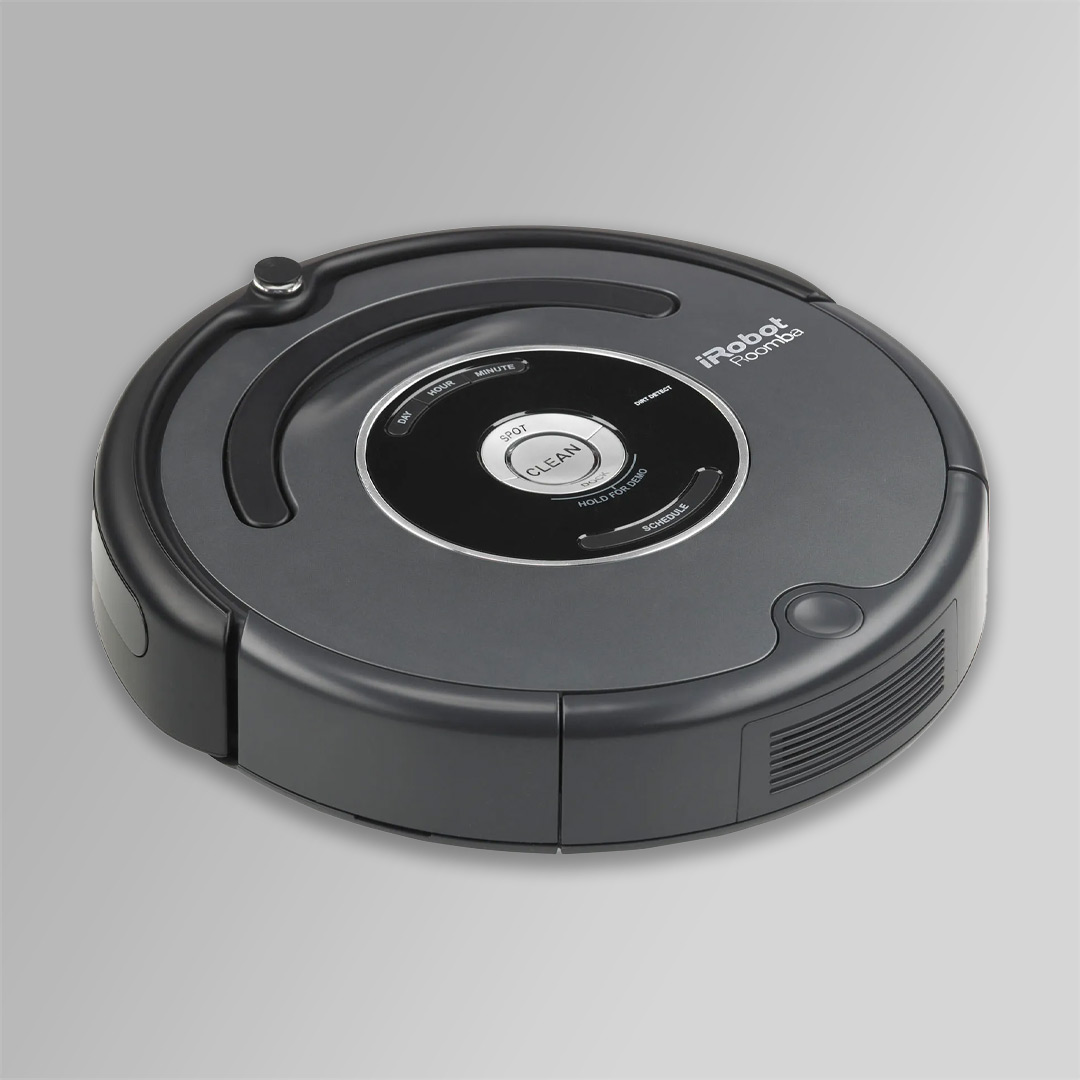
A robot vacuum uses suction mechanisms, brushes, and filters to clean. These vacuums use internal computers, sensors, cameras, or lasers to help them find their way around living spaces, avoid obstacles, and ensure they don’t miss any spots while cleaning. Some robot vacuums are even smart enough to return to their charging dock without your help.
Robot vacuum models vary in intelligence, battery life, and how well they clean. High-end models, like the iRobot Roomba, pick up dirt quickly and effectively, last long between charges, and work with most voice assistants. Compared to other smart devices, robot vacuums don’t cost too much. For example, a premium model like the Roomba goes for about $200-$300 online.
10. Video game consoles
Video game consoles are specialized electronic systems that enable interactive video gaming and smart TV control. These gadgets typically connect to a display and come with hardware optimized for rendering high-quality graphics and audio. Video game consoles have revolutionized the world of gaming and entertainment by making user controls more simple and synergistic.
View in gallery
Video game consoles work by processing graphic and audio data through their CPU and graphics processing unit (GPU). The CPU handles the system operations and game logic, while the GPU renders the game’s visual elements. Game controllers (which may be wired or wireless) allow players to interact with the game by sending their input signals to the console. Modern consoles often include network connectivity, which allows online gaming and gives the user control over streaming services on their smart TV.
Game console models vary in processing capabilities, graphics quality, and exclusive content. High-end consoles offer more powerful processors, superior graphics rendering, and a wider selection of exclusive games in exchange for premium pricing.
Sony’s PlayStation and Microsoft’s Xbox are the most popular gaming consoles. The PlayStation is known for a large selection of exclusive games and a user-friendly interface, while the Xbox is acclaimed for its integration with other Microsoft services.
11. Mini projectors
Mini-projectors are compact devices that project video and images onto a flat surface. Unlike traditional projectors, their small size allows for quick reconfiguration of your entertainment system and portability on the go.
View in gallery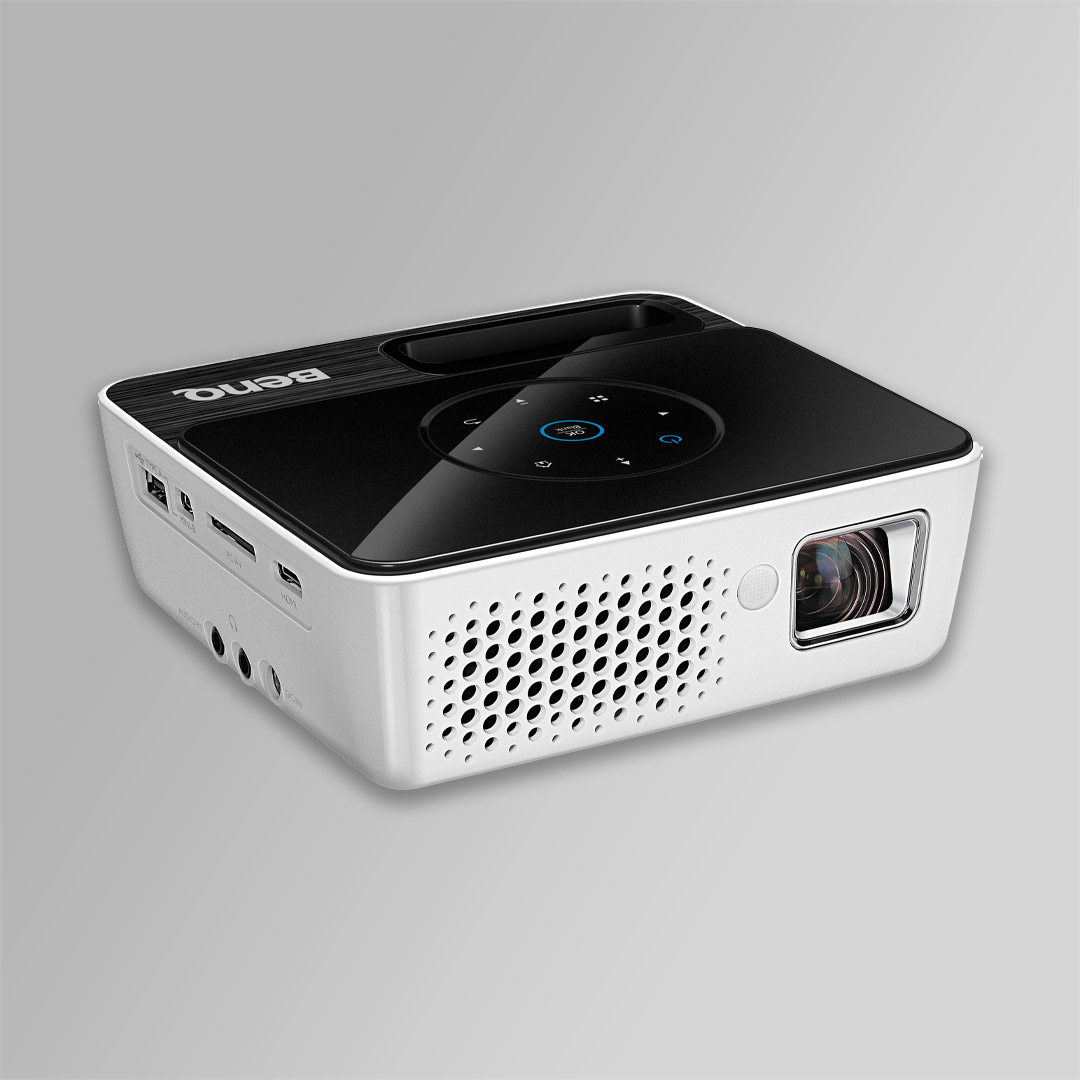
Mini-projectors use a light source to project an image through a lens. The light (which can be LED or a laser) illuminates a digital image, which then gets magnified and projected onto a screen.
Mini-projectors usually come with several handy features. Some have built-in speakers, which let you play audio at your presentations. Most mini-projectors allow connections via HDMI, USB, Bluetooth, and Wi-Fi, so you can connect them to laptops, smartphones, or media players.
The best mini-projector models have batteries. Not having to rely on an outlet for power makes it easier for you to transport them and allows you to run a presentation pretty much anywhere.
Brightness, resolution, battery life, and connectivity are the key quality differentiators among mini-projector models. Expensive models usually offer bright projection, high resolution, long battery life, and more connection options, and are usually more suitable for different environments.
The Anker Nebula Capsule is one of the most popular mini-projectors you’ll find on the market. It comes with an Android OS interface and is highly portable.
12. High-end Bluetooth speakers
High-end Bluetooth speakers are premium audio devices known for superior sound quality and advanced features. They are designed for audiophiles and enthusiasts who seek an enhanced listening experience in a wireless format.
View in gallery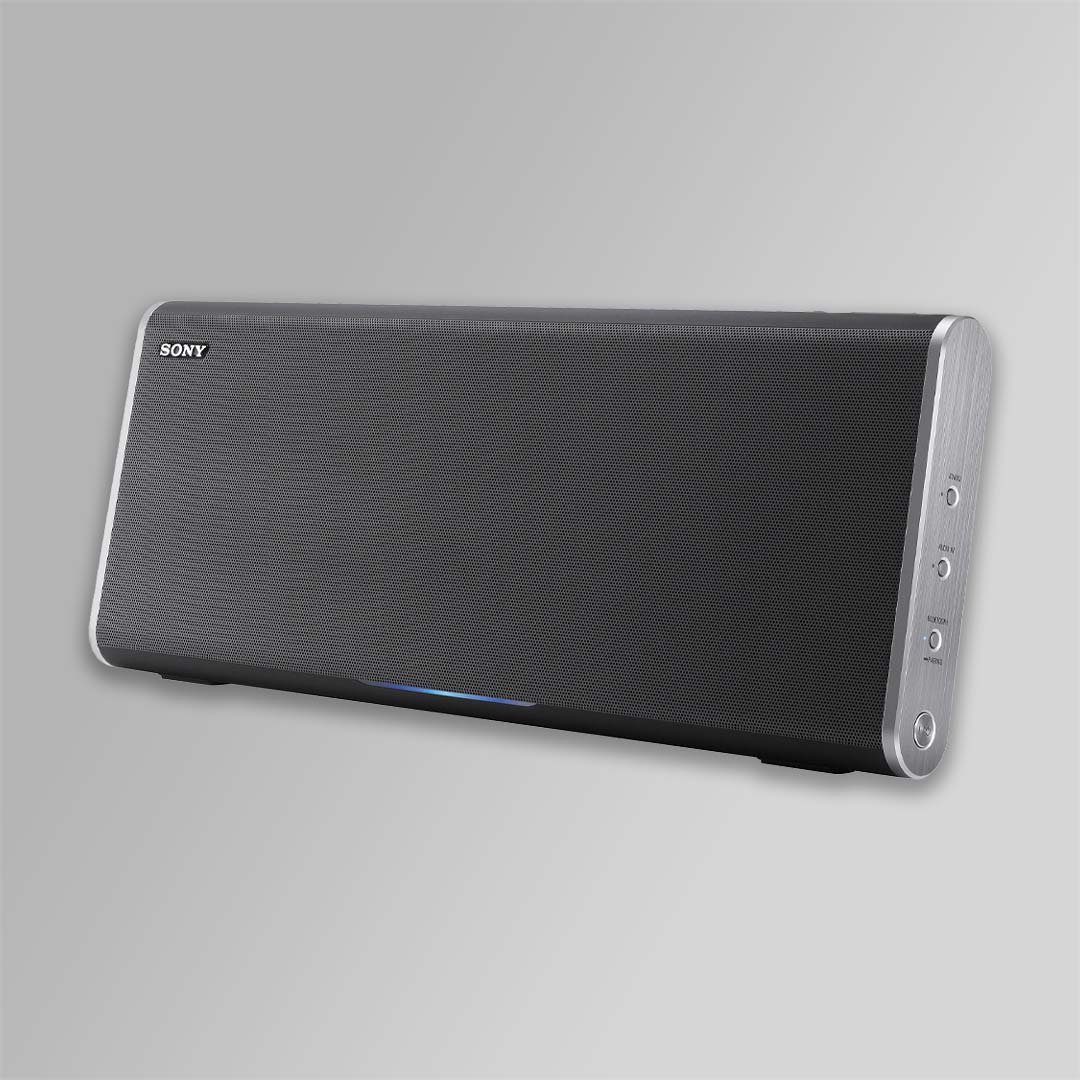
These speakers operate by receiving audio signals via Bluetooth from compatible devices like smartphones, tablets, or laptops. Inside, a combination of amplifiers and drivers converts these signals into sound. High-quality components and engineering ensure minimal signal loss and distortion, resulting in clearer, richer, and more nuanced audio output. Many high-end Bluetooth speakers include additional features like water resistance, multi-room connectivity, and voice-assistant integration, offering both versatility and convenience.
Variations among these speakers include sound output quality, battery life, design aesthetics, and additional functionalities. The more sophisticated models provide deeper bass, crisper highs, longer playtime, and elegant designs that complement modern interiors.
Notable entries in the high-end Bluetooth speaker category include the Bose SoundLink Revolve and the Bang & Olufsen Beoplay A1. The SoundLink Revolve is acclaimed for its 360-degree sound and robust build, while the Beoplay A1 impresses with its exceptional sound quality and sleek, portable design.
13. Surf watches
Surf watches are specialized timepieces designed for surfers and swimmers to monitor ocean conditions. These durable and waterproof watches offer a unique combination of timekeeping and environmental tracking features. Surf watches integrate pre-programmed data with real-time measurements to offer surfers a comprehensive overview of ocean conditions, enhancing their surfing experience and safety.
View in gallery
Surf watches gather oceanographic data primarily through a combination of pre-programmed tide tables, GPS technology, and onboard sensors. The tide tables are usually pre-loaded into the watch’s memory, and provide predictions of high and low tides based on historical data of specific surf locations. This feature is particularly useful for surfers, swimmers, kayakkers, and even fishers to plan their sessions around optimal tide conditions. The GPS functionality enables precise location tracking, which not only helps in validating the tide information for the current location but also tracks the surfer’s movements in the water. Some advanced surf watches are equipped with sensors that measure water temperature and other real-time environmental conditions, such as wave height and wind speed.
Variations among surf watches entail varying degress of the accuracy of tide data, battery life, as well as additional functionalities like wave tracking and wireless connectivity. Advanced models provide more precise and location-specific tide information, longer-lasting batteries, and the ability to sync data with smartphones for detailed analysis of surfing sessions.
The Garmin Instinct Solar Surf is a leading example of a surf watch. It stands out for its detailed insights into environmental conditions such as wave height, wind speed, and barometric pressure. These features, combined with its robust GPS capabilities, allow surfers to analyze their performance in different sea conditions comprehensively. Additionally, the watch’s solar charging feature ensures prolonged usage, making it ideal for extended surfing sessions and outdoor activities.
14. Essential oil diffusers
Essential oil diffusers are devices that spray essential oils into the air as a mist that creates a pleasant scent in the space. Some believe that it also has therapeutic properties.
View in gallery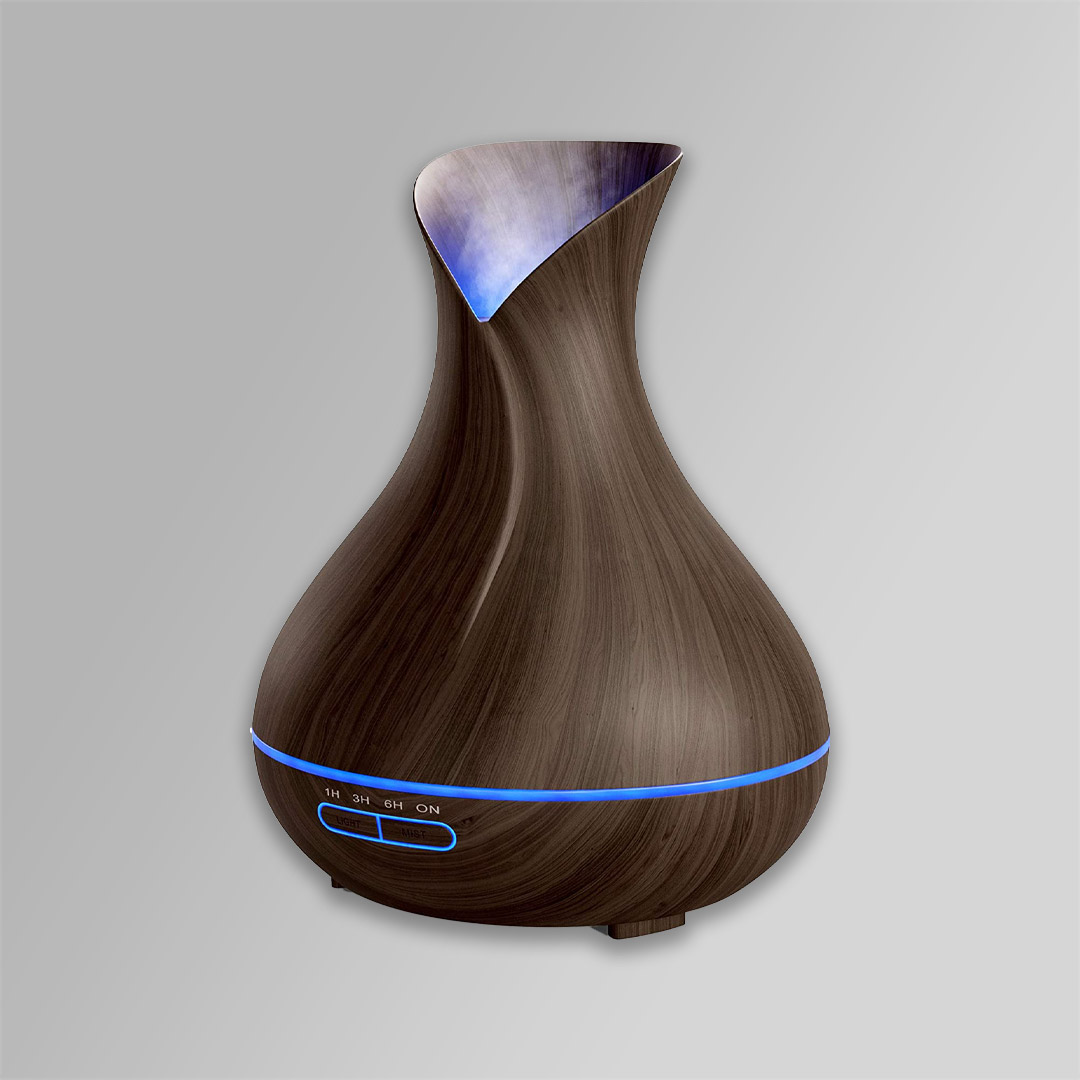
Essential oil diffusers work by breaking down the oils into tiny molecules and spraying them into the air. The diffusion method can be ultrasonic, nebulizing, or heat-based.
Ultrasonic essential oil diffusers vibrate the oil at ultrasonic speeds to create a mist, and this mist then carries the oils into the space where you’re using the diffuser. Nebulizing diffusers have an atomizer that creates a mist from the oil. You’ll find that this type of diffuser generates a very potent scent compared to the other two. Heat diffusers warm up the oil to release their fragrance into the living space.
Regardless of the diffusion method, all essential oil diffusers also vary based on capacity, runtime, lighting, and timer settings. Pricier models can handle more oil, run longer, and have more settings that you can customize.
One of the most popular examples of an essential oil diffuser is the Vitrovi Stone Diffuser, which has a highly efficient ultrasonic diffuser and an elegant design.
15. Electric razors
Electric razors are devices designed for shaving or trimming hair through the use of small, powered blades. They come in various styles, including foil and rotary designs, catering to different skin types and shaving preferences.
View in gallery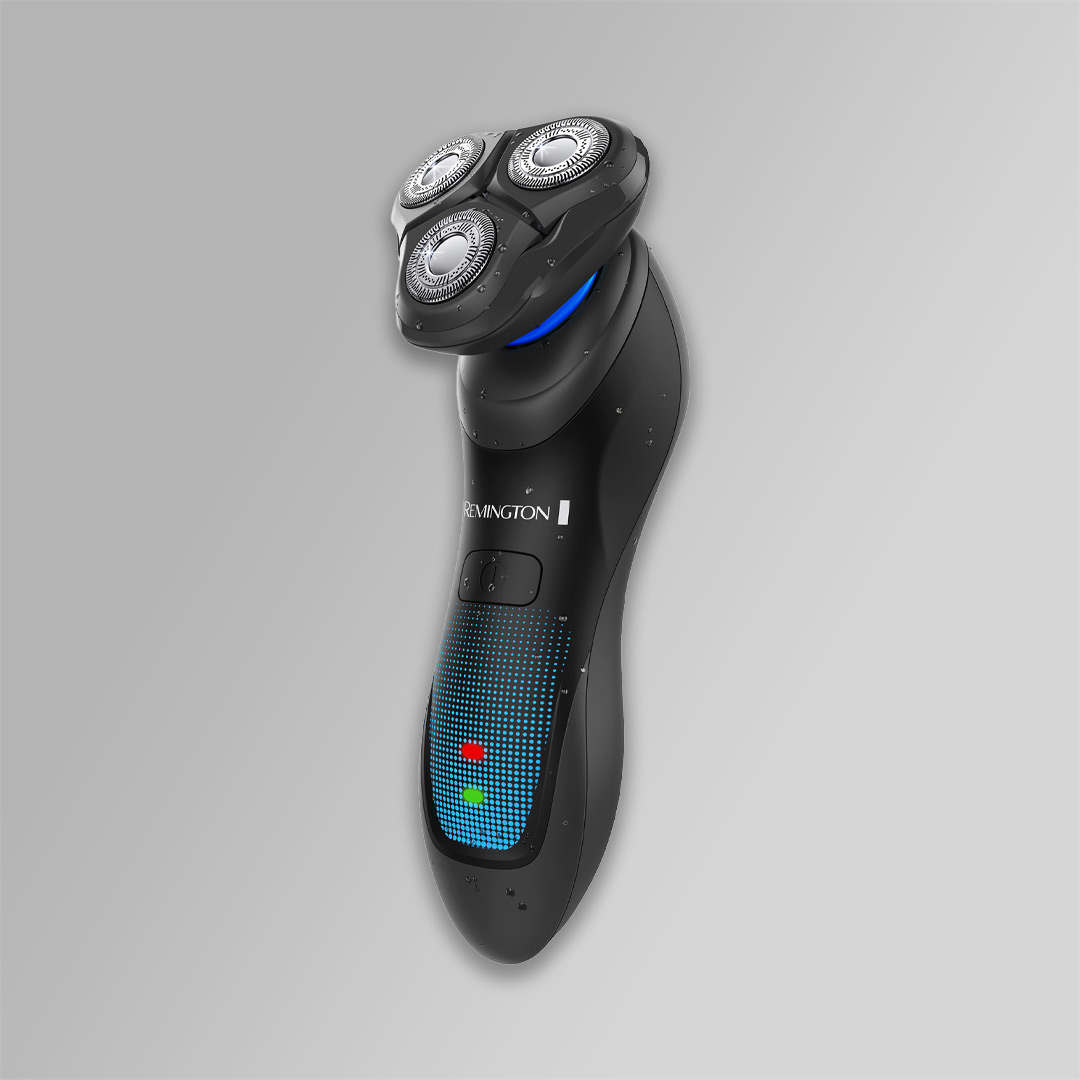
Electric razors operate by using rapidly moving blades to cut hair. Foil razors use a thin layer of metal (the foil) that covers the oscillating blades, protecting the skin and providing a close shave. Rotary razors, alternatively, use circular blades in a flexible head to adapt to facial contours. These razors are often powered by rechargeable batteries and may include features like adjustable power settings, waterproof design, and various attachments for different shaving lengths. The combination of precision blades and motorized operation allows for a quick, efficient shave without the need for traditional shaving creams or water, making electric razors convenient for both wet and dry use.
Variations in electric razors include blade design, motor speed, battery life, and additional functionalities such as skin sensitivity adjustments and integrated cleaning systems. High-end models offer a more comfortable shave with advanced features like flexible heads that better adapt to facial contours and more robust battery life for extended use.
Leading models in this category of razors include the Braun Series 9 and the Philips Norelco Shaver. The Braun Series 9 is recognized for its exceptional closeness and comfort during shaving, while the Philips Norelco excels in versatility and adaptability to different hair types and lengths.
16. VHS-to-DVD converters
VHS-to-DVD converters are devices designed to transfer the content of VHS tapes to DVDs. These converters are essential for preserving old videotapes in a more durable and modern digital format.
View in gallery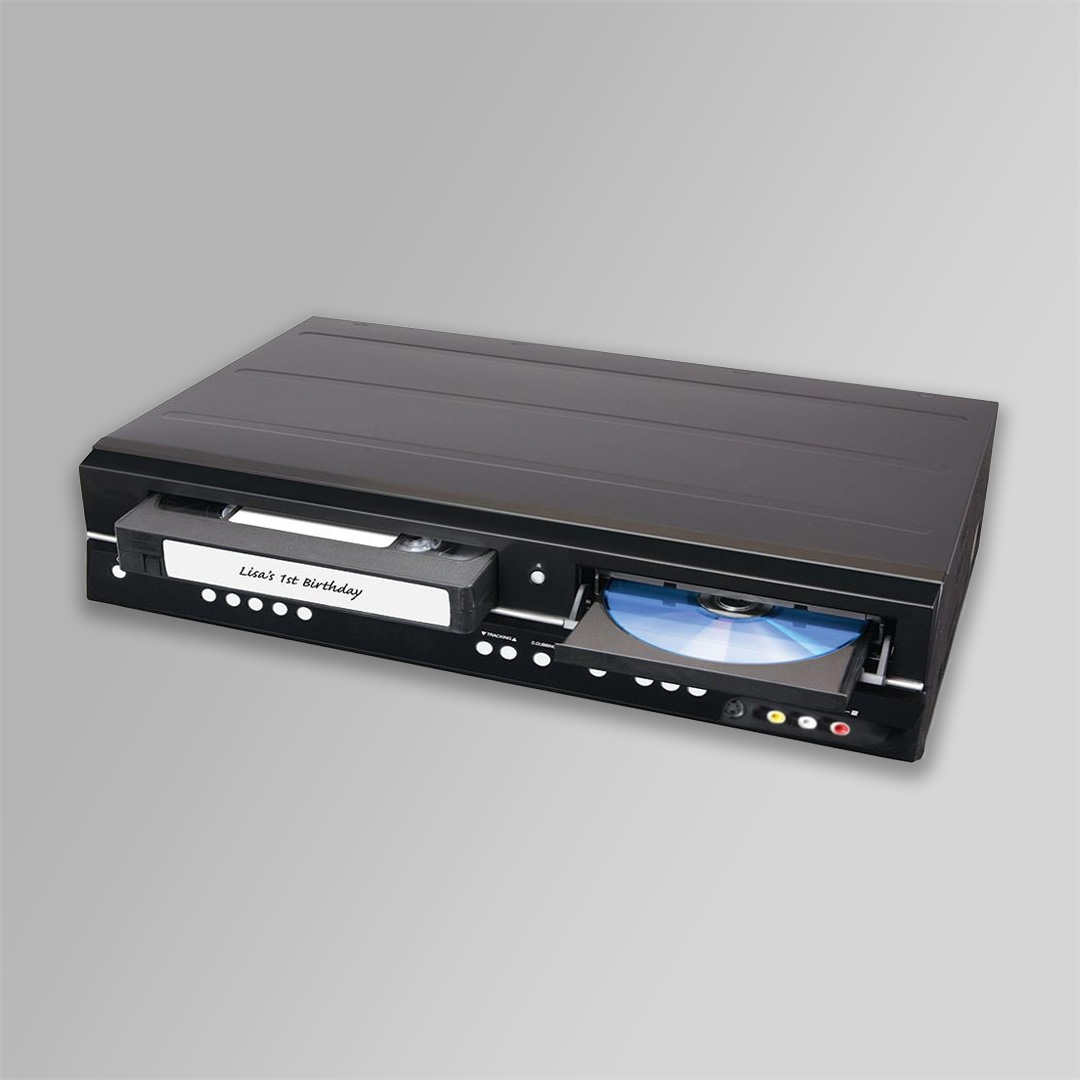
VHS-to-DVD converters work by digitizing the analog signal from a VHS tape. The process involves playing the VHS tape in a VCR (or a similar playback device) connected to the converter. The converter captures the analog video and audio signals from the VHS, converting them into a digital format. This digital format can be directly burned onto a DVD if the converter has an in-built DVD writer, or saved onto a computer for later burning or editing. This conversion process not only preserves the content of old VHS tapes but often improves the video quality and allows for the addition of digital features like menus and chapters.
Variations among these converters include the quality of the conversion, the speed of transfer, compatibility with various formats, and additional editing features. Higher-end models offer higher resolution conversion, faster processing speeds, and more comprehensive editing tools, providing a more polished and versatile end product.
Popular models of VHS-to-DVD converters include the Elgato Video Capture and the Roxio Easy VHS to DVD. The Elgato is known for its user-friendly interface and high-quality video capture, while the Roxio offers extensive editing tools and versatile output format options.
17. Bread machines
Bread machines are kitchen appliances designed to bake bread automatically. They combine convenience with the ability to produce freshly baked bread at home, offering various settings for different bread types.
View in gallery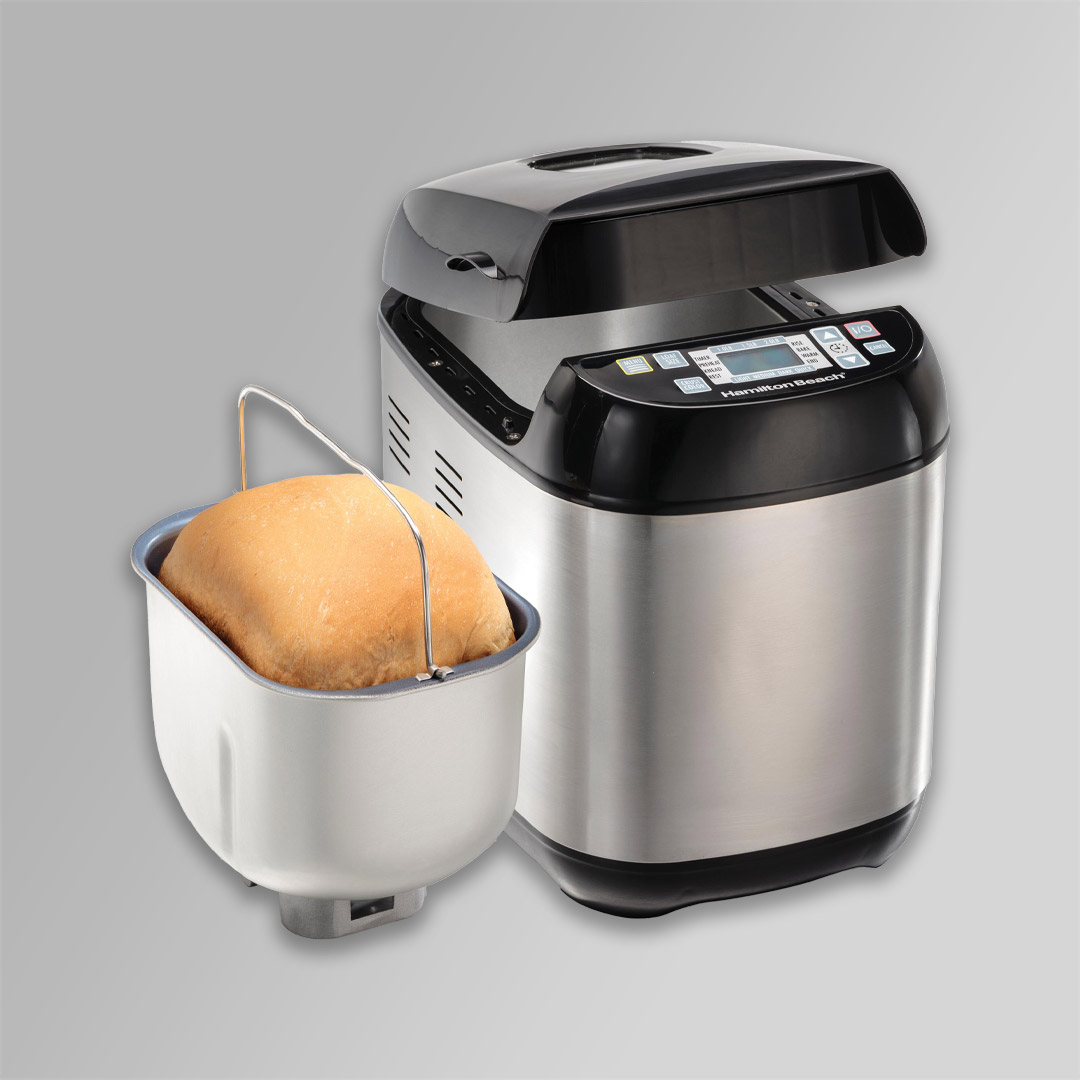
Bread machines typically consist of a bread pan with a built-in paddle at the bottom. The user adds ingredients (such as flour, water, yeast, and other components) directly into the pan. The machine then automatically mixes the ingredients, kneads the dough, allows it to rise, and finally bakes it at the idea temperature and time. Many models feature programmable settings to accommodate different types of bread, such as whole wheat, gluten-free, or French bread, and include options for crust color and loaf size. This automation simplifies the bread-making process, making it accessible and convenient for home bakers of all skill levels.
Variations among bread machines include loaf size options, number of programmable settings, speed of baking cycles, and additional features like delay timers and keep-warm functions. Higher-end models offer greater versatility with a wider range of settings and options, allowing for more customization of the bread-making process.
Popular models of bread machines include the Zojirushi Virtuoso Plus and the Cuisinart Convection Bread Maker. The Zojirushi is acclaimed for its consistent results and custom settings, while the Cuisinart stands out for its convection baking feature, which ensures even baking and superior crust quality.
18. MP3 players
MP3 players are portable electronic devices specifically designed for storing and playing audio files in the MP3 format. They range from simple, budget-friendly models to more advanced devices with extensive features.
View in gallery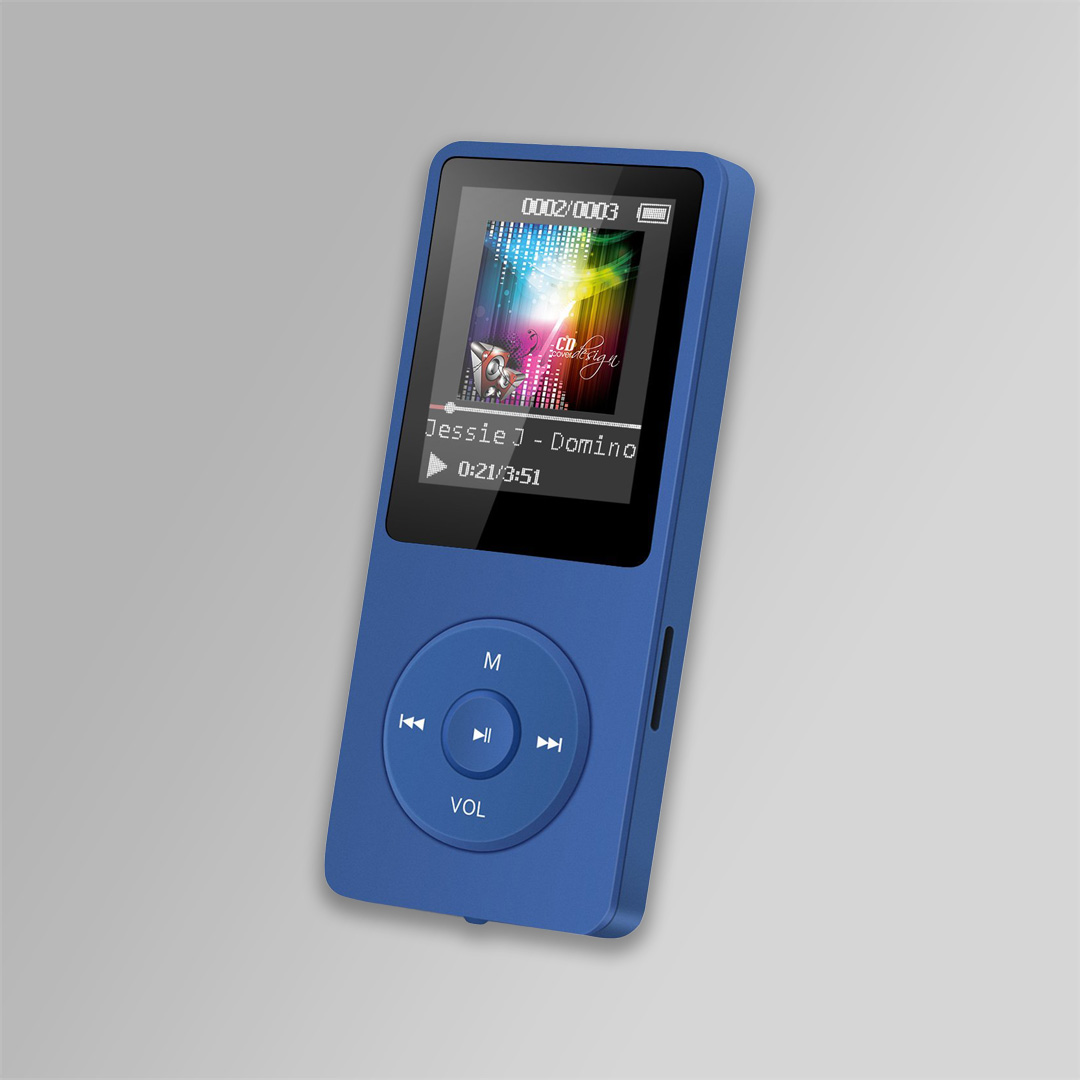
MP3 players operate by storing digital audio files on internal or external memory. Users can transfer audio files, typically in MP3 format, from computers or online sources to the player. These devices use an audio decoder chip to convert digital files into sound, which is then output through headphones or speakers. Advanced models may include features such as Bluetooth connectivity for wireless listening, built-in FM radios, and the ability to play various other audio formats. The compact and lightweight design of MP3 players, coupled with their storage capacity and battery life, makes them ideal for enjoying music on the go without the need for a constant internet connection.
Variations among MP3 players include storage capacity, audio quality, battery life, and additional functionalities like touchscreens and water resistance. High-end models offer larger storage, higher audio resolution, longer battery life, and more robust features for an enhanced listening experience.
Notable MP3 player models include the Apple iPod and the Sony Walkman. The iPod, particularly renowned for its user-friendly interface and integration with iTunes, revolutionized the way music is consumed. The Sony Walkman offers high-resolution audio support and robust build quality, appealing to audiophiles and those seeking a premium audio experience on the go.
19. Noise-canceling headphones
Noise-canceling headphones are headphones that reduce unwanted ambient sounds using active noise control. This feature makes them ideal for use in noisy environments like airplanes, public transport, or crowded areas.
View in gallery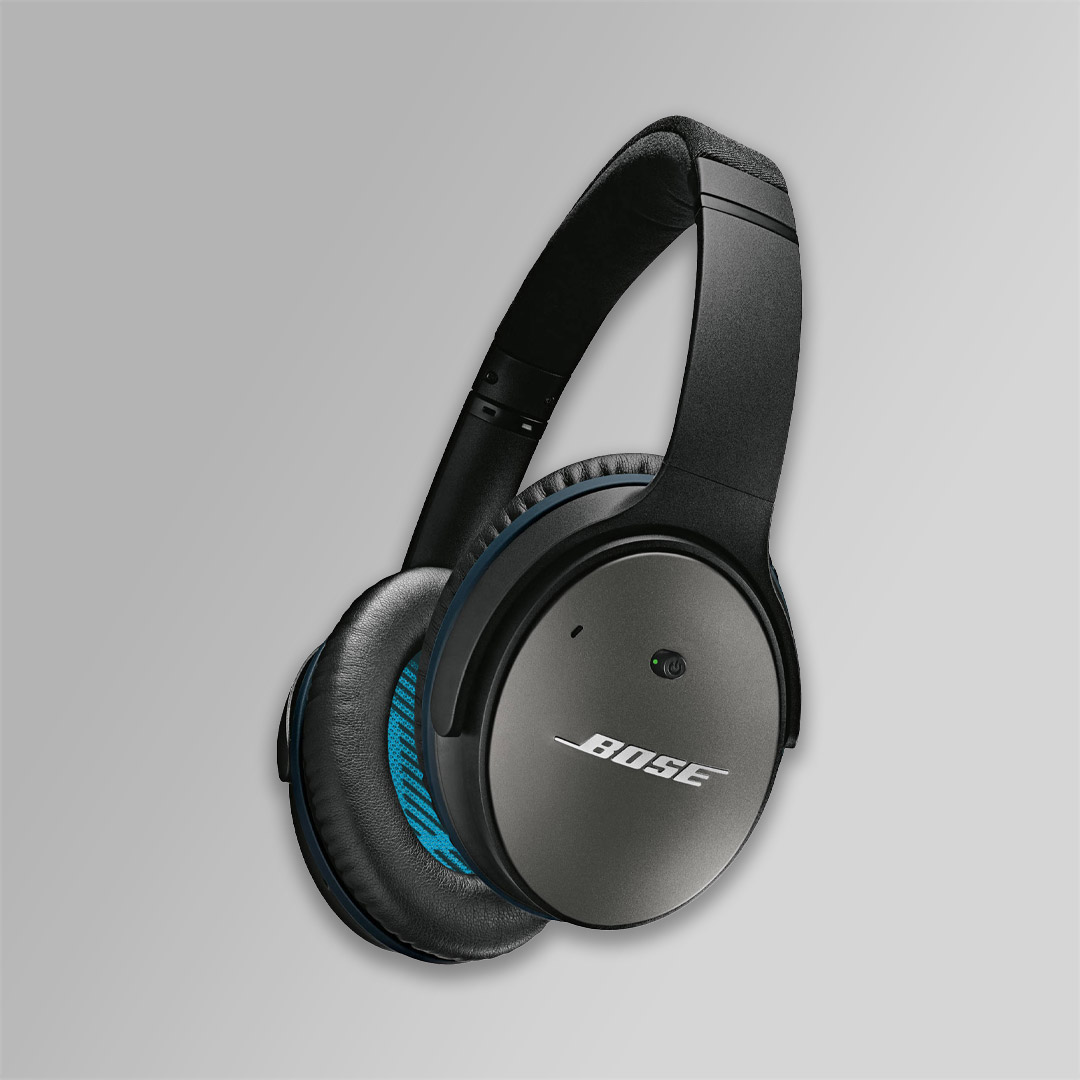
Noise-canceling headphones detect external sounds with built-in microphones and generating a sound wave that is the exact negative (or opposite) of the ambient noise. This process, known as active noise cancellation (ANC), effectively cancels out the external noise before it reaches the ear. In addition to ANC, these headphones typically include sound insulation materials for passive noise reduction. They may offer various modes of noise cancellation, allowing users to adjust the level of active cancellation to suit their environment. Some models also provide additional features like Bluetooth connectivity for wireless use, built-in voice assistants, and adjustable sound profiles for a personalized listening experience.
Variations among noise-canceling headphones include the effectiveness of noise cancellation, audio quality, battery life, and comfort. Higher-end models offer more effective noise cancellation, superior audio fidelity, longer battery duration, and ergonomic designs for extended wear.
Prominent noise-canceling headphones include the Bose QuietComfort and the Sony WH-1000XM4. The Bose QuietComfort is known for its exceptional comfort and noise cancellation effectiveness, while the Sony WH-1000XM4 stands out for its advanced audio technology and smart features like adaptive sound control.
20. Baby monitors
Baby monitors are electronic devices designed to help parents or caregivers keep an ear or eye on infants while they are in a different room. These devices have evolved from simple audio monitors to sophisticated systems with video and connected features.
View in gallery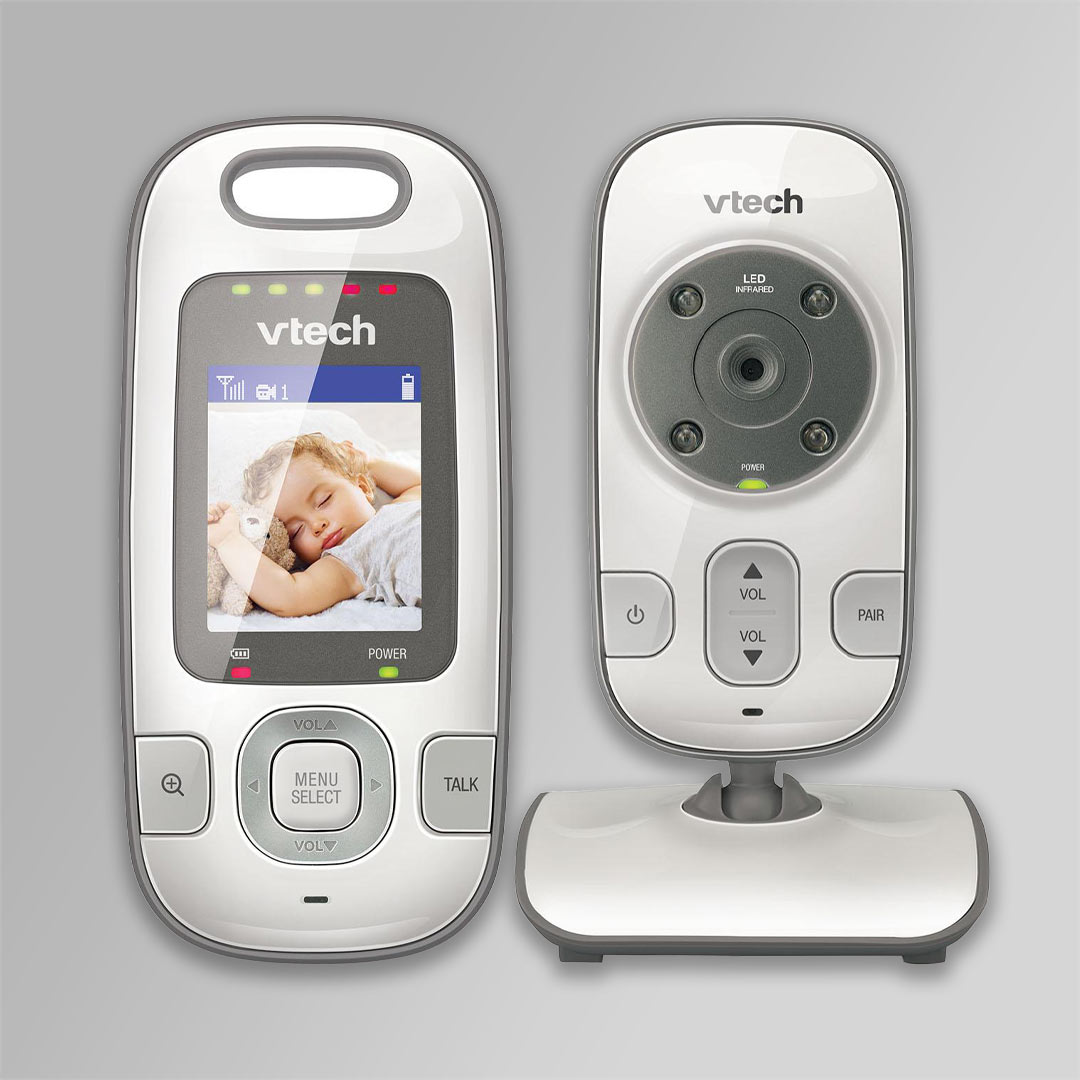
Baby monitors function by transmitting audio and, in many cases, video from a camera unit in the baby’s room to a parent unit or a connected mobile device. Audio monitors use a microphone and speaker system to capture and relay sounds, allowing caregivers to hear when a baby cries or stirs. Video monitors add a camera, often with night vision capabilities, to transmit a live feed of the baby’s room. Advanced models incorporate features like two-way audio, allowing parents to speak back to the baby, temperature sensors to monitor room conditions, and motion detection to alert caregivers of any unusual activity. Some high-tech versions can even track the baby’s breathing and movements, offering additional peace of mind.
Variations among baby monitors include the range of transmission, quality of audio and video, connectivity options, and additional monitoring features. High-end models provide clearer audio and video, wider transmission range, and more reliable connectivity, along with extra features like remote camera control and data encryption for security.
Popular baby monitors include the Infant Optics DXR-8 and the Nanit Plus. The Infant Optics DXR-8 is praised for its reliability and a dedicated monitor that doesn’t rely on internet connectivity, while the Nanit Plus stands out for its comprehensive monitoring that includes sleep tracking and two-way audio.
21. Mechanical keyboards
Mechanical keyboards are high-performance keyboards known for their distinct key switch mechanisms. These keyboards offer superior tactile feedback and durability compared to their membrane counterparts that is preferred by gamers, typists, and professionals alike.
View in gallery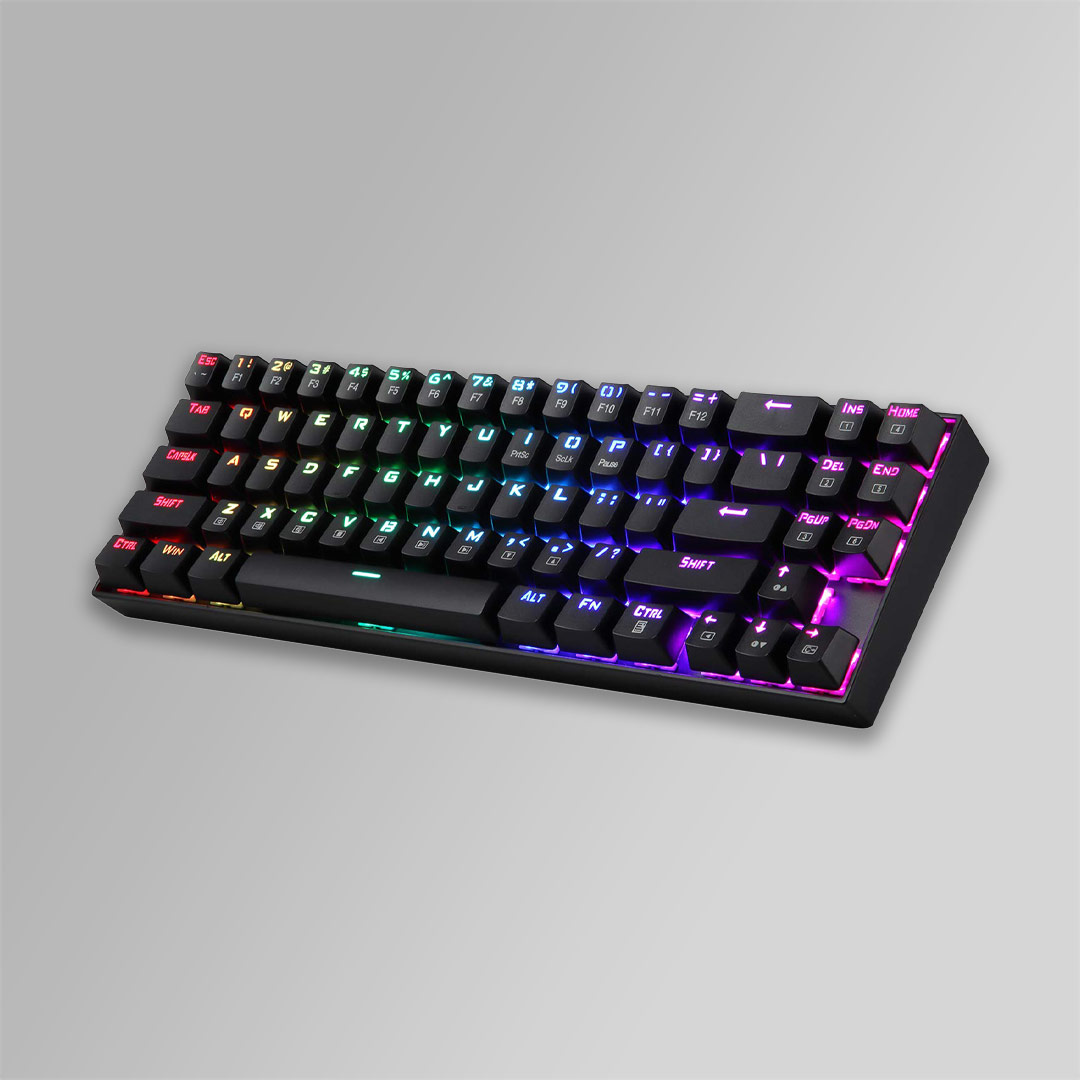
Mechanical keyboards function through individual mechanical switches under each keycap. When a key is pressed, the switch beneath is activated, registering a keystroke. Unlike membrane keyboards, which use a layer of rubber or silicone, mechanical switches provide more distinct and consistent tactile feedback, often resulting in a satisfying ‘click’ sound. This mechanism not only offers a more precise and responsive typing experience but also allows for greater customization. Users can choose from a variety of switch types, each with a different actuation force, travel distance, and sound level, to suit their typing preference. Many mechanical keyboards also feature customizable keycaps and programmable backlighting, enhancing both the aesthetic and functional aspects of the typing experience.
Variations among mechanical keyboards include the type of switches used (Cherry MX, Topre, etc.), build quality, keycap material, and additional features like anti-ghosting, n-key rollover, and software for key remapping and RGB lighting control. High-end models provide better build quality, more durable switches, and extensive customization options, catering to both enthusiasts and professionals seeking a premium typing experience.
Popular models of mechanical keyboards include the Corsair K95 RGB Platinum and the Das Keyboard 4 Professional. The Corsair K95 is renowned for its robust build and extensive programmable features, making it a favorite among gamers, while the Das Keyboard 4 offers a more minimalist design with high-quality switches preferred by typists and professionals.
22. Waterproof cameras
Waterproof cameras are designed to withstand water exposure, making them ideal for underwater photography and use in harsh weather conditions. They cater to adventurers, travelers, and water sports enthusiasts who require a durable camera.
View in gallery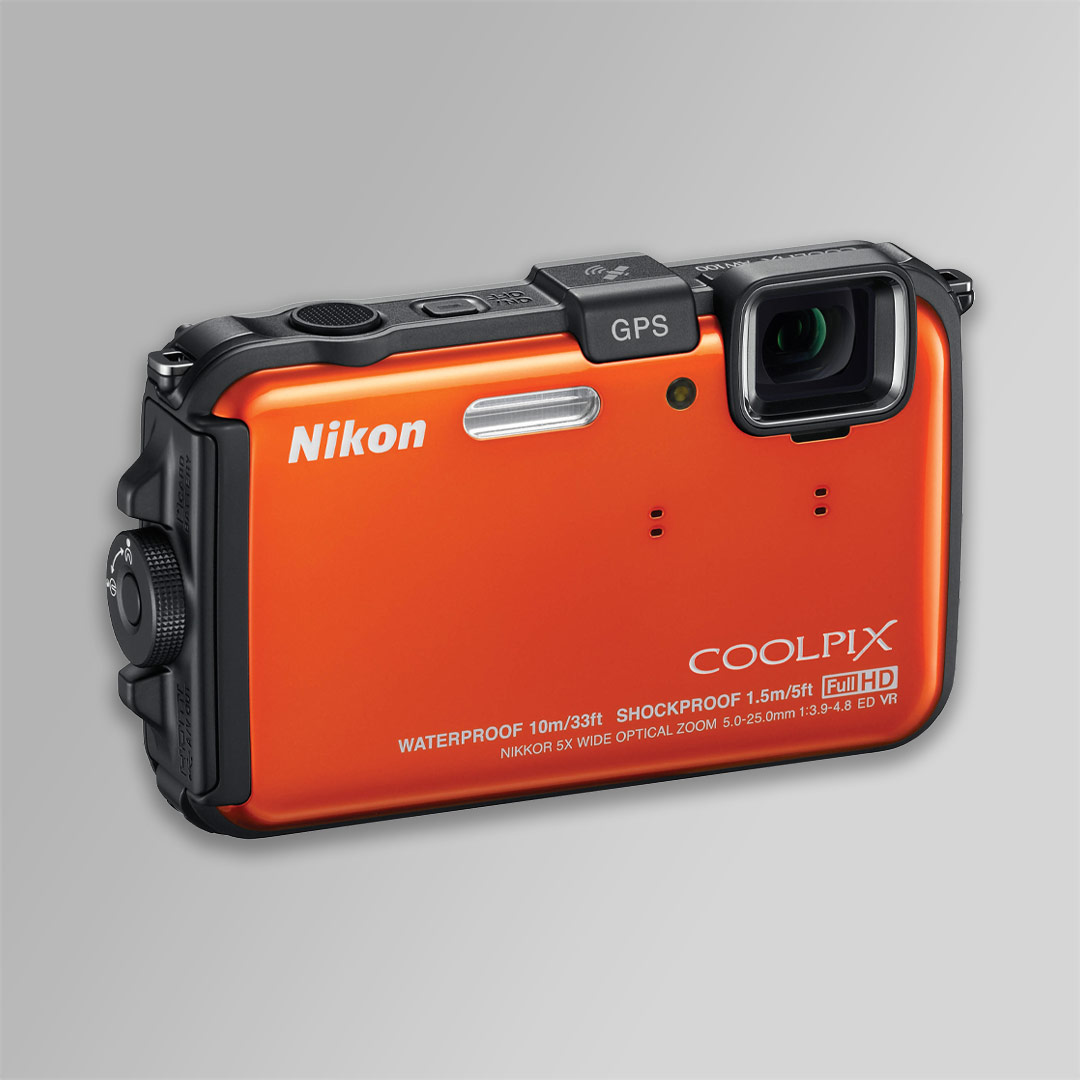
Waterproof cameras seal and protect their internal components from water, dust, and shocks through tightly sealed casings and gaskets around buttons and ports. These cameras often incorporate ruggedized features to withstand drops and impacts. In terms of photography, they are equipped with sensors and lenses that perform well under various lighting conditions, including underwater. Advanced models may offer additional features like depth gauges, GPS, Wi-Fi connectivity, and action-oriented capabilities like high frame rate video recording. Their design prioritizes ease of use in challenging environments, with simple controls and sturdy construction.
Variations among waterproof cameras include their depth rating, image quality, additional environmental resistance (like freeze-proofing), and additional photography features. Higher-end models can go deeper underwater, offer higher-resolution images and videos, and include more specialized features for different types of photography.
Popular waterproof camera models include the Olympus Tough TG-6 and the GoPro HERO series. The Olympus Tough TG-6 is known for its exceptional image quality and robustness in extreme conditions, while the GoPro HERO series excels in capturing high-quality video in action-packed settings.
23. Soundbars
Soundbars are sleek, compact audio devices designed to enhance the sound quality of televisions. They offer a superior audio experience compared to standard TV speakers, fitting seamlessly into home entertainment setups.
View in gallery
Soundbars house multiple speakers in a single elongated enclosure to create a more immersive audio experience by providing a wider range of sound (and, often, virtual surround sound effects). Many soundbars include built-in subwoofers for deeper bass, while others can connect to separate subwoofers and satellite speakers. They usually connect to the TV via HDMI, optical cables, or wirelessly through Bluetooth. Some advanced models also feature smart technology, like voice assistants, Wi-Fi streaming, and compatibility with multi-room audio systems, allowing users to integrate the soundbar into a broader home audio ecosystem.
Variations among soundbars include sound quality, connectivity options, physical size, and additional features like Dolby Atmos support and room calibration technology. High-end models offer superior sound quality with more precise audio separation, more connectivity options, and advanced features that tailor the sound to the room’s acoustics.
Notable soundbar models include the Sonos Arc and the Bose Soundbar 700. The Sonos Arc is renowned for its exceptional sound quality and seamless integration with Sonos’ multi-room audio system, while the Bose Soundbar 700 stands out for its excellent soundstage and built-in voice control features.
24. Ice cream makers
Ice cream makers are kitchen appliances specifically designed for making ice cream, gelato, and other frozen desserts at home. They provide a convenient and customizable way to create these treats with various flavors and ingredients.
View in gallery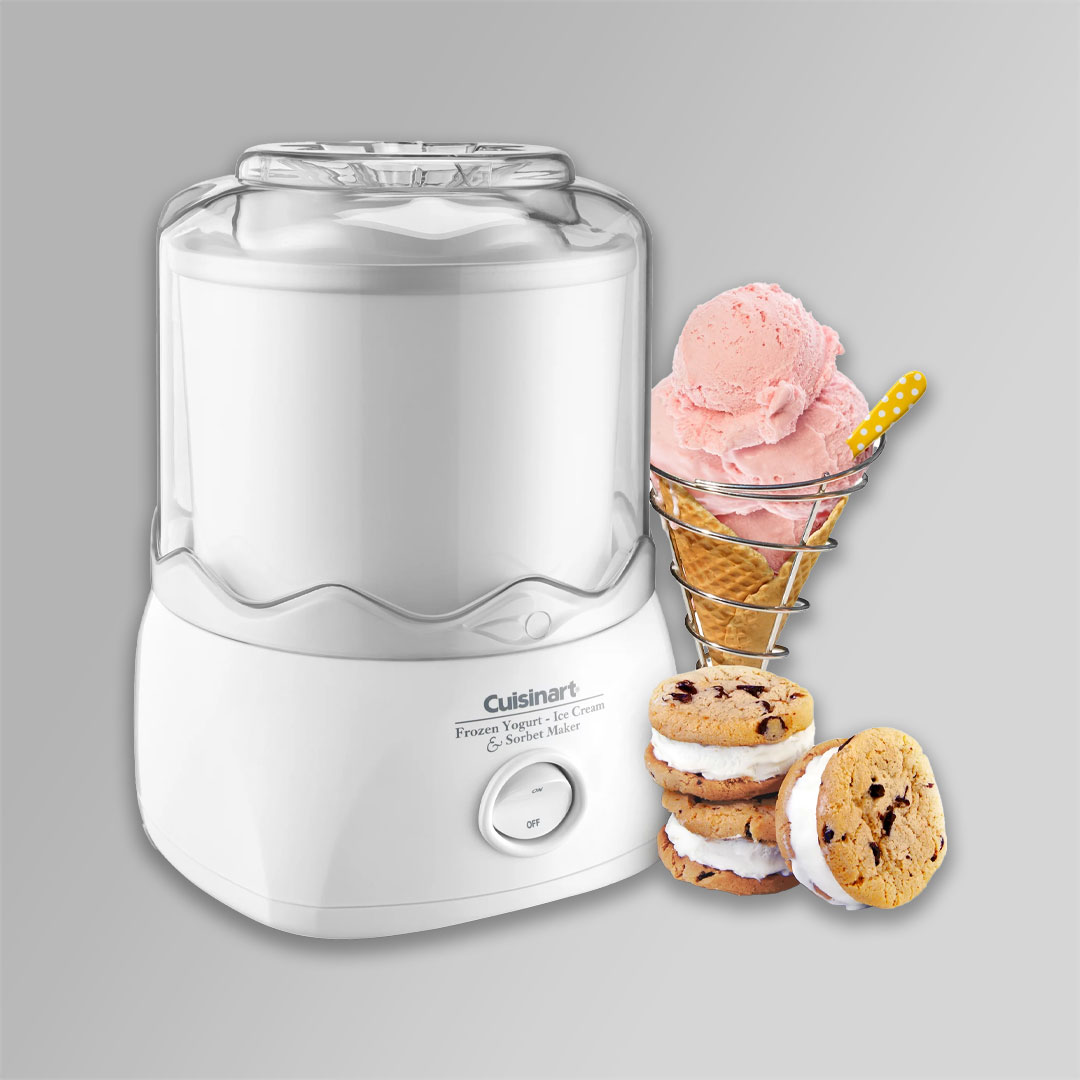
Ice cream makers chill and churn a mixture of ingredients to create a frozen dessert. The process involves a cold container or bowl, where the ice cream base is poured. The machine then churns the mixture while it cools, either through a built-in refrigeration unit or by pre-freezing the container in a freezer. (Churning prevents large ice crystals from forming, ensuring a smooth and creamy texture.) Advanced models offer features like automatic timers, adjustable churn speeds, and pre-programmed settings for different types of frozen desserts. Some models even come with additional functionalities such as built-in compressors, which eliminate the need for pre-freezing, allowing for back-to-back batches and more spontaneous ice cream making.
Variations among ice cream makers include their freezing method, capacity, speed of freezing, and additional features. Higher-end models typically offer more convenience with built-in freezing mechanisms, larger capacities, and more control over the texture and consistency of the dessert.
Popular ice cream makers include the Cuisinart ICE-21 and the Breville Smart Scoop. The Cuisinart ICE-21 is known for its ease of use and quick freezing time, while the Breville Smart Scoop stands out for its automatic settings and ability to produce a range of frozen desserts with varying textures.
25. Humidifiers
Humidifiers add moisture to the air, helping to prevent dryness that can irritate many parts of the body. They are particularly beneficial in dry climates or during colder months when indoor heating can reduce humidity levels.
View in gallery
Humidifiers release water vapor or steam into the air to increase humidity levels. There are several types of humidifiers, each operating differently. Ultrasonic humidifiers use a metal diaphragm vibrating at an ultrasonic frequency to create water droplets. Evaporative humidifiers blow air over a wet wick or filter to evaporate water into the air. Steam vaporizers heat water to create steam, which cools before leaving the machine. Some models feature hygrometers to measure the room’s humidity level, allowing for automatic adjustment to maintain desired humidity levels. Additionally, many modern humidifiers come with features like timers, adjustable mist settings, and filters to ensure the moisture added to the air is clean and free of impurities.
Variations among humidifiers include their method of humidification, water tank capacity, coverage area, and additional features like nightlights, essential oil diffusers, and filter systems. High-end models offer more precise humidity controls, larger coverage areas, and additional convenience features.
Popular models of humidifiers include the Honeywell HCM350W and the Dyson AM10. The Honeywell HCM350W is known for its reliable performance and germ-free humidification, while the Dyson AM10 stands out for its ultraviolet cleanse technology and stylish design.
26. Handheld GPS
Handheld GPS devices are portable means for navigation and tracking in outdoor activities like hiking, geocaching, and mountain biking. They offer precise location information in environments where smartphones may be less reliable.
View in gallery
Handheld GPS devices connect to satellites to triangulate the user’s exact location on the Earth’s surface. They display this information on a screen, often with preloaded maps and terrain data. Users can input waypoints, track their routes, and navigate to specific coordinates. Advanced models include features like a barometric altimeter for elevation data, an electronic compass, and wireless connectivity for sharing routes and locations. Some also provide detailed topographic maps, live weather updates, and SOS signaling for emergencies. Unlike smartphone GPS apps, handheld GPS devices are built for rugged outdoor use, with durable, water-resistant designs, long battery life, and clear displays that are visible in direct sunlight.
Variations among handheld GPS devices include their satellite connectivity speed and accuracy, the detail of preloaded maps, battery life, and additional outdoor-oriented features. High-end models offer more accurate and quicker location tracking, more detailed maps, longer battery life, and advanced features like geocaching capabilities and integration with other outdoor devices.
Prominent models in the handheld GPS category include the Garmin GPSMAP 64st and the Magellan eXplorist 310. The Garmin GPSMAP 64st is celebrated for its high-sensitivity GPS receiver and extensive mapping features, while the Magellan eXplorist 310 is known for its compact design and intuitive interface, suitable for beginners.
27. Dishwashers
Dishwashers are kitchen appliances designed to clean and rinse dirty dishes and utensils automatically. They provide a convenient and efficient alternative to manual washing, particularly beneficial in households with a high volume of dishes.
View in gallery
Dishwashers function by spraying hot water mixed with detergent onto the dishes to remove food residue and grease. The process typically involves several stages: pre-rinse, wash cycle, and final rinse. During the pre-rinse, food particles are loosened, and in the wash cycle, detergent is added, and dishes are cleaned with a more intense water spray. The final rinse often includes a high-temperature water spray to sanitize and remove any remaining detergent. Advanced models may also feature different wash settings for various dish types, soil levels, and energy-saving options. Many dishwashers have integrated heating elements for drying dishes after the rinse cycle. Innovations in modern dishwashers include smart sensors to optimize water and energy usage, noise reduction technology, and flexible loading options to accommodate a variety of dish sizes.
Variations among dishwashers include their washing and drying efficiency, noise level, capacity, and additional features like steam cleaning, delayed start, and smart home connectivity. High-end models offer superior cleaning performance, quieter operation, larger capacity, and more advanced features for user convenience and environmental sustainability.
Popular dishwashers include the Bosch 800 Series and the KitchenAid KDPE234GPS. The Bosch 800 Series is known for its quiet operation and efficient cleaning, while the KitchenAid KDPE234GPS stands out for its sturdy build and effective drying capability.
28. Pressure cookers
Pressure cookers are kitchen appliances designed to cook food quickly under high steam pressure. They are favored for their ability to reduce cooking times significantly and retain nutrients better than traditional cooking methods.
View in gallery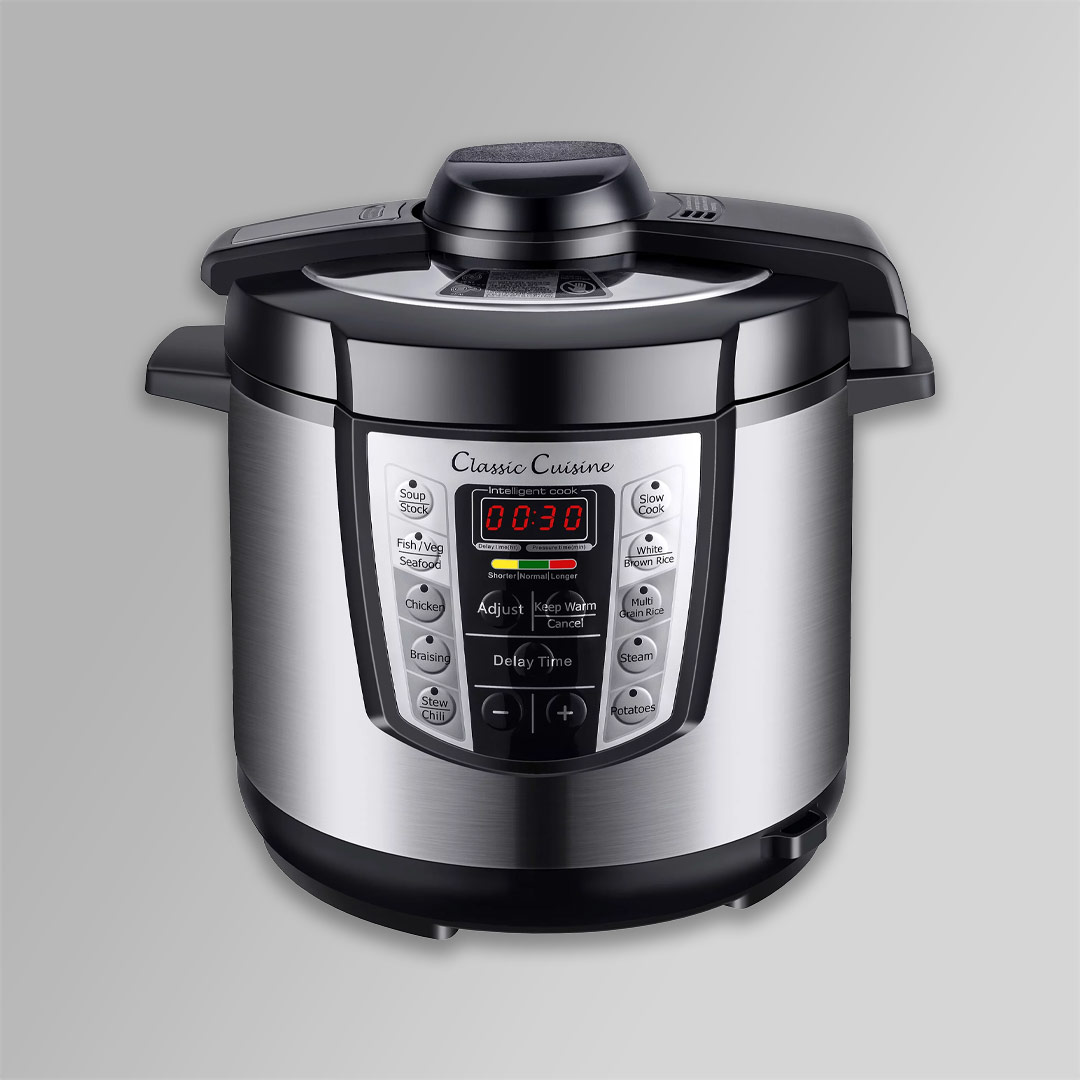
Pressure cookers create a sealed environment where steam pressure builds up, raising the boiling point of water and cooking food at a higher temperature. This process speeds up the cooking time while also allowing flavors and moisture to be sealed within the food. The cooker consists of a pot, a tight-sealing lid with a valve to control steam pressure, and a safety release system. Users add ingredients and a liquid, usually water or broth, which generates steam when heated. The high-pressure environment tenderizes tough cuts of meat and cooks grains or beans more rapidly than conventional methods. Modern pressure cookers often come with multiple settings for different types of dishes, digital timers, and safety features like automatic pressure release and locking lids to ensure safety during use.
Variations among pressure cookers include their capacity, material, range of pressure settings, and additional functions like slow cooking, steaming, or sautéing. High-end models offer more precise pressure control, versatile cooking functions, and enhanced safety features.
Popular models of pressure cookers include the Instant Pot and the Fissler Vitaquick. The Instant Pot is renowned for its multifunctional capabilities, acting as a pressure cooker, slow cooker, and more, while the Fissler Vitaquick is praised for its quality construction and efficient pressure cooking performance.
29. Drones
Drones (also known as unmanned aerial vehicles or UAVs) are remote-controlled flying devices primarily used for photography, surveillance, and recreation. They have gained significant popularity for both professional and personal use due to their versatility and advanced technology.
View in gallery
Drones operate through a combination of rotors, motors, and propellers for flight and maneuverability. Controlled remotely via a handheld controller or a smartphone app, they can ascend, descend, and move in different directions. Advanced drones are equipped with GPS and gyroscopic stabilization systems, which contribute to their steady hovering and precise navigation capabilities. Many drones come with high-resolution cameras, enabling aerial photography and videography. Some models also feature autonomous flight modes, obstacle detection systems, and return-to-home functions for enhanced safety and usability. The battery life, range, and payload capacity are key factors that vary among different models, influencing their suitability for various applications.
Variations among drones include camera quality, flight time, control range, and additional features like follow-me mode, live video feed, and foldability for portability. High-end models offer better camera resolution, longer flight durations, greater control ranges, and more sophisticated autonomous features.
Popular drone models include the DJI Mavic Air 2 and the DJI Mini 4 Pro. The DJI Mavic Air 2 is renowned for its exceptional image quality, long battery life, and advanced flight modes, while the Mini 4 Pro packs a similar feature set into a package that weights just 249 grams (the maximum weight allowed for flying drones unregistered with the FAA).
30. Action cameras
Action cameras are compact, rugged cameras designed for capturing video and photos in dynamic and challenging environments. They are popular among adventurers, sports enthusiasts, and content creators for their durability and high-quality capture capabilities in various conditions.
View in gallery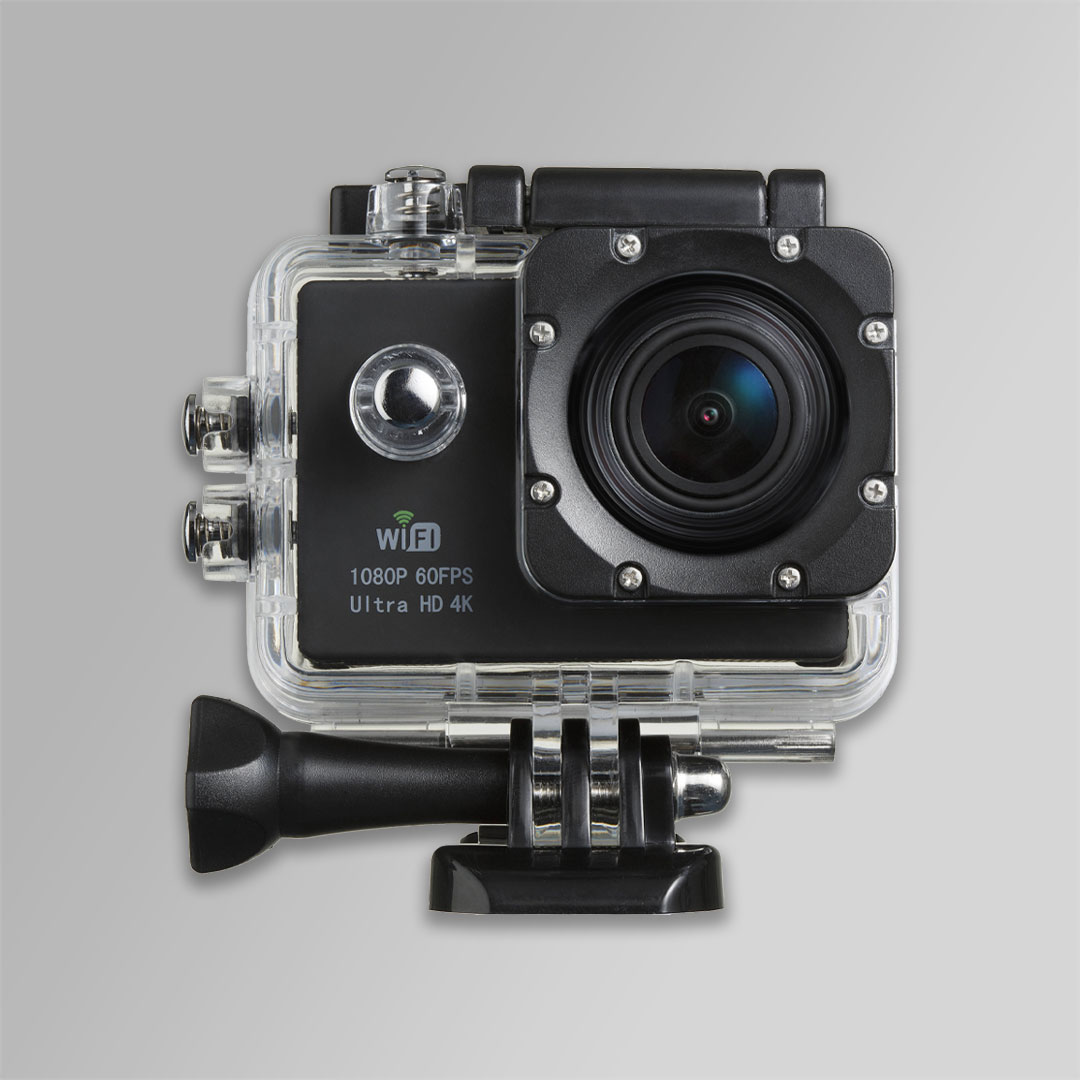
Action cameras record video and take photos while being mounted on equipment, vehicles, or worn on the body. They are built to withstand extreme conditions, including water, dust, and shock. These cameras typically feature wide-angle lenses to capture expansive views and are equipped with image stabilization technology to reduce blurriness in high-motion scenarios. Many models offer high-definition video recording, slow-motion, time-lapse features, and the ability to capture still images at high resolutions. Connectivity options like Wi-Fi and Bluetooth enable users to control the camera remotely and quickly transfer files to other devices. Some advanced models also include voice control, GPS tagging, and live streaming capabilities.
Variations among action cameras include video resolution, frame rate options, size, weight, and additional features like touchscreens and waterproof ratings. High-end models provide superior video quality with higher resolution and frame rates, better stabilization, and more rugged and waterproof designs.
Leading action camera models include the GoPro HERO series and the DJI Osmo Action. The GoPro HERO is known for its superior video quality and wide range of mounting accessories, making it a favorite for extreme sports. The DJI Osmo Action stands out with its dual screens for easy framing and exceptional image stabilization.
31. Security cameras
Security cameras are surveillance devices used to monitor and record activities in various settings for safety and security purposes. They are widely utilized in homes, businesses, and public areas to deter criminal activity and provide a record of events.
View in gallery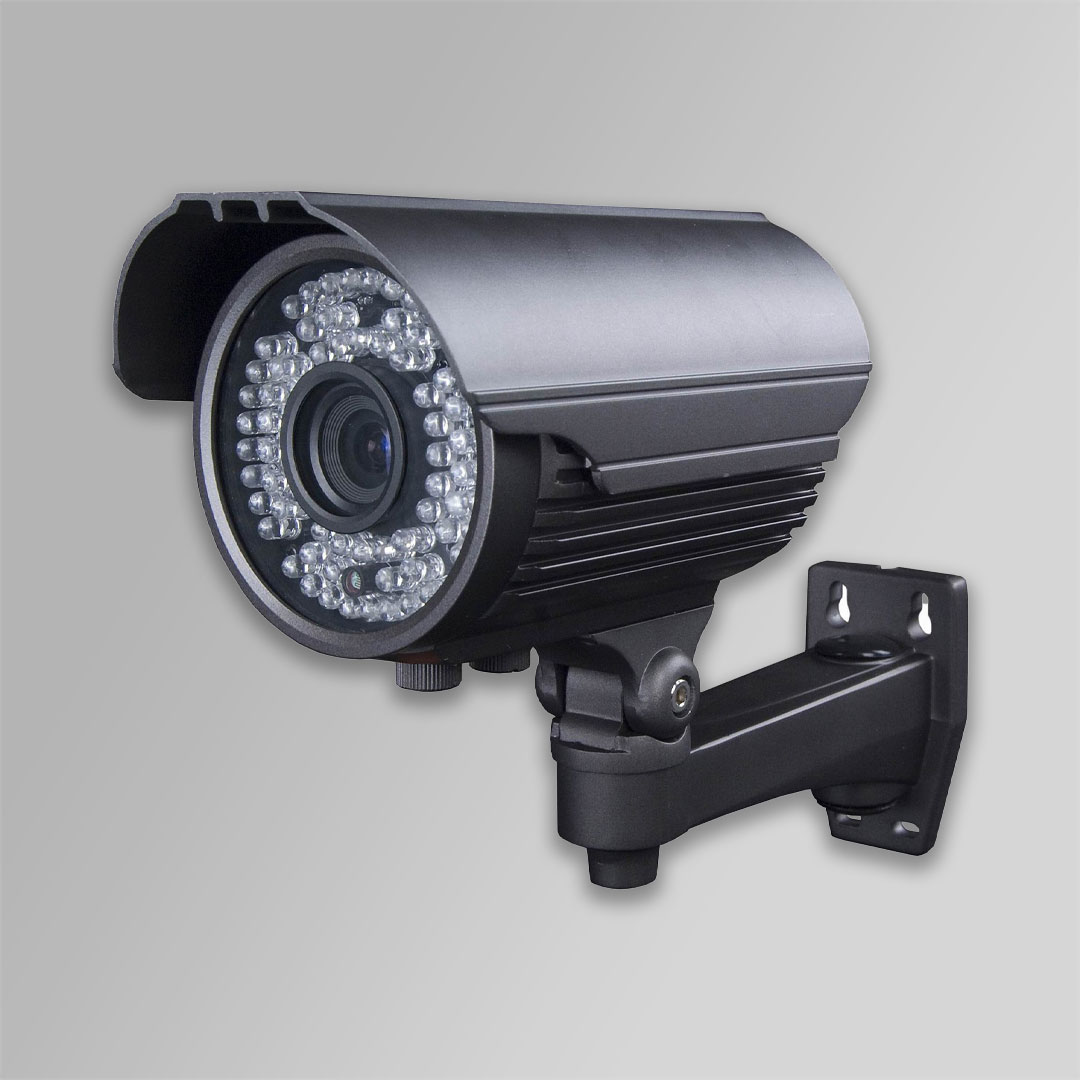
Security cameras capture video footage in real time with lenses that vary in field of view and resolution, depending on the camera’s intended use. Modern security cameras often include features like motion detection, night vision, and the ability to pan, tilt, or zoom for comprehensive coverage. Many are connected to a network, allowing for remote monitoring and control via smartphones or computers. Wireless models offer easier installation and flexibility in placement. Some advanced cameras integrate with smart home systems and can trigger alarms or notifications based on detected movement or sound. Additionally, these cameras often come with cloud or local storage options for saving the recorded footage.
Variations among security cameras include image resolution, field of view, connectivity options (wired or wireless), and additional features like facial recognition, two-way audio communication, and weatherproofing. High-end models provide clearer images, wider coverage, more reliable connectivity, and sophisticated detection algorithms.
Notable security camers include the Arlo Pro series and the Nest Cam. The Arlo Pro offers exceptional video quality and a wireless design for easy installation, while the Nest Cam is known for its sleek design, integration with Google Assistant, and advanced motion detection features.
32. eBikes
Electric bikes (commonly known as eBikes), are bicycles equipped with an electric motor that assists with pedaling. They are increasingly popular for commuting, recreation, and exercise, blending the benefits of traditional biking with the added assistance of electric power.
View in gallery
eBikes integrate a battery-powered motor with the bicycle’s drivetrain, activating a motor when the rider pedals to provide additional power to the wheels. This assistance can be adjusted based on the rider’s preference and the riding conditions, making it easier to climb hills, travel longer distances, or carry heavy loads. Most eBikes come with a rechargeable battery, and the range of travel on a single charge varies depending on the bike’s model, battery capacity, and the level of motor assistance used. Advanced models include features like regenerative braking, which recharges the battery while riding, various power modes, integrated lights, and digital displays that show speed, battery life, and distance traveled. eBikes are available in various styles, including road, mountain, and hybrid, to suit different cycling needs.
Variations among eBikes include motor type and placement (hub motor or mid-drive), battery range, overall weight, and additional features like suspension systems and integrated GPS. High-end models offer more efficient motors, longer battery life, lighter weight, and enhanced features for a more sophisticated riding experience.
Popular eBike models include the Specialized Turbo Levo for mountain biking enthusiasts and the Trek Domane+ for those seeking a performance-oriented road eBike. The Turbo Levo stands out for its powerful motor and off-road capabilities, while the Domane+ is known for its speed, efficiency, and smooth ride on paved surfaces.
33. Dash cams
Dash cams (short for dashboard cameras) are compact video recording devices mounted inside vehicles, primarily on the dashboard or windshield. They are used to record footage of the road ahead, and increasingly, the interior or rear of the vehicle, for various purposes including safety, legal evidence, and monitoring.
View in gallery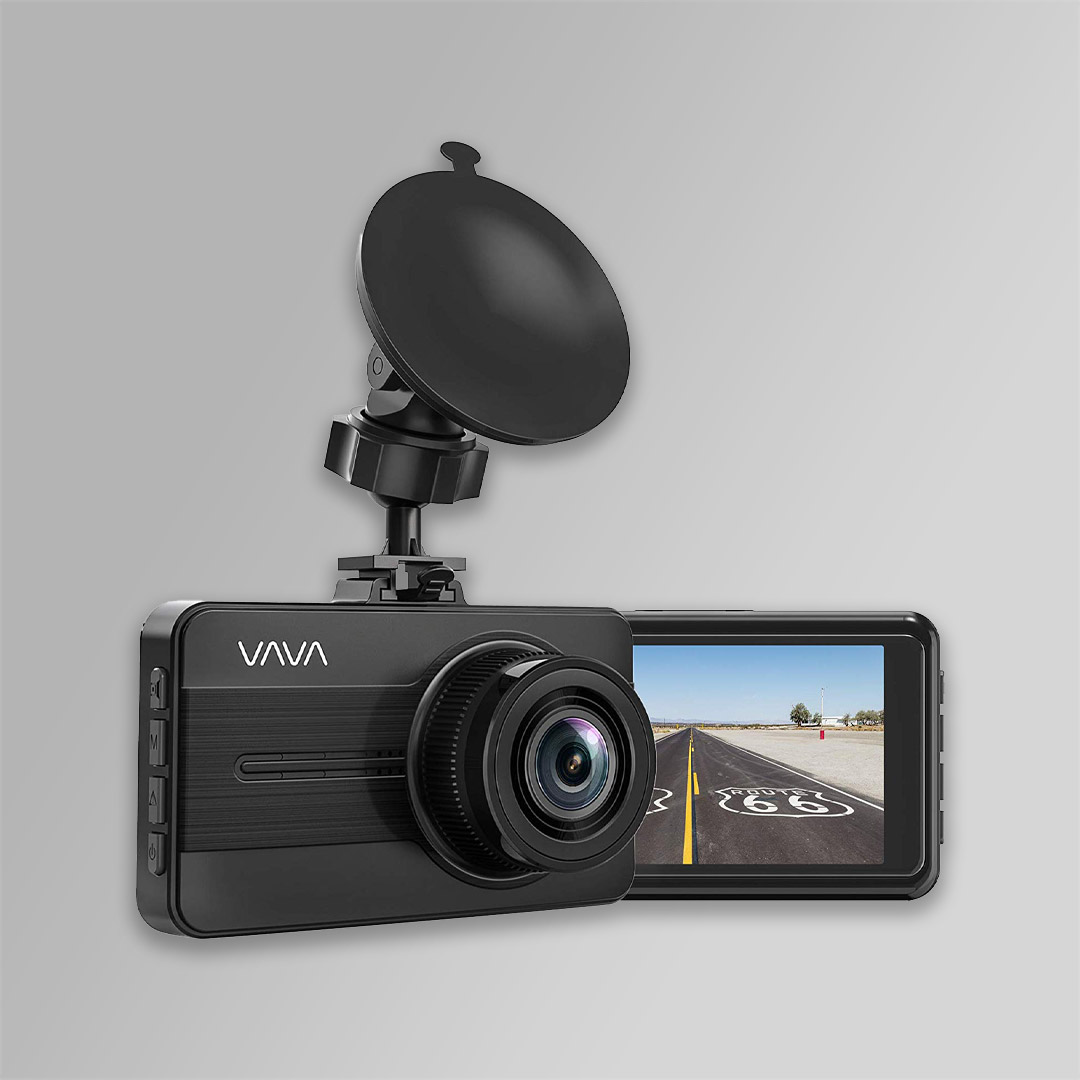
Dash cams function by continuously recording video while the vehicle is in motion, and often even when it’s parked. They typically start recording automatically when the vehicle’s engine is turned on, saving footage to a memory card. Many models loop-record, meaning they overwrite the oldest footage when storage is full, ensuring continuous recording without manual intervention. Advanced dash cams offer features such as high-definition video quality, wide-angle lenses for broader coverage, night vision capabilities, and built-in GPS for location and speed data. Some also include impact sensors (G-sensors) that detect collisions and automatically save and lock the relevant footage to prevent overwriting, which can be crucial for insurance claims or legal purposes. Additional features might include Wi-Fi connectivity for easy footage transfer to smartphones or computers, and driver-assistance technologies like lane departure warnings.
Variations among dash cams include video resolution, field of view, storage capacity, and additional safety features. High-end models provide clearer, more detailed footage, wider recording angles, larger storage capacities, and more sophisticated driver-assistance systems.
Notable dash cameras include the Garmin Dash Cam series and the Nextbase Series 2. The Garmin Dash Cam is known for its high-quality recording and ease of use, while the Nextbase Series 2 stands out for its innovative features like modular rear-view recording and emergency SOS response.
34. Solar Generators
Solar generators are portable power stations that use solar energy to generate electricity. They are an eco-friendly alternative to traditional fuel-powered generators, ideal for outdoor activities, emergency power backup, or remote applications where conventional power sources are unavailable.
View in gallery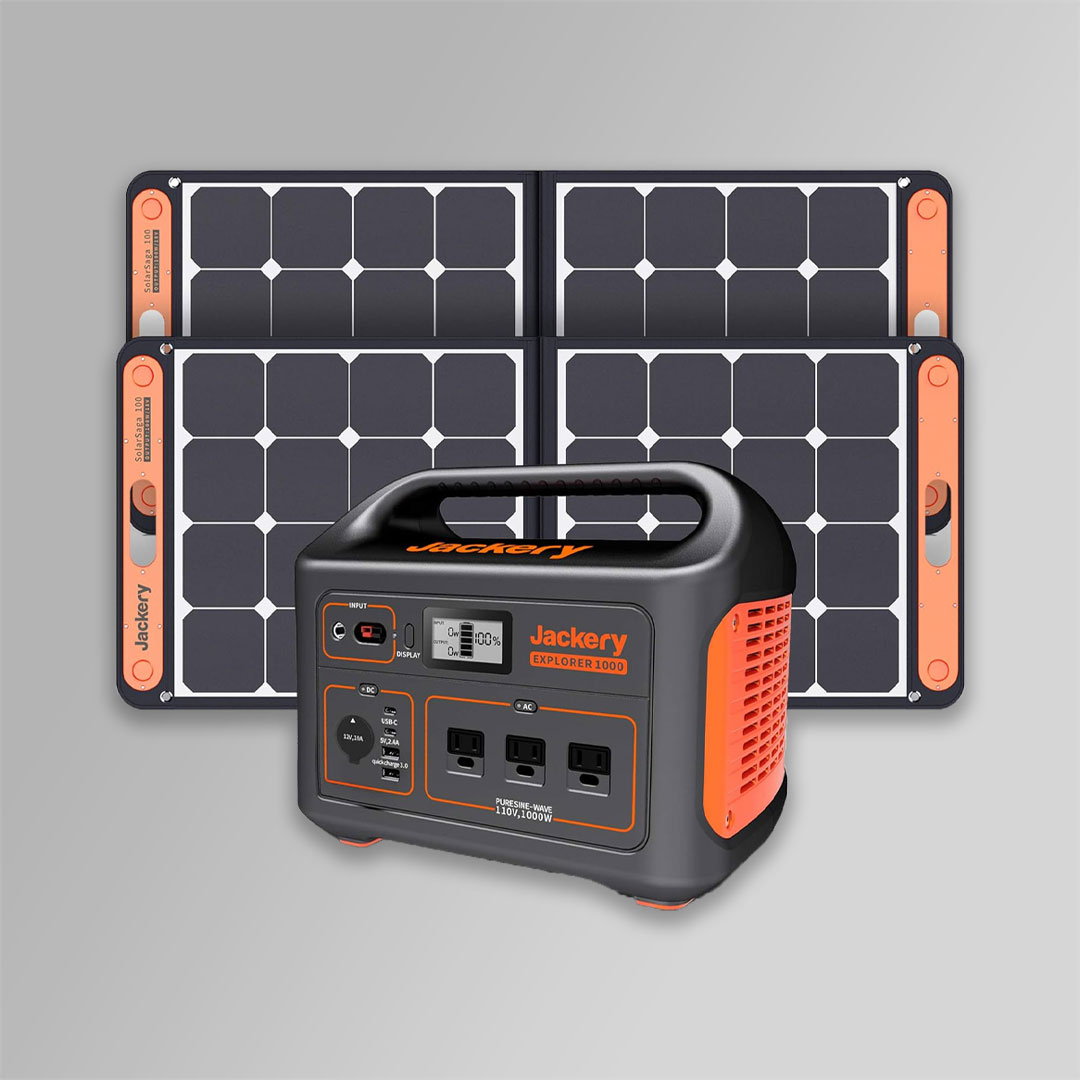
Solar generators convert sunlight into electrical energy through photovoltaic solar panels, then store this energy in a built-in battery (typically a lithium-ion or lead-acid battery). Users can harness this stored power to run or charge various electrical devices, from smartphones and laptops to small appliances. Solar generators are equipped with various output ports, including standard AC outlets, DC outlets, and USB ports, to accommodate different types of devices. Key aspects of their functionality include the capacity of the solar panel to capture sunlight, the storage capacity of the battery, and the inverter’s efficiency in converting solar energy into usable electricity. Advanced models may offer features like fast charging, expandable solar panels for increased energy collection, and integrated displays to monitor energy usage and battery levels.
The portability and silent operation of solar generators make them particularly useful for camping, RV trips, and as a renewable energy source during power outages or in off-grid settings. Variations among solar generators include their power output, battery capacity, size, weight, and additional features like weather-resistant designs and smart connectivity for remote monitoring and control.
Popular solar generators include the Jackery Explorer series and the Goal Zero Yeti series. The Jackery Explorer is known for its lightweight, compact design and user-friendly interface, making it a favorite for casual outdoor enthusiasts. The Goal Zero Yeti stands out for its high power output and versatile connectivity options, catering to more demanding power needs in outdoor and emergency situations.
35. Smart locks
Smart locks are advanced locking systems designed for enhanced security and convenience in residential and commercial settings. They represent a significant evolution from traditional locks by incorporating technology for keyless entry and remote access.
View in gallery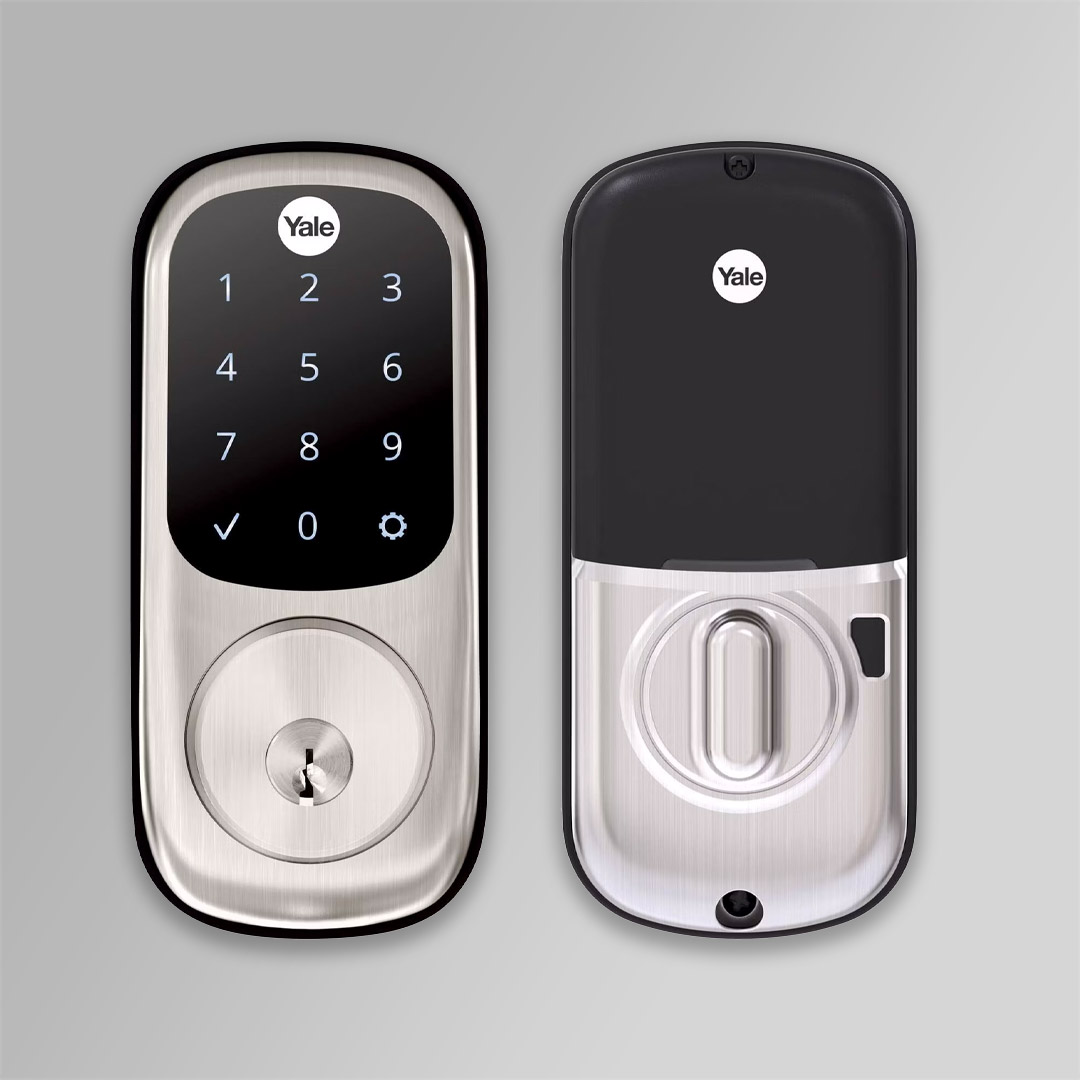
Smart locks connect to a home network (usually via Wi-Fi or Bluetooth) to allow users to lock and unlock doors using a smartphone app, voice commands through smart home assistants, or even remotely over the internet. These locks often feature alternative entry methods such as keypads for entering a code, fingerprint recognition, or traditional keys as a backup. One of the key functionalities is the ability to grant temporary access to visitors, which is particularly useful for rental property owners or for letting in service providers. Many smart locks can integrate with home automation systems, allowing for scenarios like automatically turning on lights when the door is unlocked. They also provide activity logs, showing who accessed the lock and when, adding an extra layer of security and oversight.
Variations among smart locks include the method of connectivity, the type of access control offered (e.g., keypad, biometric, smartphone), battery life, and compatibility with other smart home devices. High-end models offer more robust security features, wider compatibility with home automation systems, and more durable and tamper-resistant designs.
Popular smart locks include the August Smart Lock Pro and the Schlage Encode. The August Smart Lock Pro is known for its easy installation, versatility, and compatibility with a wide range of smart home platforms, while the Schlage Encode stands out for its built-in Wi-Fi and high-strength, tamper-resistant build.
36. Wireless gaming mouse
A wireless gaming mouse is a sophisticated input device tailored for gamers who seek responsiveness, precision, and flexibility without the constraints of a wired connection. These mice are essential for an enhanced gaming experience, particularly in fast-paced or competitive gaming scenarios.
View in gallery
Wireless gaming mice function by transmitting input data to the computer via radio frequency (RF) or Bluetooth technology. Unlike traditional wired mice, they offer greater freedom of movement and eliminate cable drag, contributing to smoother and more accurate cursor control. Key features include high dots per inch (DPI) sensitivity for precise tracking, adjustable weights for a customized feel, programmable buttons for bespoke gaming commands, and ergonomic designs to reduce hand fatigue during prolonged use. Advanced models often come with features like customizable RGB lighting, on-board memory to save user profiles, and fast-charging or long-lasting batteries. The technology in wireless gaming mice has evolved to offer latency and accuracy comparable to wired counterparts, making them a popular choice among professional gamers.
Variations among wireless gaming mice include connectivity options, battery life, sensor accuracy, number of programmable buttons, and ergonomics. High-end models typically provide more reliable connectivity, faster response times, customizable ergonomics, and additional features to enhance gaming performance.
Prominent wireless gaming mice include the Logitech G Pro Wireless and the Razer Viper Ultimate. The Logitech G Pro Wireless is renowned for its lightweight design, exceptional battery life, and professional-grade performance, while the Razer Viper Ultimate stands out for its precision sensor and ultra-fast wireless technology.
37. Radar detectors
Radar detectors are electronic devices used primarily by motorists to detect if their speed is being monitored by law enforcement using a radar gun. They are sought after by drivers who wish to avoid speeding tickets and maintain awareness of their driving environment.
View in gallery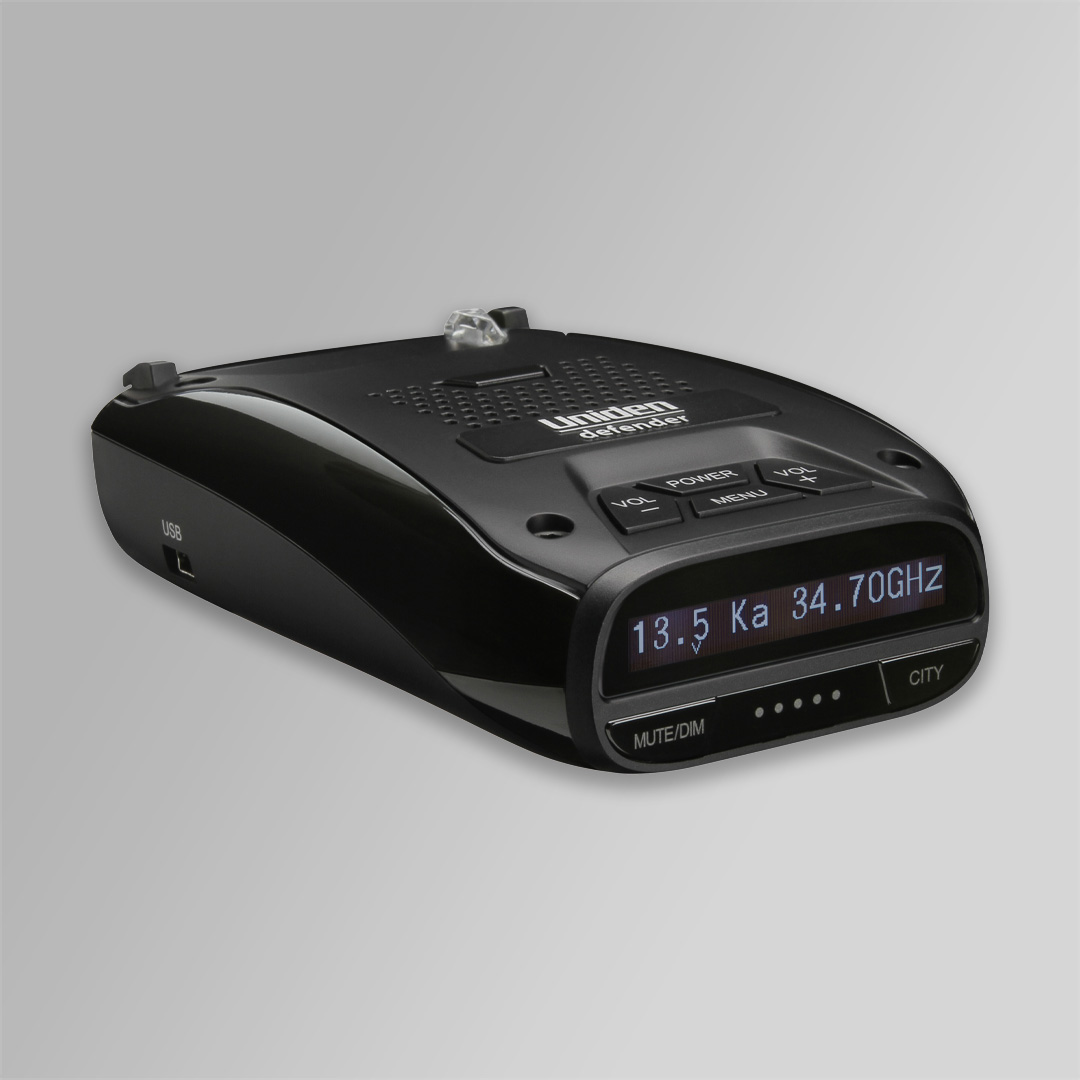
Radar detectors scan for radio waves emitted by radar guns typically used by police officers. The device alerts the driver through visual or auditory signals upon detecting police radar signals, allowing time to adjust speed accordingly. Advanced models offer features like GPS integration to mark and remember locations where speed traps are commonly found, false alert filtering to distinguish between actual threats and non-threatening sources, and compatibility with smartphone apps for real-time community-based alerts. Some high-end radar detectors also incorporate laser detection, providing a more comprehensive defense against different types of speed enforcement technologies.
Variations among radar detectors include their sensitivity to different radar bands, range of detection, false alert filtering capabilities, and additional features like stealth technology to make the detector undetectable by radar detector detectors (RDDs). Higher-end models typically offer greater sensitivity and range, more sophisticated false alert filtering, and additional features for enhanced situational awareness.
Popular radar detectors include the Escort Max 360 and the Uniden R7. The Escort Max 360 is known for its extensive features, including directional arrows to indicate the source of the radar signal, while the Uniden R7 stands out for its long-range detection capabilities and large OLED display.
38. Mirrorless cameras
Mirrorless cameras (also known as compact system cameras) are advanced digital cameras that lack the mirror mechanism found in traditional DSLRs. They have become increasingly popular among photography enthusiasts and professionals for their compact size, reduced weight, and high image quality.
View in gallery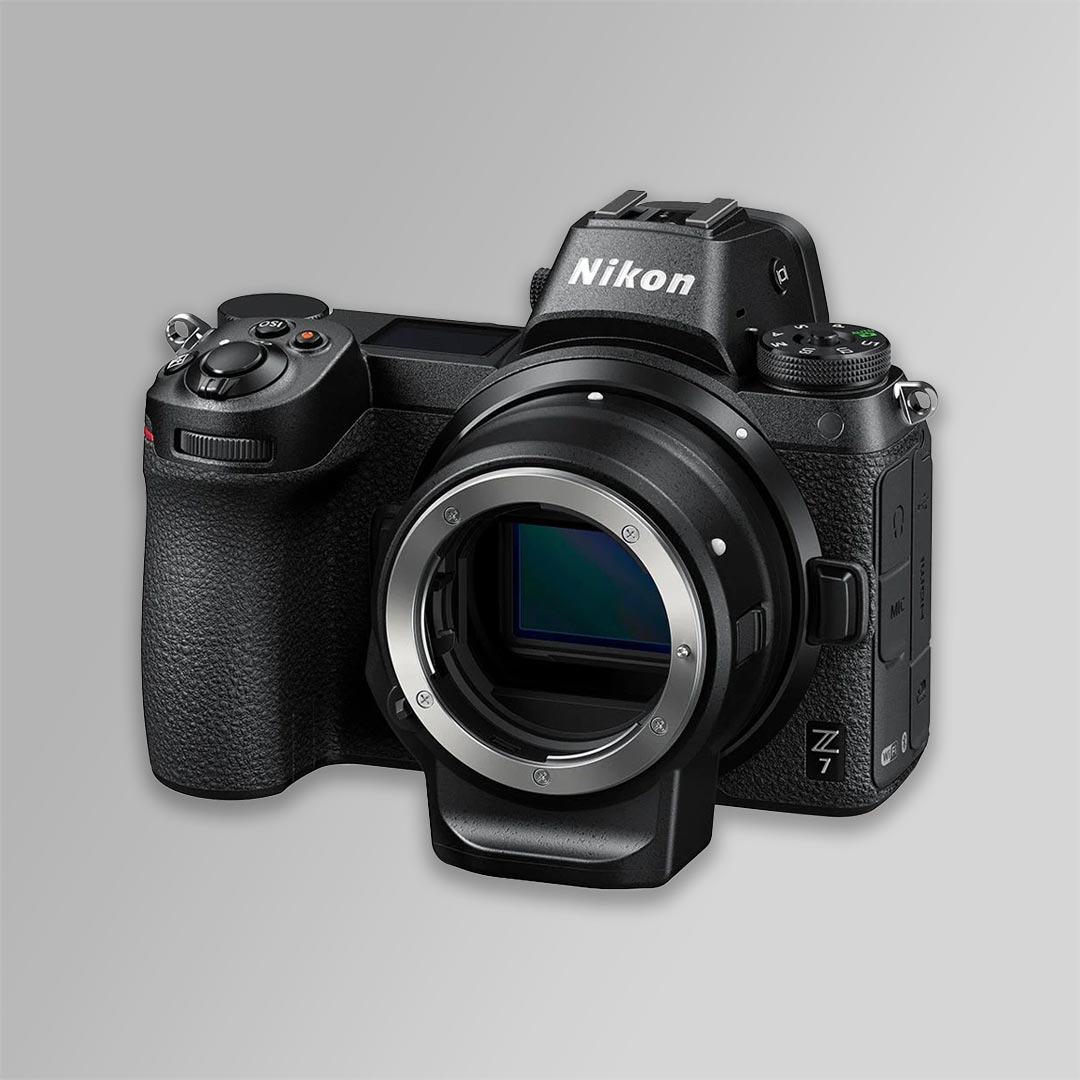
Mirrorless cameras function by directly capturing the image on the sensor, which is then displayed on an electronic viewfinder or LCD screen. This design allows for a more compact body compared to DSLRs while still offering interchangeable lenses for flexibility. Key features of mirrorless cameras include high-resolution sensors, fast autofocus systems, and continuous shooting modes. Many models also offer advanced video capabilities, such as 4K recording and slow-motion effects. The absence of a mirror mechanism results in quieter operation, making these cameras ideal for discreet photography. Additionally, the electronic viewfinder provides a real-time preview of the image with exposure settings applied, aiding in accurate composition and exposure adjustments before taking the shot.
Variations among mirrorless cameras include sensor size, autofocus performance, image stabilization, and additional features like Wi-Fi or Bluetooth connectivity for easy sharing of images. High-end models often boast larger sensors for better low-light performance, faster and more accurate autofocus systems, and in-body image stabilization for sharper images at slower shutter speeds.
Popular models in this category of digital cameras include the Sony Alpha series and the Fujifilm X series. The Sony Alpha cameras are renowned for their exceptional autofocus capabilities and full-frame sensors, while the Fujifilm X series stands out for its unique sensor technology, classic design, and vibrant color reproduction.
39. Smart scooter
Smart scooters are modern, electric-powered scooters integrated with advanced technology features. They are becoming increasingly popular in urban areas for short-distance travel, offering a convenient and eco-friendly alternative to traditional transportation methods.
View in gallery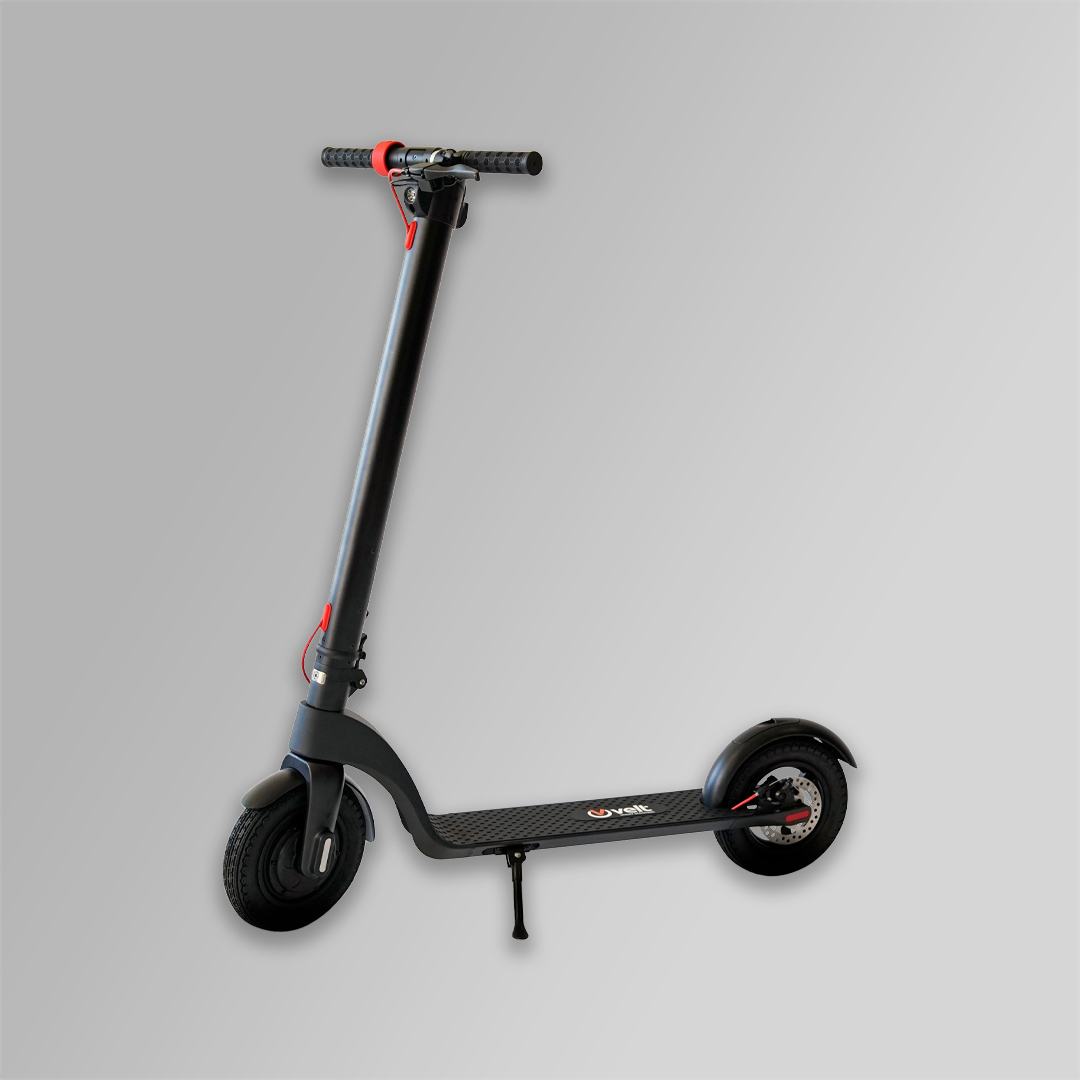
Smart scooters use electric motors powered by rechargeable batteries for locomotion, with features like lightweight frames, foldable designs for portability, and simple throttle mechanisms for speed control. A key aspect of their functionality is the integration of smart features, which can include GPS tracking, digital locks, and smartphone connectivity for navigation, scooter status monitoring, and ride analytics. Some models offer additional capabilities like regenerative braking, which recharges the battery during braking, and customizable LED lights for safety and aesthetics. Advanced smart scooters may also come with features like cruise control, anti-theft alarms, and the ability to remotely control or track the scooter through a mobile app.
Variations among smart scooters include their range per charge, motor power, maximum speed, and additional smart functionalities. High-end models typically provide longer range, higher speeds, more robust motor power, and enhanced smart features for an improved and more connected riding experience.
Popular models of smart scooters include the Xiaomi Mi Electric Scooter and the Segway Ninebot series. The Xiaomi Mi Electric Scooter is known for its sleek design, reliable performance, and user-friendly features, making it a favorite for everyday commuters. The Segway Ninebot series stands out for its innovative technology, robust build quality, and advanced safety features, catering to both casual riders and tech-savvy enthusiasts.
40. Wireless power banks
Wireless power banks are portable charging devices that offer the convenience of charging electronic gadgets without the need for wall outlet access. They are increasingly popular for on-the-go charging of smartphones, tablets, and other wireless charging-compatible devices.
View in gallery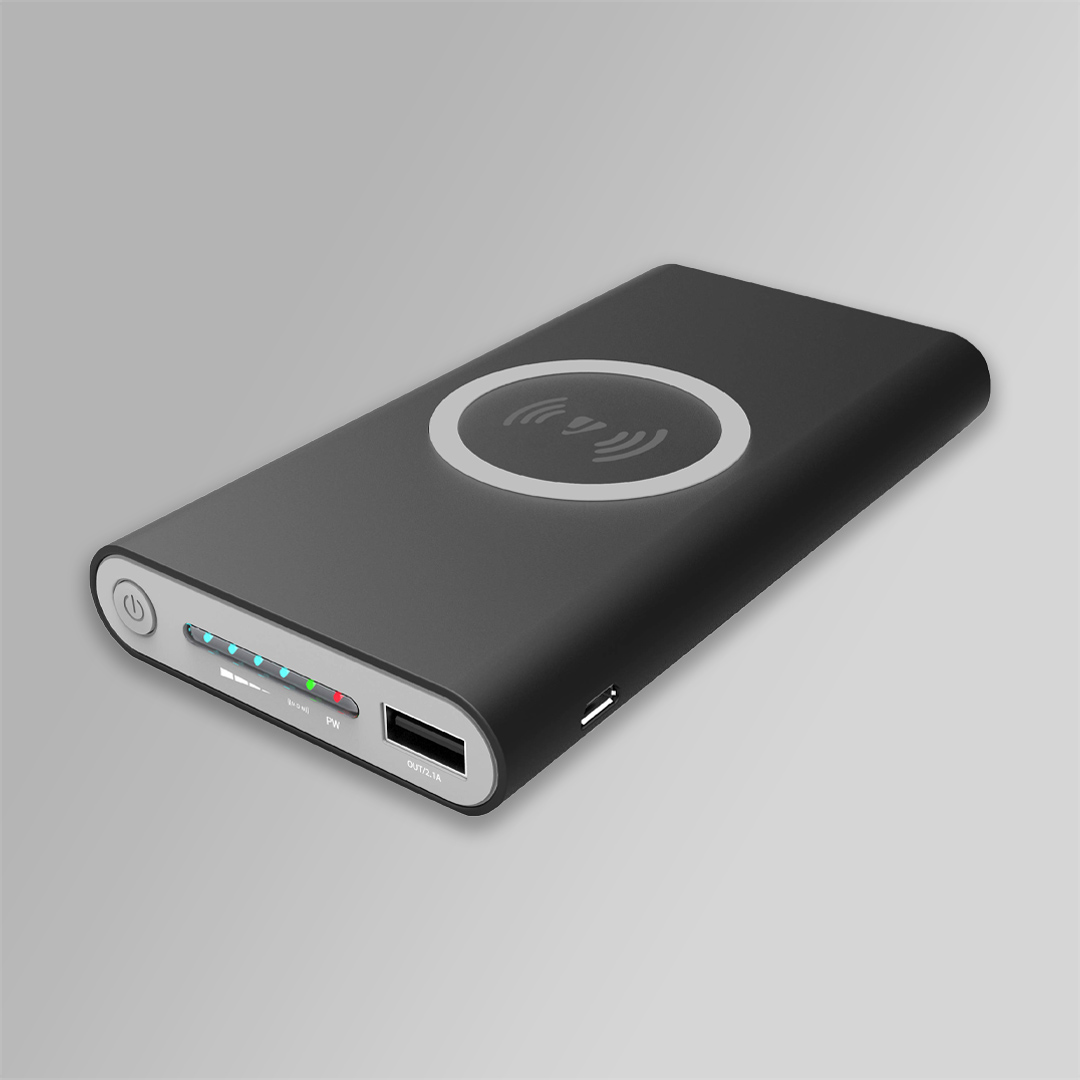
Wireless power banks function by storing electrical energy in an internal battery, which can then be transferred wirelessly to a device through inductive charging. Users simply place their compatible device on the power bank’s charging pad, initiating the transfer of power without needing to plug in a cable. This is facilitated by electromagnetic fields to transfer energy between two objects – the power bank and the device. In addition to wireless charging, most power banks also have USB ports for traditional wired charging, making them versatile for various types of devices. Key features include the power bank’s battery capacity, measured in milliampere-hours (mAh), indicating how much charge the power bank can hold and deliver. Advanced models may offer fast wireless charging capabilities, multiple charging ports, and features like LED indicators for battery status and rugged, waterproof designs.
Variations among wireless power banks include their charging speed, capacity, size, and additional functionalities like solar charging capabilities or compatibility with a wide range of devices. High-end models typically provide faster charging speeds, higher capacities, and more durable and compact designs.
Popular models of portable power banks include the Anker PowerCore series and the Mophie Powerstation Wireless. The Anker PowerCore is renowned for its high capacity and reliability, while the Mophie Powerstation Wireless stands out for its sleek design and efficient wireless charging capabilities.
41. Electric vehicles
Electric vehicles (EVs) are automobiles powered primarily by electric motors, which use energy stored in rechargeable batteries as fuel for locomotion. They have risen in popularity as an environmentally friendly alternative to traditional internal combustion engine vehicles, offering a sustainable solution to reduce greenhouse gas emissions.
View in gallery
Electric vehicles operate on electricity, which powers an electric motor and turns the wheels. Unlike gasoline-powered cars, EVs do not have exhaust systems, transmissions, or fuel tanks. The key component of an EV is its battery pack, which stores electrical energy. The efficiency and performance of an EV depend largely on the battery’s capacity, measured in kilowatt-hours (kWh), determining the vehicle’s range on a single charge. Charging an EV is done via an electrical power source, which can range from standard home outlets to specialized EV charging stations that offer faster charging speeds.
Advanced models often feature regenerative braking, which recaptures energy typically lost during braking and converts it back into battery power. Many EVs also include high-tech features like advanced driver-assistance systems, infotainment systems integrated with smartphone connectivity, and over-the-air software updates to improve the vehicle’s performance and features. Variations among electric vehicles include their driving range, charging time, battery capacity, and additional features like acceleration, interior luxury, and technological integrations. High-end models typically offer longer ranges, faster charging capabilities, superior performance, and cutting-edge technology features.
Popular EV models the Tesla Model 3 and the Chevrolet Bolt EV. The Tesla Model 3 is known for its impressive range, high performance, and advanced autonomous driving features, while the Chevrolet Bolt EV stands out for its affordability combined with a respectable range and practicality for everyday use.
42. Gaming monitors
Gaming monitors are specialized displays designed to enhance the visual experience of video gaming. They offer features that cater to the demands of fast-paced games, making them a favorite among gaming enthusiasts and professionals.
View in gallery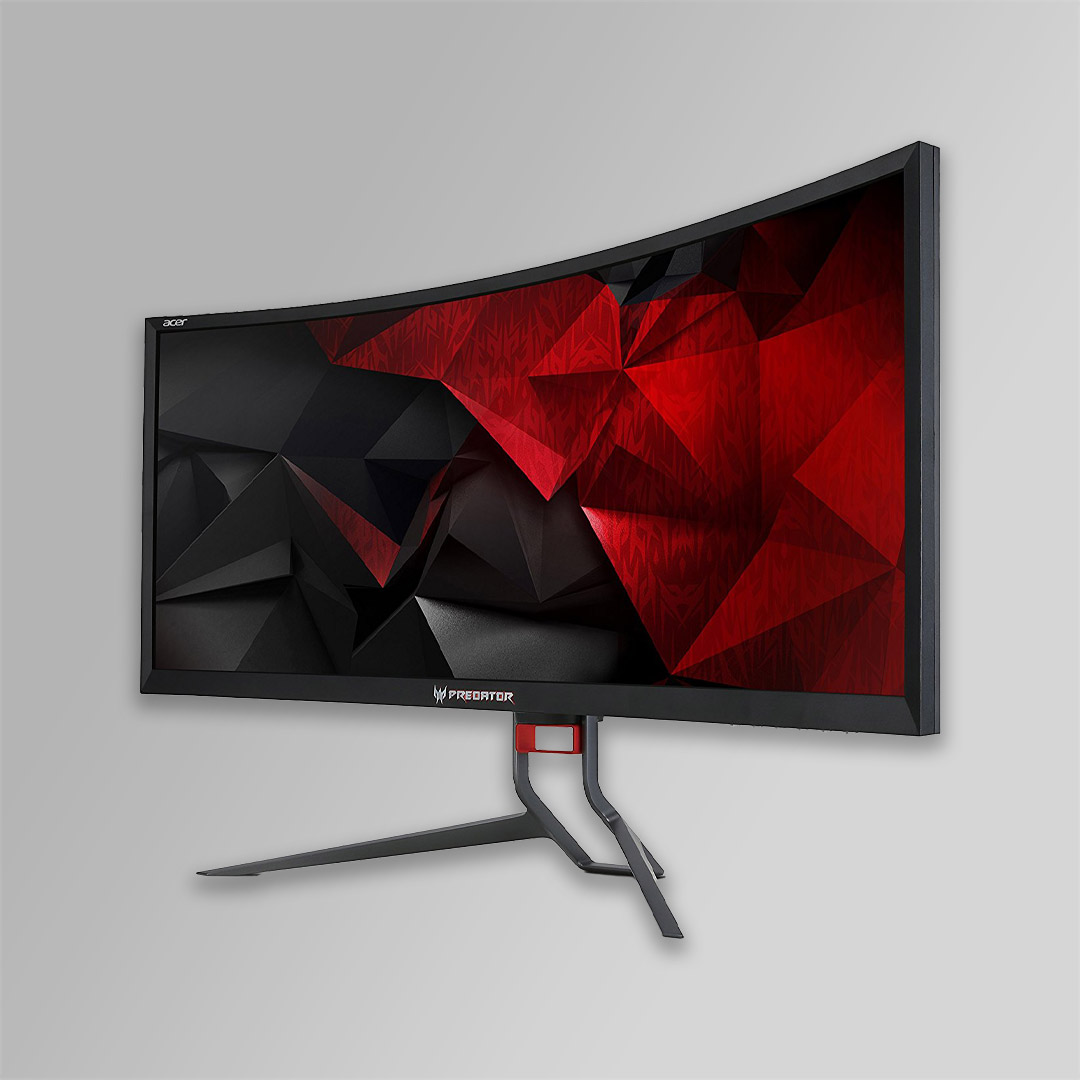
Gaming monitors deliver high refresh rates and fast response times, which are crucial for smooth, blur-free visuals in fast-moving games. A high refresh rate, measured in Hertz (Hz), allows the screen to update the image more frequently, providing a more fluid and responsive gameplay experience. Fast response times reduce motion blur and ghosting effects, ensuring crisp and clear images even during rapid movements. Many gaming monitors also support adaptive sync technologies like NVIDIA’s G-SYNC or AMD’s FreeSync, which synchronize the monitor’s refresh rate with the graphics card’s output to eliminate screen tearing. Additional features often found in gaming monitors include high-resolution displays for detailed images, HDR (High Dynamic Range) for improved color and contrast, and customizable settings for different gaming genres. Ergonomic designs with adjustable stands, along with features like blue light filters and flicker-free technology, are also common to enhance comfort during extended gaming sessions.
Variations among gaming monitors include their screen size, resolution, panel type (IPS, TN, VA), and additional gaming-oriented features such as customizable RGB lighting and built-in crosshairs or frame rate counters. High-end models provide superior image quality with higher resolutions, more vibrant colors, and wider viewing angles.
Prominent models in this category of computer model include the ASUS ROG Swift series and the Samsung Odyssey G9. The ASUS ROG Swift is renowned for its high performance, refresh rates, and color accuracy, making it a top choice for competitive gamers. The Samsung Odyssey G9 stands out for its ultra-wide curved screen, immersing players in a panoramic gaming experience.
43. Smart light bulbs
Smart light bulbs are advanced lighting solutions that offer more control, customization, and energy efficiency compared to traditional bulbs. They have become increasingly popular in smart homes and for those interested in enhancing their living environments with customizable lighting options.
View in gallery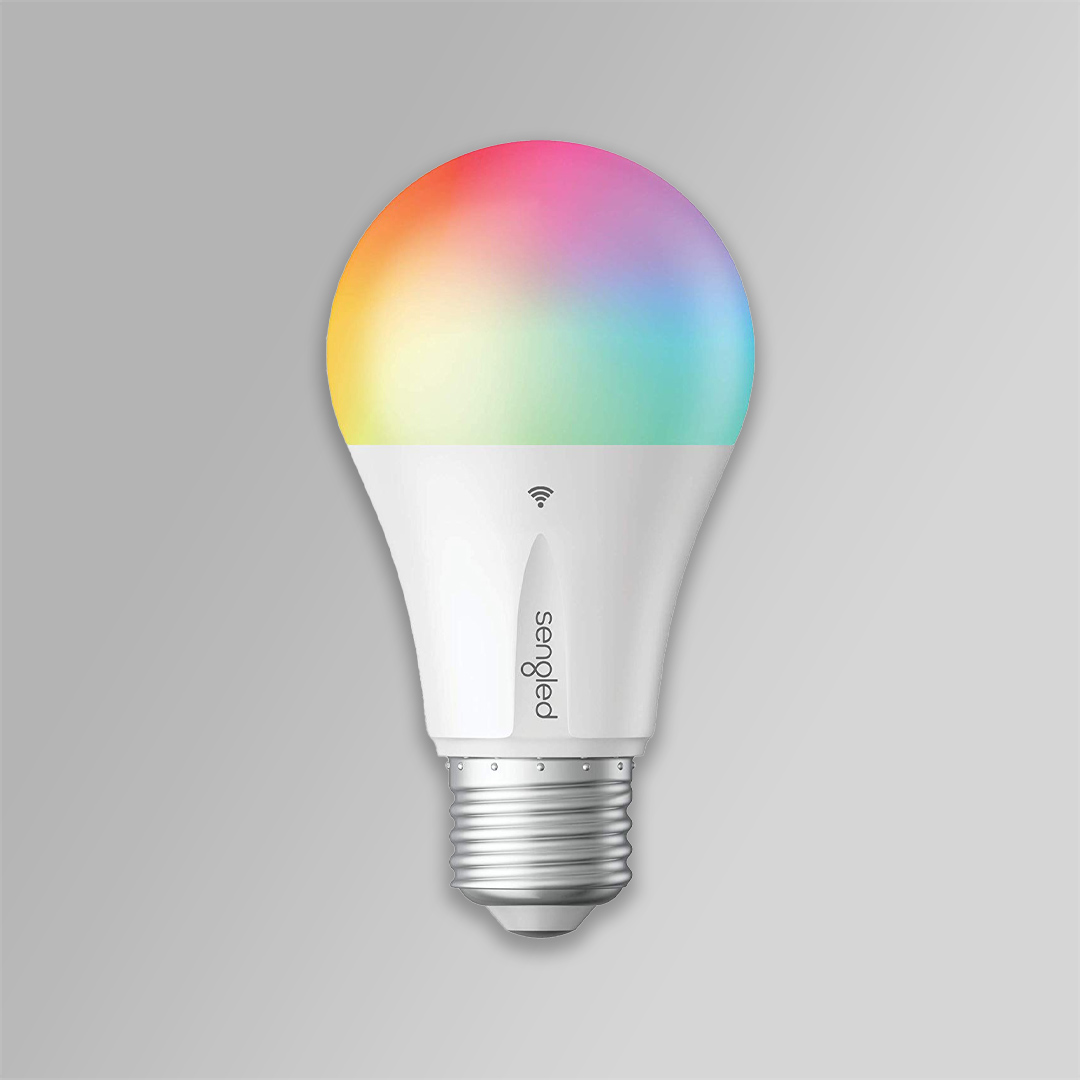
Smart light bulbs connect to home networks (usually through Wi-Fi or Bluetooth) to enable users to control them via smartphone apps, voice commands through smart home assistants, or remotely over the internet. These bulbs can be dimmed, turned on or off, and in many cases, have their color adjusted without needing a physical switch. Key features include the ability to schedule lighting changes, create scenes or moods with different colors and brightness levels, and integrate with other smart home devices for automated routines. Advanced models offer additional functionalities such as energy usage tracking, compatibility with a wide range of smart home ecosystems, and the ability to respond to external inputs like music or ambient sounds.
Variations among smart light bulbs include their light color spectrum, brightness (lumens), energy consumption (watts), and compatibility with different smart home platforms and devices. Higher-end models typically provide a broader range of colors, higher brightness levels, and more sophisticated integration capabilities with smart home systems.
Popular models of smart lightbulbs include the Philips Hue and the LIFX range. The Philips Hue is known for its wide range of colors, ease of use, and compatibility with multiple smart home systems, while LIFX bulbs stand out for their high brightness levels and vibrant color accuracy without needing a separate hub.
44. Wireless earbuds
Wireless earbuds are compact audio devices designed for a cable-free listening experience. Highly popular for their portability and convenience, they are ideal for on-the-go music listening, phone calls, and even fitness activities.
View in gallery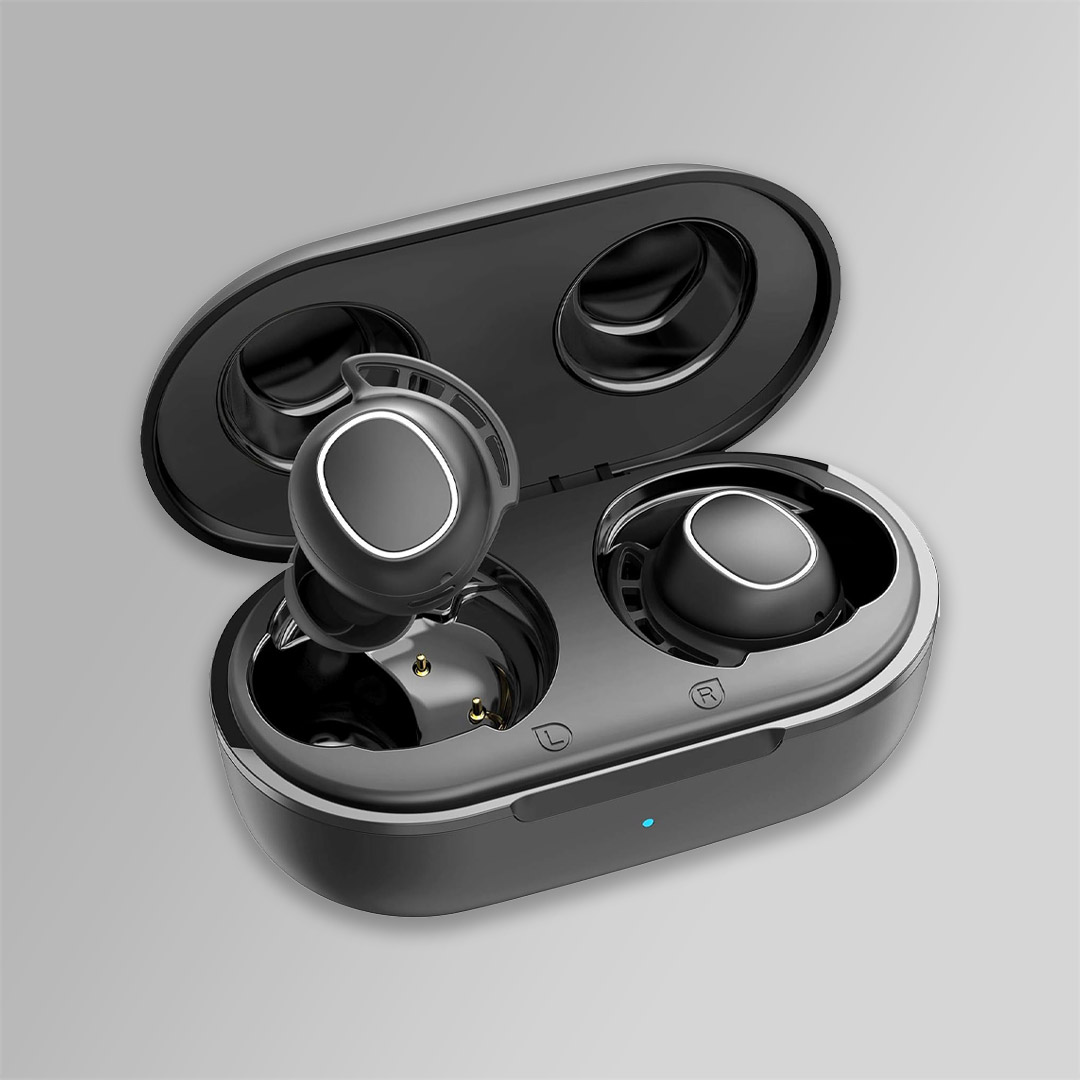
Wireless earbuds connect to audio sources (such as smartphones or tablets) via Bluetooth technology, thereby eliminating the hassle of long audio cables. They are designed to fit securely in the ear, often with various ear-tip sizes to accommodate different ear shapes. Key features of wireless earbuds include high-quality audio drivers for clear sound, built-in microphones for hands-free calling, and touch or voice controls for managing playback and other functions. Many models offer advanced features like active noise cancellation to block out ambient noise, water and sweat resistance for use during workouts, and quick charging capabilities. The earbuds usually come with a charging case, which not only stores but also recharges them, extending their battery life while on the move.
Variations among wireless earbuds include their sound quality, battery life, comfort, and additional functionalities like integration with voice assistants, customization through apps, and auto-pause features when removed from the ear. High-end models typically provide superior sound quality, longer battery life, more effective noise cancellation, and enhanced durability.
Prominent examples of Bluetooth earbuds include the Apple AirPods Pro and the Samsung Galaxy Buds Pro. The Apple AirPods Pro are renowned for their seamless integration with Apple devices, effective active noise cancellation, and comfortable fit, while the Samsung Galaxy Buds Pro offer impressive sound quality, robust water resistance, and a wide range of features optimized for Android users.
45. Fitness trackers
Fitness trackers are wearable devices designed to monitor and record various physical activities and health metrics. They have become increasingly popular for individuals looking to maintain a healthy lifestyle, track fitness goals, and monitor their overall well-being.
View in gallery![]()
Fitness trackers use a combination of sensors to track physical activities and health metrics, such as accelerometers, heart rate monitors, and sometimes even GPS for tracking distance and pace. Users typically wear these devices on their wrist, where they continuously collect data such as steps taken, calories burned, heart rate, sleep patterns, and workout intensity. This data is then synced to a smartphone app, where it’s analyzed and presented in an easy-to-understand format. Users can review their progress, set goals, and often receive personalized recommendations. Advanced models offer additional features like waterproof designs for swimming, integration with other fitness apps, and notifications for calls and messages from connected smartphones.
Variations among fitness trackers include their tracking accuracy, battery life, design, and additional functionalities like stress tracking, menstrual cycle tracking, or guided breathing exercises. High-end models typically provide more precise tracking, longer battery life, sleeker designs, and a wider range of health and wellness features.
Popular fitness trackers include the Fitbit Charge series and the Garmin Vivosmart. The Fitbit Charge is known for its comprehensive activity tracking and strong community features, while the Garmin Vivosmart offers advanced fitness metrics and GPS integration for outdoor activities.
46. Portable projectors
Portable projectors are compact, mobile devices designed to project images and videos onto a screen or any flat surface. They are ideal for presentations, home cinemas, and outdoor movie nights, offering the flexibility of a theater-like experience in various settings.
View in gallery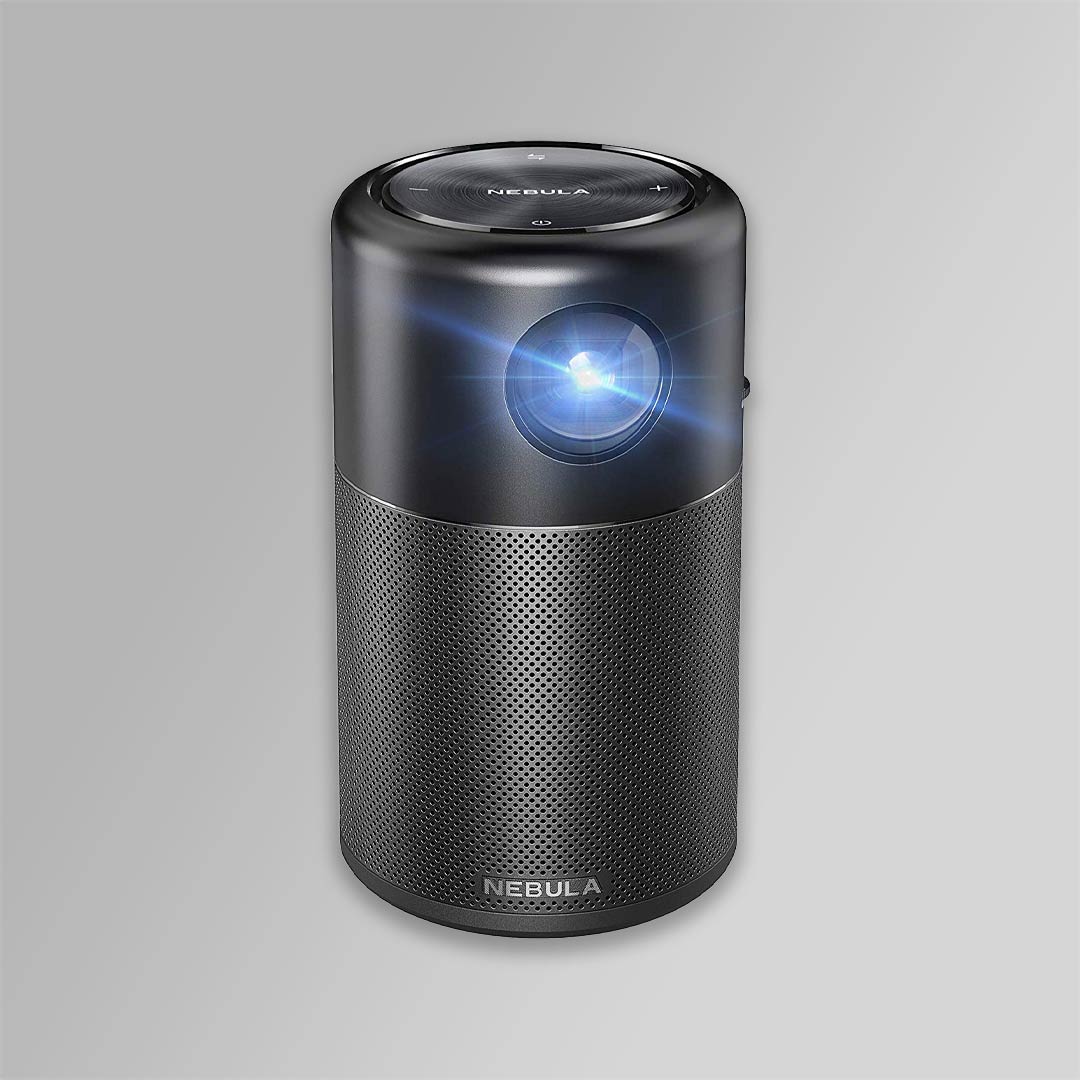
Portable projectors function by using either LED, LCD, or DLP technology to project images from a variety of sources like computers, smartphones, or USB drives. They are equipped with internal batteries, making them convenient for use in locations without direct power access. Key features often include a built-in speaker, HDMI and USB ports for connectivity, and wireless capabilities for screen mirroring or streaming. Some models also feature built-in media players, allowing users to play content directly from the projector. The resolution and brightness of portable projectors vary, with higher-end models offering full HD or 4K resolution and brighter images, suitable for both dark and moderately lit environments.
Variations among portable projectors include their image quality, battery life, size, weight, and additional functionalities like Bluetooth audio output, touchscreen controls, and interactive features. High-end models provide sharper images with higher resolution, longer battery life, and more versatile connectivity options.
Popular portable projector models include the Anker Nebula Capsule and the Epson EF-100. The Anker Nebula Capsule is known for its ultra-portability and Android-based interface, making it a versatile option for entertainment on the go. The Epson EF-100 stands out for its higher brightness and larger projection size, suitable for both home and small office environments.
47. Portable printers
Portable printers are compact, mobile printing devices designed for on-the-go printing needs. They cater to professionals who travel frequently, as well as anyone needing to print documents or photos outside of a traditional office environment.
View in gallery
Portable printers function by connecting wirelessly to devices such as smartphones, tablets, or laptops, often via Bluetooth or Wi-Fi. They are designed to be lightweight and small enough to fit into a briefcase or backpack. Despite their small size, these printers can produce high-quality prints, and some models are capable of printing in color. Key features often include battery-powered operation, the ability to print directly from mobile apps or cloud services, and simple, intuitive interfaces. Some models are specialized for photo printing, offering high-resolution prints and compatibility with different photo paper sizes. Advanced portable printers might include features like NFC (Near Field Communication) for tap-to-print functionality, or the ability to print on various media types, including labels and receipts.
Variations among portable printers include their print quality, speed, battery life, and the range of printing materials they support. High-end models typically offer faster printing speeds, longer battery life, and higher print quality, along with more versatile connectivity options.
Popular models of portable printers include the HP OfficeJet 250 and the Canon PIXMA TR150. The HP OfficeJet 250 is renowned for its all-in-one capabilities, offering printing, scanning, and copying on the go, while the Canon PIXMA TR150 stands out for its compact design and high-quality prints, suitable for both documents and photos.
48. Smart thermostats
Smart thermostats are technologically advanced temperature control devices designed for home automation and energy efficiency. They offer a more intuitive and convenient way to manage home heating and cooling systems compared to traditional thermostats.
View in gallery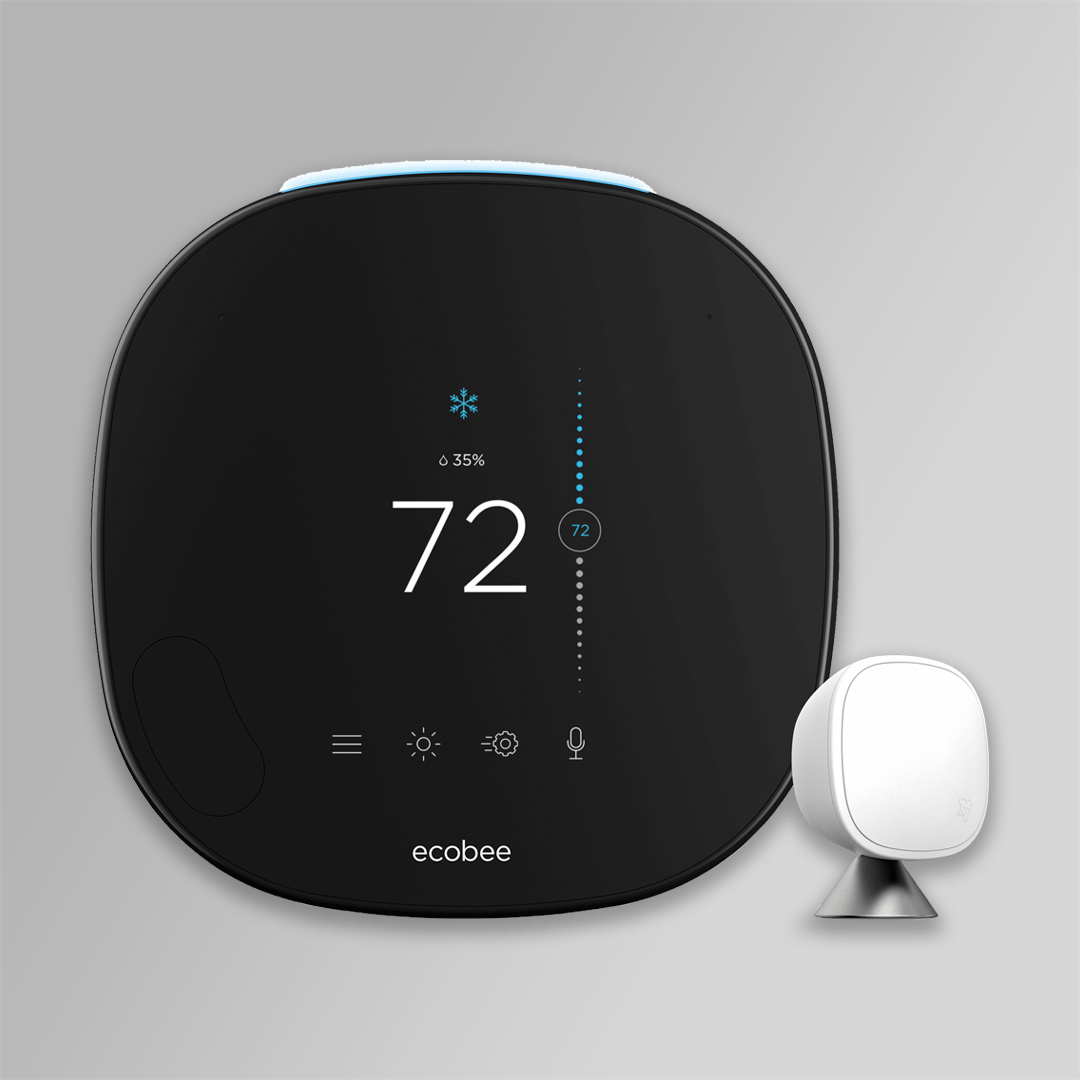
Smart thermostats function by connecting to a home’s Wi-Fi network, allowing users to control the heating and cooling system remotely via a smartphone app, voice commands through smart home assistants, or even web interfaces. These devices can learn the homeowner’s schedule and temperature preferences to optimize comfort and energy usage. Key features often include the ability to set temperature schedules, remote monitoring and adjustments, and energy usage reports. Advanced models can detect when the home is occupied or empty, adjusting the temperature to save energy automatically. Some smart thermostats also integrate with other smart home devices, creating a more interconnected and efficient home automation system. They may include features like geofencing, which adjusts settings based on the user’s location, and compatibility with smart sensors to monitor and control the temperature in different rooms.
Variations among smart thermostats include their compatibility with various heating and cooling systems, user interface designs, learning capabilities, and additional smart features like air quality monitoring. High-end models typically offer more sophisticated learning algorithms, sleeker designs, and broader compatibility with home automation ecosystems.
Prominent smart thermostats include the Nest Learning Thermostat and the Ecobee SmartThermostat. The Nest Learning Thermostat is known for its self-learning capabilities and sleek design, while the Ecobee SmartThermostat stands out for its integrated Alexa voice control and remote room sensors for more precise temperature control throughout the home.
49. Car GPS navigation systems
Car GPS navigation systems are electronic devices designed to assist with route planning and driving directions in vehicles. They have become indispensable tools for drivers, helping to navigate unfamiliar areas, avoid traffic, and reach destinations efficiently.
View in gallery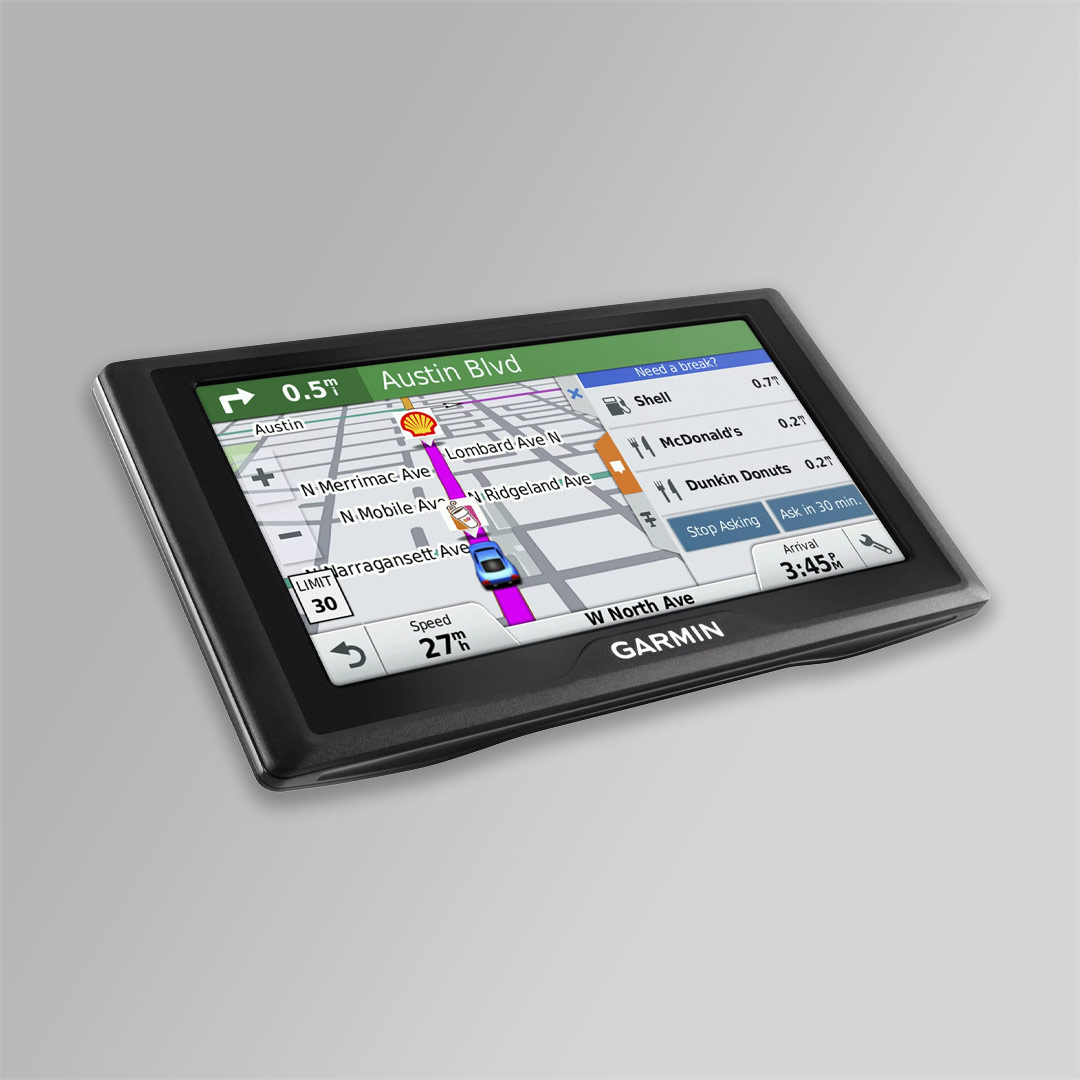
Car GPS navigation systems function by using satellite signals to determine the vehicle’s location and then provide real-time directions to the driver. They typically feature a touchscreen display to show maps and directions, and they can be voice-activated for hands-free operation. Advanced models offer features like live traffic updates, lane guidance for complex intersections, speed limit alerts, and points of interest like gas stations or restaurants. Many also include integrated Bluetooth for hands-free calling and, in some cases, smartphone integration for additional functionalities like messaging or music streaming. The system calculates the best route based on the desired destination, traffic conditions, and user preferences, offering alternative routes when delays are detected.
Variations among car GPS navigation systems include their screen size, map update frequency, route calculation speed, and additional features like 3D mapping or parking assistance. High-end models typically provide larger and clearer displays, more frequent map updates, faster processors for quicker route recalculations, and advanced features for a more comprehensive navigation experience.
Popular Car GPS systems include the Garmin Drive series and the TomTom GO series. The Garmin Drive is known for its user-friendly interface, extensive driver alerts, and detailed maps, while the TomTom GO offers accurate traffic information, advanced lane guidance, and a robust set of smart features for connected driving.
50. E-book readers
E-book readers (also known as e-readers) are digital devices specifically designed for reading e-books and other digital publications. They have gained popularity among avid readers for their convenience and features that enhance the reading experience.
View in gallery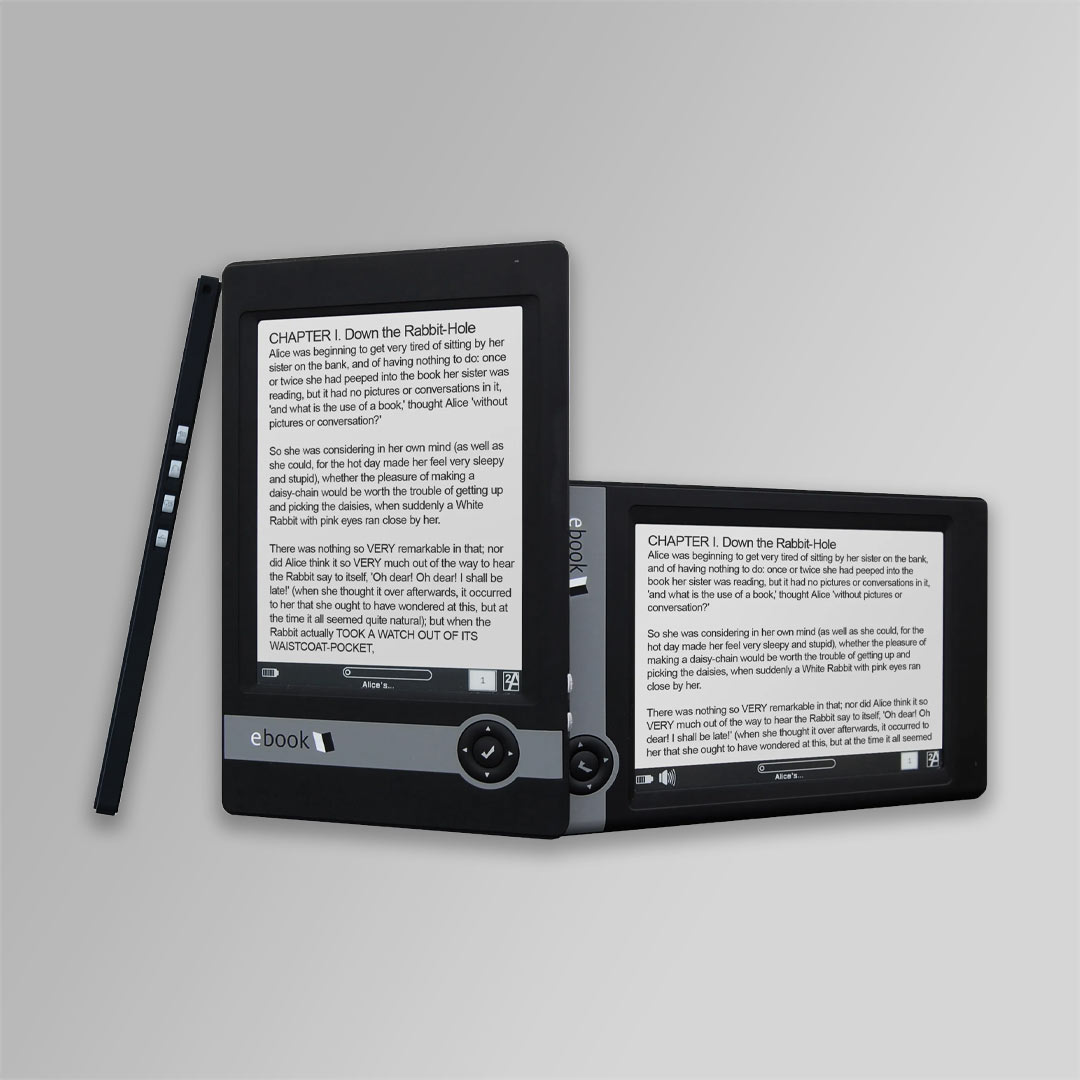
E-book readers usually use electronic ink (e-ink) display technology that closely mimics the appearance of ink on paper and is thus easier on the eyes than traditional backlit screens. These devices store hundreds or thousands of e-books, allowing users to carry a vast library in a single, lightweight device. Key features often include adjustable font sizes and styles, built-in dictionaries, note-taking capabilities, and long battery life, lasting weeks on a single charge. Many e-readers also offer backlighting or front-lighting for comfortable reading in various lighting conditions. Advanced models may include waterproof designs, Bluetooth connectivity for audiobooks, and integration with book services and libraries for easy access to a wide range of titles.
Variations among e-book readers include their screen size and resolution, storage capacity, connectivity options (Wi-Fi or cellular), and additional functionalities like touchscreen interfaces and color displays. High-end models typically provide sharper displays, larger storage capacities, and more advanced features for an enhanced reading experience.
Popular e-readers include the Amazon Kindle series and the Kobo Clara HD. The Amazon Kindle is renowned for its vast ecosystem of books, user-friendly interface, and options ranging from basic models to the high-end Kindle Oasis. The Kobo Clara HD stands out for its high-resolution screen, customizable reading options, and support for a wide range of file formats.
What is a gadget?
A gadget is a small, innovative, and often novel device designed for a specific practical purpose, typically offering a convenient and unique solution to everyday tasks. Gadgets are characterized by their portability, functionality, and often, their incorporation of advanced technology. They range from electronic devices like smartphones and digital watches to kitchen tools like smart toasters and coffee makers. The term ‘gadget’ typically implies something that is a novel addition to the existing array of tools and devices, bringing a new and often more efficient way of performing tasks. Their development is driven by the continuous advancement of technology, which allows for the miniaturization and enhancement of devices, making everyday tasks more manageable and often more enjoyable.
What is the importance of gadgets?
The importance of gadgets lies in the numerous ways they have made our lives more convenient. Gadgets facilitate communication, track and train health habits, improve efficiency at work and home, and entertain us with their novelty and utility. For example, devices like smartphones and computers keep people connected regardless of distance. Fitness trackers and smartwatches help monitor physical activities and health metrics, encouraging a healthier lifestyle. Gaming consoles and streaming devices provide access to a vast world of digital media. Smart gadgets such as thermostats, lighting systems, and home assistants contribute to energy efficiency and enhanced home security.
In short, gadgets reflect the advancement of human ingenuity and highlight our growing dependency on digital solutions in daily life.
How do gadgets affect society?
Gadgets affect society by enhancing efficiency and connectivity, but also present challenges, particularly in adolescent device addiction and family dynamics. Gadgets facilitate communication, with devices like smartphones and computers keeping people connected regardless of distance. In the realm of health and fitness, gadgets like fitness trackers and smartwatches help monitor physical activities and health metrics, encouraging a healthier lifestyle. For entertainment, gadgets like gaming consoles and streaming devices provide access to a vast world of digital media. In the home, smart gadgets such as thermostats, lighting systems, and home assistants contribute to energy efficiency and enhanced home security.
While gadgets offer numerous benefits, they also present several challenges. Concerns like privacy, data security, and the digital divide indicate the complexities of an increasingly connected world. The widespread use of gadgets raises questions about data privacy and the security of personal information. Additionally, the digital divide (the gap between those with and without access to modern information and communication technology) continues to be a significant issue, affecting educational and economic opportunities. More critically, gadgets have a profound psychological impact, especially on adolescents. A study on this demographic highlights how excessive gadget use can detrimentally affect family functioning and relationships. The study found a correlation between high levels of gadget addiction and decreased communication, role fulfillment, and emotional involvement within families, emphasizing the need for balanced gadget usage.
What is the impact of gadgets on our daily lives?
The impact of gadgets on our daily lives is profound, significantly altering the way we communicate, work, and entertain ourselves. Gadgets like smartphones, laptops, and smart home devices have made information and communication readily accessible, enhancing productivity and connectivity. They also offer convenient ways to manage daily tasks and control home environments. However, this reliance on gadgets can lead to issues like decreased physical activity, over-reliance on virtual interactions, and challenges in balancing offline and online life. The pervasive use of gadgets has reshaped everyday experiences, making digital integration a central aspect of modern life.
How does a gadget work?
A gadget works by using a combination of hardware and software designed for a specific function or set of functions. The hardware includes physical components like processors, sensors, and displays, while the software comprises programs that give the gadget its functionality. For example, a smartphone’s hardware enables it to capture photos, make calls, and connect to the internet, while its software allows for the operation of apps, managing settings, and processing data. Each gadget’s working mechanism depends on its intended purpose and design.
What is the purpose of a gadget?
The purpose of a gadget is to perform specific tasks or functions, usually with the aim of improving convenience, efficiency, or entertainment in daily life. Gadgets are designed to be practical, often incorporating innovative technologies to address particular needs or challenges. They range from simplifying routine tasks, like cooking and cleaning with smart kitchen appliances, to enhancing communication and productivity with smartphones and computers. Gadgets also serve recreational purposes, providing entertainment through devices like gaming consoles and e-readers. The overarching goal is to enhance the quality of life by making tasks easier, quicker, or more enjoyable.
Does “gadget” refer to technology?
Yes, “gadget” often refers to technology, because technology is what makes gadgets function. Gadgets typically embody technological advancements and are designed with specific functionalities that utilize technology. This includes a wide range of products, from everyday household items enhanced with new features to cutting-edge electronic devices. However, the term can also extend to non-electronic tools that offer novel solutions or improved efficiency for various tasks. In essence, while gadgets are commonly associated with technology, they encompass a broader scope of tools and devices.
How to choose a gadget?
To choose a gadget, consider your specific needs, preferences, and budget. Here’s a systematic approach to help you choose a gadget.
- Identify your needs. Determine the primary purpose of the gadget. Is it for communication, work, entertainment, health, or a combination of these? Specify any essential features or functionalities you require, such as camera quality, processing power, battery life, or compatibility with certain software.
- Set a budget. Establish a budget range for the gadget. This will help narrow down your options and prevent overspending. Consider long-term costs, including accessories, maintenance, and data plans if applicable.
- Research brands and models. Look into various brands and models that meet your specific needs. Read reviews, watch tutorials, and check ratings to understand their performance, reliability, and user satisfaction.
- Check for compatibility. Ensure the gadget is compatible with other devices or software you use. This is particularly important for items that are part of a larger ecosystem, like smart home devices or accessories for existing electronics.
- Test before buying. If possible, test the gadget or seek hands-on demonstrations. This can give you a better feel for its usability and whether it meets your expectations.
What is the average cost of gadgets?
The average cost of gadgets varies widely, typically ranging from $50 to over $1000, depending on the type and specifications of the gadget.
- Type of gadget: Smartphones, laptops, and high-end cameras will generally be more expensive than simpler gadgets like fitness trackers or Bluetooth speakers.
- Brand: Well-known brands often charge a premium for their products.
- Features and specifications: Higher specifications like increased storage, better resolution, or advanced technology features can significantly raise the price.
- Release date: Newly released models are usually priced higher than older models.
- Build quality and materials: Durable materials and superior build quality can increase the cost.
- Additional accessories or services: Costs can also escalate with added accessories or subscription services.
This range and factors are indicative, and prices can fluctuate based on market trends, regional differences, and sales promotions.
How long do gadgets last?
Gadgets typically last between 2 to 5 years, but this range can vary widely based on the type of gadget and usage patterns.
Factors Influencing Gadget Lifespan:
- Usage frequency: Regular, intense use can shorten a gadget’s lifespan.
- Build quality: Higher quality materials and construction lead to longer durability.
- Battery life: For battery-operated gadgets, the lifespan of the battery can determine the overall life of the gadget.
- Technology advancement: Rapid advancements can make gadgets obsolete quicker.
- Maintenance and care: Proper maintenance and careful handling can extend a gadget’s life.
- Environmental conditions: Exposure to extreme conditions like heat, humidity, or dust can affect longevity.
What are some gadget ideas?
Gadget ideas encompass a range of innovative devices designed to simplify tasks, enhance entertainment, or improve lifestyle. Here are some popular gadget ideas:
- Smartphones: Advanced mobile phones with internet connectivity and a wide range of applications.
- Fitness trackers: Wearable devices that monitor physical activity and health metrics.
- Smart home devices: Gadgets like smart thermostats, lights, and security systems that automate and enhance home functions.
- Wireless earbuds: Compact, cable-free earphones with Bluetooth connectivity for audio playback.
- E-Readers: Digital devices specifically designed for reading e-books with e-ink technology for a paper-like display.
- Portable chargers: Mobile power sources for charging electronic devices on the go.
- Drones: Remote-controlled flying devices, often with cameras, used for aerial photography and recreation.
How to use gadgets for entertainment?
To use gadgets for entertainment, you can follow these steps:
- Identify your needs: Identify gadgets that offer entertainment features like streaming devices, gaming consoles, or VR headsets. Each provides a distinct entertainment experience, so consider whether this is for your personal use, or for entertaining guests and family members.
- Set up your gadget: Set up these gadgets by following the manufacturer’s instructions, which typically involve connecting them to your TV, computer, or other displays. Follow all manufacturer precautions in order to protect your investment and ensure proper, safe installations.
- Get to know its features: Explore their various entertainment options, such as streaming movies, playing video games, or experiencing virtual reality. Remember to regularly update the software for access to new features and improved performance.
- Integrate into home system: Consider integrating your entertainment gadgets with other smart home devices for a seamless experience. This boosts the utility and enjoyment you’ll receive from your expensive gadget.
What are the examples of the most influential gadgets?
Here are some examples of the most influential gadgets, each with a detailed explanation:
- Smartphone: The smartphone has fundamentally changed personal communication by integrating features like internet connectivity, high-quality cameras, and GPS navigation into a single, portable device. It has become a central tool for daily life, impacting social interaction, business, and entertainment.
- Personal computer: The personal computer democratized access to computing power, allowing individuals and businesses to process data, create content, and connect to the internet from their homes and offices. It has been instrumental in the digital revolution.
- Digital camera: Digital cameras transformed photography by shifting it from film to digital, enabling instant photo viewing, editing, and sharing. This technology has also been pivotal in the rise of digital media and social networking.
- Portable music player (iPod): The iPod changed the music industry by making it easy to store and play thousands of songs on a compact, portable device. Its integration with iTunes also pioneered the digital music sales model.
- Smartwatch: Smartwatches have extended the capabilities of the smartphone to the wrist, offering features like fitness tracking, notifications, and even mobile payments, further integrating technology into everyday life.
What is the most-used gadget in the world?
The most-used gadget in the world is the smartphone. Its widespread use is attributed to its multifunctionality, serving as a communication device, internet access point, camera, and entertainment source. Smartphones have become ubiquitous in daily life, profoundly impacting social interactions, business operations, and access to information. Their portability and constantly evolving technology make them indispensable to a vast majority of the global population. The smartphone’s integration into nearly every aspect of modern life, from navigation to online shopping, solidifies its status as the most-used gadget worldwide.
What are the best gadgets in 2021?
Below is a list of the five best gadgets of 2021.
- MacBook Pro with M1 Max: The MacBook Pro with M1 Max chip offers unparalleled performance for creative professionals. It features a powerful processor, advanced graphics capabilities, and a high-resolution Liquid Retina XDR display.
- iPad Mini: The iPad Mini is compact yet powerful, with an A15 Bionic chip. It’s ideal for on-the-go productivity and entertainment, offering impressive processing power and a vibrant display in a smaller size.
- AirPods 3rd Generation: These earbuds deliver high-quality audio with spatial audio and dynamic head tracking. They offer improved ergonomics, longer battery life, and sweat and water resistance.
- Microsoft Surface Laptop Studio: This laptop is designed for creative professionals, featuring a versatile form factor, high-end processing power, and a vibrant touchscreen with Surface Pen support.
- Samsung Galaxy Z Fold 3: The Galaxy Z Fold 3 stands out with its foldable display, offering both smartphone and tablet functionalities. It includes features like under-display camera technology and S Pen compatibility.
What are the best gadgets in 2022?
Listed below are the five best gadgets of 2022.
- Steam Deck: Valve’s Steam Deck is a portable gaming PC, offering powerful gaming performance in a handheld format. It supports a vast library of Steam games and features a custom APU developed for high-fidelity gaming.
- Apple iPhone 14 Pro Max: The iPhone 14 Pro Max is a high-end smartphone featuring a large, vibrant display, advanced camera capabilities, and powered by Apple’s A16 Bionic chip, offering enhanced performance and efficiency.
- Apple Watch Ultra: This is a rugged and durable smartwatch designed for extreme conditions, featuring a larger, brighter display, enhanced GPS capabilities, and a range of health and fitness tracking features.
- Meta Quest Pro: A cutting-edge virtual reality headset from Meta, offering advanced mixed reality experiences with high-resolution displays, eye and face tracking, and a comfortable, ergonomic design for prolonged use.
- Amazon Fire 7: An affordable, compact tablet from Amazon, featuring a 7-inch display, integrated with Amazon’s ecosystem for easy access to books, movies, and Alexa services, suitable for casual use and media consumption.
What are the best gadgets in 2023?
Below are the five best gadgets of 2023.
- Meta Quest 3: The successor to the Meta Quest 2, this is a standalone virtual reality headset offering improved graphics, a more comfortable design, and enhanced tracking capabilities for an immersive VR experience.
- Google Pixel Tablet: A modern tablet from Google, leveraging the Android ecosystem, known for its seamless integration with Google services and tools, offering a balanced mix of performance and portability.
- Sony WF-100XM5: The latest in Sony’s WF-1000 series, these are premium wireless earbuds known for their exceptional noise cancellation, sound quality, and a design that prioritizes comfort and battery life.
- JBL Clip 4 Eco Speaker: A portable and eco-friendly Bluetooth speaker by JBL, made with recycled materials, known for its robust sound quality, durable design, and integrated carabiner for easy attachment on the go.
- Apple MacBook Pro M3: A high-performance laptop from Apple, powered by the next-generation M3 chip, offering enhanced processing power, improved graphics, and a focus on creative professionals with its Retina display and advanced features.
What are the best gadgets in 2024?
The following are the five best gadgets in 2024.
- iPhone 16: The iPhone 16 is slated for fall 2024, and will increase the screen size of the base model to 6.3 inches and the pro to 6.9 inches. The 15 Pro’s Action Button makes a return, adorning all models of 16. The iPhone 16 will have a dedicated Capture button for shooting photos and videos on the fly.
- Samsung Galaxy Ring: The Samsung Galaxy Ring is an upcoming smart ring, set to release in 2024, designed to offer health and wellness features such as ECG measurements, temperature monitoring, and potentially the ability to control connected smart devices.
- Samsung Galaxy S24: The Samsung Galaxy S24 series, including the Galaxy S24 Ultra, features enhanced gaming performance with advanced thermal control, vibrant visuals with its bright display, and robust security with Samsung Knox. These models also emphasize environmental sustainability in their design, using recycled materials.
- Apple Watch X: The Apple Watch X is an upcoming wearable product rumored to feature a thinner case, new band attachment methods, and a microLED display for improved battery life and display quality. Key health features allegedly include blood pressure monitoring and sleep apnea detection.
- Apple Vision Pro: The Apple Vision Pro is an advanced augmented reality headset featuring intuitive control through eye tracking, hand gestures, and voice commands. It is equipped with dual Apple silicon chips, including the M2. It offers an immersive experience with the ability to take 3D photos and videos, and supports an “infinite canvas” for displaying content in the space around the user, with a dedicated visionOS operating system and a redesigned FaceTime experience
What are the advantages of gadgets?
- Improved communication: Gadgets like smartphones and tablets facilitate instant messaging, video calls, and social networking, connecting people across the globe.
- Enhanced productivity: Laptops and smart office tools improve work efficiency with powerful processing capabilities and multitasking features.
- Access to information: Devices like e-readers and tablets provide instant access to vast digital libraries and online resources.
- Health and fitness tracking: Wearables like fitness trackers monitor physical activities, encouraging a healthier lifestyle.
- Entertainment and recreation: Gadgets like gaming consoles and streaming devices offer diverse entertainment options for relaxation and leisure.
What are the disadvantages of gadgets?
- Decreased physical activity: Excessive use of gadgets can lead to a sedentary lifestyle, contributing to health issues.
- Overdependence: Reliance on gadgets for everyday tasks can reduce self-reliance and problem-solving skills.
- Privacy concerns: Gadgets, especially those connected to the internet, can pose risks to personal privacy and data security.
- Social isolation: Heavy gadget use might lead to reduced face-to-face interactions, impacting social skills and relationships.
- Environmental impact: The production and disposal of gadgets contribute to environmental concerns, including e-waste and resource depletion.
Are gadgets addictive?
Yes, gadgets can be addictive and even lead to a multifaceted type of memory disorder called “digital dementia”. Digital dementia is the result of simultaneous overstimulation of the left brain and chronic understimulation of the right brain. As the right brain is linked to concentration and cognition, overindulgence of digital gadgets like smartphones can lead to impaired attention span and memory, as well as expedition of early-onset dementia.
The addictive nature of gadgets, especially smartphones and gaming devices, is often attributed to their constant connectivity and the instant gratification they provide. Excessive use can lead to dependency, impacting mental health, sleep patterns, and social interactions. The design of many apps and games, which often include reward mechanisms, can also encourage prolonged use, potentially leading to addiction. It’s important to use gadgets mindfully and maintain a balanced digital lifestyle.
Are gadgets harmful for the environment?
Yes, gadgets can be harmful to the environment. The environmental impact of gadgets arises from their manufacturing, usage, and disposal processes. Manufacturing consumes significant resources and energy, often involving hazardous materials that pollute the environment. Energy consumption during usage, particularly for devices that require frequent charging, contributes to carbon emissions. Finally, improper disposal of gadgets leads to e-waste, which is a growing environmental concern due to the toxic substances they contain and the challenges in recycling electronic components.
What more should I know about gadgets?
Here are five important things to know about gadgets:
- Functionality and purpose: Gadgets are designed for specific functions, from communication and productivity to entertainment and health monitoring. Understanding the primary purpose of a gadget is key to making the most of its features.
- Technological advancements: Gadgets often incorporate the latest technology, offering improved performance, efficiency, and user experience. Staying informed about technological trends can help in choosing the most suitable gadgets.
- Environmental impact: The manufacturing, usage, and disposal of gadgets have environmental implications. Being aware of these impacts, such as e-waste and energy consumption, is important for responsible use.
- Security and privacy concerns: With increased connectivity, gadgets pose risks to data security and personal privacy. Understanding and implementing security measures is crucial.
- Maintenance and upkeep: Proper care and regular updates can extend the life of gadgets and ensure they function optimally. It’s important to follow maintenance guidelines and stay updated on software changes.
These aspects are crucial for maximizing the utility and service life of your gadgets while reducing financial and material waste.
What is the history of gadgets?
The history of gadgets is a fascinating journey through innovation and technological advancement. It begins with simple tools and evolves into today’s highly sophisticated devices. The early 20th century marked the beginning of the “gadget era,” with the introduction of items like radios and cameras. Post World War II, the development of electronics led to gadgets becoming more common in households. The late 20th and early 21st centuries saw rapid advancements with the emergence of personal computers, mobile phones, and the internet. Each decade brought new technologies, shrinking devices from room-sized machines to handheld essentials, making gadgets integral to daily life.
How do gadgets evolve?
Gadgets evolve through a continuous process of technological innovation and user feedback. Over time, they become more advanced, efficient, and user-friendly.
- Early 20th century: Introduction of radios and cameras.
- 1950s-1960s: TVs and hi-fi systems become household staples.
- 1970s-1980s: Personal computers and gaming consoles emerge.
- 1990s: Mobile phones and digital cameras gain popularity.
- 2000s: Smartphones and high-speed internet redefine connectivity.
- 2010s: Smart home devices and wearables advance further.
- Current era: Focus on integration, AI, and sustainability.
What is the future of gadgets?
The future of gadgets is expected to be heavily influenced by advancements in artificial intelligence (AI), the Internet of Things (IoT), and sustainable technology. Gadgets are likely to become more interconnected, intuitive, and environmentally friendly. Emphasis on AI will make gadgets more predictive and personalized, while IoT integration will lead to smarter homes and cities. Additionally, with growing environmental concerns, the focus will shift towards developing gadgets that are more energy-efficient and made from sustainable materials.
What is the difference between a gadget and a device?
The difference between a “gadget” and a “device” primarily lies in their connotations and specific usage contexts. A gadget typically refers to a small tool or object that is novel or ingeniously designed, often used for a specific practical purpose, and usually has a technological aspect. Devices, on the other hand, can be any sort of machine or equipment, and the term is broader and less specific. Devices may not necessarily incorporate innovative technology or be as compact as gadgets. Gadgets are often seen as a subset of devices, emphasizing their unique, convenient, or clever design elements.

